Written by Paul Baldwin - https://pbracereports.blogspot.com/
The result
 |
| UTMB Finish Line in Chamonix |
Goals and targets
 |
| The fine weather meant stunning views: Monte Bianco from the Courmayeur ski area |
Goals and targets – a “good race”?
 |
| Leaving Lac Combal with the Col des Pyramides Calcaires in the background |
 |
| Always smile for the cameras! |
Impressions of the race
 |
| Emotional atmosphere at the start line |
 |
| Thunderstorm clouds gathering at the Col de Ferret |
 |
| View of Courmayeur valley from Bertone refuge |
Race tactics - Pacing
Race tactics – Aid stations
 |
| The old village of Dolonne before Courmayeur aid station |
 |
| Leaving the Col Checruit aid station, one I managed to run straight through |
Race tactics – Sleep deprivation
 |
| Sunrise over Courmayeur from the Col de Ferret |
Race tactics – Ascending and descending
 |
| Contemplating the last big climb |
 |
| Running from Refuge Bertone up the Ferret valley with the Col at the far end |
Race tactics – Nutrition
 |
| A race powered by oranges and melons |
Crew and support
 |
| My race crew extraordinaire made it all possible |
Written by Tina Reed
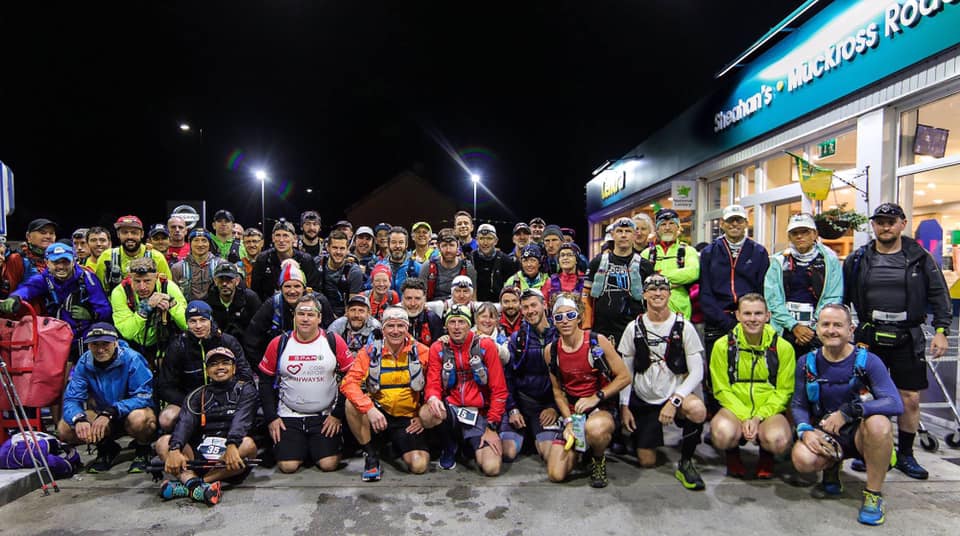
Race Start Photo by Valerie O’Sullivan
I started running when I was 40, thirteen years ago. I remember I used to go to a playgroup in Park Road Killarney where there is a lovely view of Mangerton and Torc at the back. I was there with my two children who were very little then, and I used to look up at the mountains and wonder how you got up to the top. One of my first races was an IMRA race up Mangerton, and I came a solid last, but I loved it! The mud, the rocks, the wild wind and the views, the whole idea of chasing up and down a mountain as fast as you could, and the chat afterwards. From there I started doing adventure races, mostly in at the deep end doing the Beast probably 8 times over the years. The Beast is a great event, multi-sport, teams of 4, usually over 3 days on average, no sleep and a route to follow within a certain time limit. My husband Pat was on the same team, and we had a great time. We also did the Killarney Hardman two years ago, the Ironman distance, which is 3.8km swim in the lake (scary), followed by 180km cycle around the Ring of Kerry (where I was so far at the back the people on the food stops had gone home) and a 42km marathon distance around Ross Castle area to finish up ( I was much more at home doing the running section!). I finished in 16hours and 50 minutes. 17 hours is the Ironman cut off. There was the Burren marathon, and Connemara, and gradually the Ultras came in. Last year I did quite well in a couple of races, 3rd woman in the SlÍ Gaeltacht MuscraÍ, a 70km ultra, and 2nd woman in the Ballyhoura Ultra, first woman in Slievenamuck Trail Marathon.
The ultras were starting to happen, and I had my eye on two bigger distance races, the Wicklow Way Solo- 80 miles, and of course the Kerry Way Ultra at 120 miles. In total, over the last 5 years, I’ve entered each of those races 4 times, and between them DNF’d 7 out of 8 times!!! ….And smashed one of them once! The Kerry Way Ultra, this year 3 days ago now, 120 miles in a time of 37 hours and 26 minutes. The cut off is 40 hours, and never in my wildest dreams did I think I’d come in so far ahead of the final cut off. After 7 out of 8 DNF’s in long races, over a 5-year period I had decided this was my last attempt! If I’m honest, in my heart I gave myself less than 50:50 chance of finishing, but not only did I finish in a pretty reasonable time, I also felt fantastic pretty much the whole way through, relaxed composed and even enjoying it. It really was as though my body was possessed by a proper Ultra Runner! It was a bit like the scene in Ghost where Whoopi Goldberg’s body is taken over! So how did it happen! ?
To me, there are 3 key things that translate to success in a long race like KWU- big shoes 2 sizes too big, knowing how to look after yourself in the mountains , and being able to eat so you can keep going.
Firstly, the big shoes are needed because your feet swell up and then they rub on your shoes and you get blisters. Big shoes= no blisters, for me it’s as simple as that. We have a book called Fixing Your Feet, an epic page-turner devoted entirely to not getting blisters or sore feet. Well I don’t find any of it is needed when you wear big shoes! There are socks with two layers, or Compeed, or even the torture method of hardening your feet with Friars Balsam prior to a race, and then injecting any race blisters with surgical spirits. This method was introduced to us by Damon de Boor from South Africa, and perfected by Brian Harman, who both raced with us one year on the Beast. The entertainment value was massive (as long as you weren’t the one being injected …big big ouch). There are a couple of risks with big shoes, one being that that they might come off in sticky mud, but if you do the laces up just right, and try to avoid the stickiest boggy bits, it works just about. Another problem is that they make your feet a bit clumsy, which can be tricky if you’re racing over technical ground, in which case I’d be sticking to the normal size shoes. But for Ultra distance races, where you need the big shoes due to your feet swelling, I find for me that I’m not running at a crazy speed downhill anyway. The pace is a bit slower on a long day out, so the clumsy side of big shoes doesn’t matter so much. Keeping your toenails really short also helps and filing them down with a nail file. I have one funny toenail that I file the surface of as well as the end, and this stops it getting sore.
The second thing that I think is key to surviving long ultra races is being able to look after yourself out on the trails and especially in the mountains. A lot of that is about keeping warm and having the right clothes to keep warm and dry, but without carrying so much that you’re wasting energy with a heavy bag. Full rain gear, a hat and gloves are always mandatory items, and in a summer race like Kerry I usually wouldn’t take any more than that. Rain gear can be used as an extra layer for warmth, not just for rain. I would decide on the day whether to take a heavier or lighter rain jacket. I have the Columbia Outdry rain jacket, and it is fantastic, waterproof ,windproof and breathable. I rarely use the rain leggings, but they act as the ultimate extra layer if it really gets cold or wet. The hat and gloves are excellent for regulating your temperature quickly. If it’s cold and I’m wearing the rain jacket, I keep my hat in the pocket of my jacket so I can access it easily without taking the bag on and off. I often find I might get hot and want to take the jacket off, but not sure if big lurking clouds are going to translate to rain or if they’re going to blow over, so I might tie the jacket round my waist to save the time it takes putting it in the bag, especially if I’m not sure if I’m going to need the jacket again soon. If the jacket is in the bag and you’ve just wasted time putting it away, you might hope it will stop
raining and before you know it, you’re soaked through and then decide to put the jacket on, by which time you’re getting cold, and you’re then wearing a wet layer underneath. It’s all about minimising the time you spend faffing, and if you can regulate your temperature without stopping to put things in and out of the bag, you save a lot of time, and keep moving so keep warm. If things really do go wrong and you have to stop, you’ll get cold very quickly, but you’re carrying a foil blanket, which is also mandatory, so you can wrap up in that, and blow the whistle/phone for help. The phone needs to be kept dry in a plastic bag, and you need to make sure it’s charged. You need to have your maps to hand, and water and food where you can access it, again carrying enough to last the section you’re on, but not an unnecessary amount that just makes the bag overly heavy and slows you down. It seems obvious, but it’s so important to have a good head torch with a spare battery, and to make sure that it’s all charged. I also like to carry a spare head torch in addition. You really are in trouble without light on a mountain at night. Sometimes it’s actually too hot and sunny on a race, and for me, I really need to manage the heat, or I get nauseous, and that leads to not eating, and to low energy, slowing down and big trouble! So, my technique for keeping cool is wearing a big hat. This does two things, it keeps
the heat and sun off my head and face, very important for avoiding sunburn! I find I don’t like putting sunscreen on my forehead above my eyes because it runs into your eyes with the sweat and makes them sting. It also just runs off, so you need the hat for the shade. The second thing the hat does is act as an excellent bucket for dunking into streams and puddles and pouring over your head. I do this constantly, and it is fantastic. Even in KWU this year, it wasn’t really that hot, but I find any bit of sun uncomfortable, so the moment the sun came out I started soaking my hat and pouring it over my head! Tip the head back, and the water runs down your back, an excellent wake-up, and cooled down in no time. I’m so addicted to soaking my hat in water, that in KWU coming over the section into Kenmare after Templenoe, when I couldn’t find any proper puddles or streams, I had to make do with a soggy bog for dunking the hat. So, I looked a bit plastered in mud when I rocked into Kenmare, and the marshals and crew were most entertained and thought I must have taken a dive headfirst into the bog. I’ll also be sure to put on factor 50 before the race regardless of the weather forecast, and add
more if it’s got washed off in the rain by the time the sun comes out!
Another thing important to surviving in the wilder sections is not getting lost. I’m not the best at that! I have to say I was very lucky in KWU not to go wrong…I ran with Adolfo for a lot of it, and he knows the route really well…and often told me which way, which saved me getting a map out, and a couple of times called me back when I’d gone past a marker. And I thought I knew the way pretty well! So, reccee-ing the route is really important, even though it’s way-marked you can so easily go past markers, and I find when you’re tired, everywhere goes into a different dimension, and things seem so much further, so you get confused as to where you are. The third thing that I think is key to survival (and to success!) in long races is being able to eat. I’ve always really struggled to eat in ultramarathons, finding that I get nauseous. All your energy is going into running, not digesting, and if it’s hot, all the blood is going to the surface to cool down, rather than to digestion. But if you don’t eat, you don’t have the energy to keep going. That’s fine for me if I’m doing less than 50 miles, but any more than that I don’t find possible without refilling the tank. Nausea has been the biggest reason for the DNF’s for me in the past. I remember in the KWU in 2015 I could barely eat and was feeling nauseous from about 70miles. I got slower and slower, more and more tired and more and more distressed, disheartened and negative, and eventually pulled out after 110 miles (only 10 miles from the finish), but already going for 40 hours, so I wouldn’t have made the cut off. Even still I was so gutted when I woke up in the morning and realised I’d stopped so near to the end. In fact, I was so mad with myself that I went out a month later with Pat crewing and Alan Murphy for company and did the whole thing again. We did it, but unfortunately it took 48hours!! So, I still had to come back and keep trying to get under the 40-hour cut off. This year I managed to eat and to keep the nausea just about under control. So how did I manage that? Well it’s all about not pushing so hard that you start to feel sick. So, I had to keep just under that pace, and I also was careful to run the last mile into each check point steadily and slowly so as to arrive with a calm tummy, and the same with the first mile out, in order to let the food digest. Of course, you have to run fast enough to keep to a realistic schedule in order to finish within the cut-off time, and to me this is the key: being fit enough that you can run at a decent pace without having to try too hard. So, it comes down to training , and I’d done a lot in the year before this KWU, and it paid off. In terms of mileage I had 12 weeks out of 35 in the lead up to Kerry where I hit 50 miles or more. I found it’s not just about building miles, but having sessions where you’re pushing the heart rate up, and I did regular hill repeats with a group on a Friday night, and long runs every so often with West Cork Trail Runners, who I can’t keep up with, so had to push really hard…that all made a big improvement to the fitness levels. I took up Pilates with the tough Glen Flesk crowd on a Tuesday morning, and that made a massive difference too. Pilates and core strength was something I’d ignored for many years, and when I first joined the group, I thought how hard could it be, but oh no! I’d be in agony every week for a long time, as I struggled to keep my balance and do the exercises whilst the gnarly regulars not only flew through them but with weights around their ankles (something I still haven’t progressed to!!). Coffee and chats afterwards is always the high point, and a nice reward for all the efforts!
We’d also been lucky enough to spend 4 months in southern Spain in the Sierra Nevada Mountains at the start of this year (whilst working, as we are both quite mobile, me being an artist, and Pat being an engineer working online, and kids up and gone from the nest). So, we trained all the time in the hills, and towards the end I was running 50 + miles a week. Nowhere was flat, it was all up or down hill and it was hard. I managed to keep the mileage up when we got home, though had to switch to a bit of cycling and running on the flat for a little while, having aggravated my hamstrings a bit! It’s so hard to get the balance between training hard and not injuring yourself.
During the training leading up to KWU I thought a lot about nutrition, and what I could stomach during an ultra. Over the years doing the Beast, I found potato and soup to be the easiest food to digest. The Beast Adventure Race is usually around 3 days, so you need to eat, but the pace is less intense (at the level we are at!) so you don’t get so nauseous, so what you eat is not so critical. Finding what you can stomach is trial and error. I find salted crisps are good, and a recent winner is home-made bread containing nuts and dried fruit, with a lot of butter. Also, a slice of melon goes down well, oat-bars and a certain amount of jelly sweets. To drink, I have a carefully calibrated mix of High Five (1.5 scoops) and 1 Zero tablet with caffeine in one litre of water. On KWU this year I kept rigidly to this drink mix, and it worked really well. I also drank coke at every check point. I know you definitely can’t put coke in the bladder…I tried this before on a race and regretted it!! It expanded in the bag and wanted to fizz out everywhere… ! I’ve often taken gels on races under 50 miles, and I know that sugar/ caffeine hit works for a short time, but is not something I would chance on a longer race. It definitely gives you an upset tummy after 50 miles! So, I feel I really got the food combination right this year on KWU. The soup and potato which Pat had ready for me at each CP, the glass of coke, cup of tea, a few crisps, and a slice of melon. Then the buttered bread to go, to eat en route, and a few power bar jelly sweets. Also, extra strong mints, which I eat quite a lot of. I still did have times where I felt nauseous, but I kept it under control I also took 12 Gaviscon over the whole race, and some stronger anti-nausea tablets called Buccastem Buccal tablets which you put under your lip on the gum, and leave to dissolve. I told myself each time I took them that these were very effective and definitely work, and I’m sure that positive thinking helped. I took 5 of those over the race, after check points. If I was feeling nauseous leaving the check point, I had a Gaviscon jammed in my mouth and one of those fancy tablets under my upper lip and a slow march until I got my stomach under control. It worked and I was able that way to eat enough to keep going. I think that was the key to my success!
There are a few other things that significantly contributed to surviving and succeeding in the race, one of the main ones being the excellent crew support by my husband Pat. He has done KWU himself before, as well as The Spine and UTMB, and other long races and events. He’s also done a good bit of crewing for me , on all my DNF races! So, he knows what to do, how to do it efficiently and how to get me out as fast as possible. I probably saved 5 minutes per CP at least by having Pat and he was as systematic and efficient as a Formula One pit-stop crew. It’s much easier to save 5 minutes in a CP by leaving as soon as you can rather than beat yourself into exhaustion running hard to save 5 minutes. We had a checklist which we’d run through before I left each time, making sure I hadn’t forgotten anything, something we used to do on the Beast. Very helpful when too tired to think straight. Pat was also ready with motivational lines already written down, to help me over bad patches, but amazingly I didn’t ever need them. I was pretty much ecstatically happy the whole way around, which I never expected in a million years, and has certainly never happened to me before with all the many DNFs!
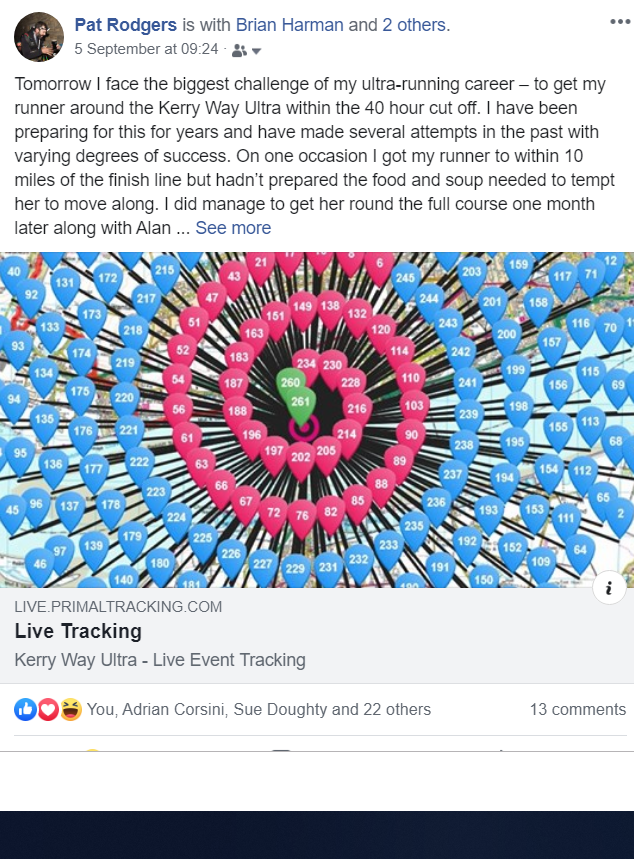
Another thing I find really important to my race is to have music going. I have almost 40 hours of music downloaded on Spotify (so I am not dependant on getting a signal) , carefully chosen to motivate me! A lot of people use headphones, but I find them very uncomfortable, so I just have the phone in the left pocket of my race pack and blast it out for all to hear. I did feel a bit guilty about interrupting the peace for others, but surprisingly you couldn’t really hear it unless you were beside me. Adolfo was very good, putting up with it for about 70 miles. He said it was marching music! As indeed it was, and it was like an injection of energy to me, keeping me going. I partied along listening to a huge variety of tunes from Eminem rap songs, and Mr Scruff ‘Get A Move On’ to Sex Pistols ‘I did it My Way’, to Shirley Bassey singing I Am What I Am! It was fantastic, and like my secret weapon, powering me along.
As I said, training had gone well this year, and I really did feel as ready as I’d ever be. A turning point for me was a recce run I did from Killarney to Glenbeigh along the route 6 weeks beforehand. I made it to Glenbeigh comfortably in about 9 hours, the kind of pace I needed to be doing on race day, feeling strong, hungry, happy and not nauseous. Suddenly it dawned on me that I might actually do it on race day, if I could keep that up. I did a few recces over the whole route, and that gave me confidence that I knew where I was going and could visualise it on race day. Of course, I live very close, so I have no excuse not to know the route, but I do have a terrible ability to get lost in my back yard, so I needed to spend time out on the course. It was that recce of the first 36 miles Killarney to Glenbeigh that really was a turning point for me though. I’d spent hours and hours poring over my race plan, looking at mileage, comparing splits from past runners, and figuring out the maximum time I could spend on each leg and still get to the finish in under 40 hours. I found that really helped me to know what I needed to do .
On past attempts I’ve just gone in with only a vague notion of the times I need to make, and I think you need the focus of target times for each leg.
One more thing that went well before the race was the amount of sleep I managed to get, I was sleeping 8 or 9 hours a night before the race, but I think this was in part due to being on antibiotics for a throat infection I’d picked up 2.5 weeks before the race. I was really very worried about the effect it was going to have on my energy levels, but as it turned out, I did recover, and I can’t say it really had any impact on the day.
My full focus for the week leading up to the race was to rest and eat well and being self-employed I let work take a back seat. This was 5 years I’d been training for Kerry, so it took priority. I scheduled my classes to start back for the new term after the race was finished, and although I had plenty of painting to do for my next exhibition, and a couple of commissions, I put it all on hold. Pat came with me to registration the night before the race, and we got there early and left early, so as to get home and get to bed as early as possible. My bag was packed, everything in its place, my race clothes were laid out, spare clothes, food and gear I might need along the way were all carefully packed so as to be found easily if needed. Everything was loaded into Ivan, our lovely self-build camper van, the ideal vehicle for crewing. So, alarm was set for 4.15am and I was in bed for 10pm, but of course I couldn’t sleep. My heart was racing, and my head was turning over the route, the times, would I be ok, had I got a sore throat coming, go and gargle saltwater, take a vitamin C, Google whether it’s possible to
develop a phantom sore throat before a race. Yes, it is, oh that’s ok then….so eventually I managed to get about 3 hours fitful sleep and was very happy when the alarm went off and I could get up and get on with it.
I had a bowl of porridge and a cup of tea, and Pat and I set off for the start line. It was exciting to see everyone there in the dark with their hats and head torches, pacing around full of anticipation and excitement, last minute bag faff, run to the loo again, adjust the laces…Then all the photos, and all of a sudden it was just a few minutes to go, and Valerie was trying to organise everyone to get in a pack for a photo, not easy with 86 people to crowd in. I found myself at the back, but Valerie had spotted me, and yelled out ‘Get Tina Reed in the front, get in there Tina…’ Very exciting! Maybe Valerie thought I was going to make the finish line and wanted to see me in the photo at the start…maybe this was going to be my day!! Photo was taken, and all of a sudden, we were off.
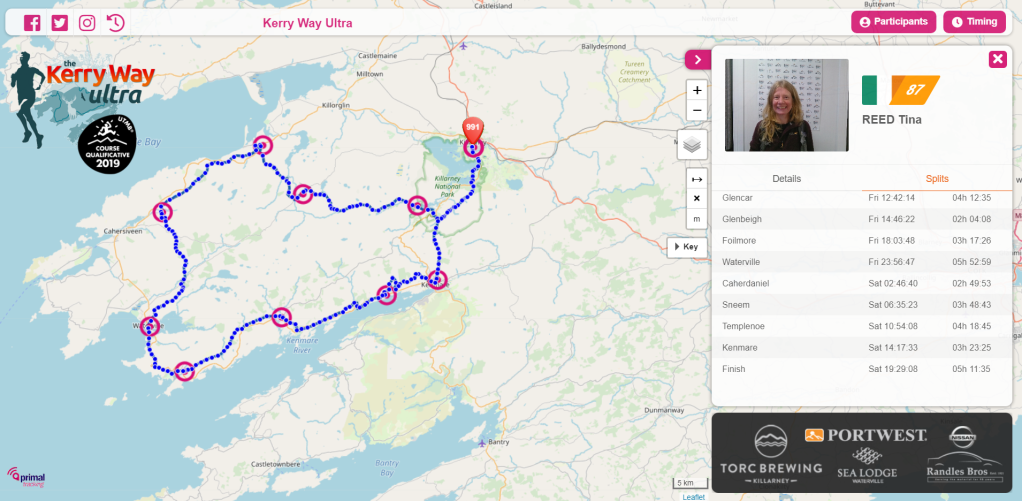
Killarney to Lord Brandon’s Cottage
Pat had the job of putting up markers in Muckross Woods which was a good idea. It’s a confusing enough route through Muckross, and the last thing you need at the start of a race is to take a wrong turn. The weather forecast had been for rain at the start, but it seemed to be staying dry, so Id opted to set off in tee-shirt only and shorts. I was soon glad I’d made that choice, plenty warm enough within the first mile. I started towards the front of the pack, and I think I was fairly close to the lead runners. My plan was to get to Brandon (the first check point) in 2 hours, 40 minutes, which would mean an average pace of 12.8 minutes per mile. I didn’t want to go too hard and get nauseous, which is often the temptation at the start of races. As it happened, I felt comfortable, and went along with the pack, doing 9-minute miles until about mile 3 when we got to the foot of Torc. I do like to get a bit of the race under my belt at a reasonable pace, and I was determined from the start not to be the dot that was falling off the back end, but at the same time I didn’t push too hard. I slowed down going up Torc and a few people passed me, it was just about daylight at this point and a nice fine drizzle was keeping us all cool. I ran along on my own, keeping Alan Murphy in sight, which was reassuring, and I settled into a comfortable pace. This section of the Old Kenmare Road is where a group of us used to run on a Wednesday night, so I knew it well. After a few miles the road narrows to single track, and the wet bog grass and bracken was close to the path making it harder to run. That soon gives way to sleepers and then to Esknamucky Glen where you start to pick your way over rocks, and things slow down a bit. Down to Galweys Bridge and it was a relief to get a nice short fast section along road and then back onto 3 miles of trail to Brandon Cottage and the first CP. There was no crew due to restricted access at this CP, and not needed only 12.5 miles into the race. Looking at my watch, I was delighted to see I had made it in 2 hours 27 minutes, and more to the point, I was feeling fantastic. Comfortable, relaxed and hungry. I knew what I had to do, I had it all planned. I knelt down at my drop bag, fumbled with the drawstrings, and grabbed the can of coke I had in there. Taking big swigs, I refilled my bladder with the bottle of pre-mixed High Five and Caffeinated Zero. I had my poles here at this CP, and I got them out of the back and extended them, took the buttered fruit-bread into my hand, closed up the drop bag, one more swig of coke, and I was off. All that took 3 minutes, and I was out of the CP at 8.30, already 15 minutes ahead of my schedule.
Lord Brandon’s Cottage to Glencar
I walked off down the road towards the Black Valley feeling really pleased with myself and tucking
into my bread. I was with 3 others for about half a mile, but I let them get ahead of me. I didn’t want to push too hard after eating. I decided to put on the music and picked Mr Scruff ‘Get A Move On’, just to amuse myself with the lyrics. I felt brilliant, I couldn’t believe it, I was actually enjoying it. The sun came out through the heavy cloud and there were really defined rainbows ahead in the Brida Valley, it was stunning. That didn’t last too long and it started to rain quite convincingly, so I stopped and put on the rain jacket. I had my heavy Columbia Outdry jacket, rather than a lighter one, which I’d thought would be better given the forecast, and knowing that it could be quite bleak and cold going up over the Brida Valley. I’d had a brief chat with Valerie at the start of the race, and she had told me she would be up at the top of the Lack Road, so I had that to look forward to, as we started the climb. At this point I was with a few people, from time to time, though mostly on my own. I quite like being on my own at the start of races, just to get into the swing of it, and to listen to my music without feeling like I’m annoying anyone around me. So, there was Valerie at the top of the Lack Road, as ever it was just so good to see her. She took a great photo of me waving one fist in the air with the hood of my rain coat up, striding up the hill against the rain and grey cloud. I suppose the pink jacket stood out nicely, and that got into the Saturday edition of the Irish Examiner, so it was out in circulation before I’d even finished the race!
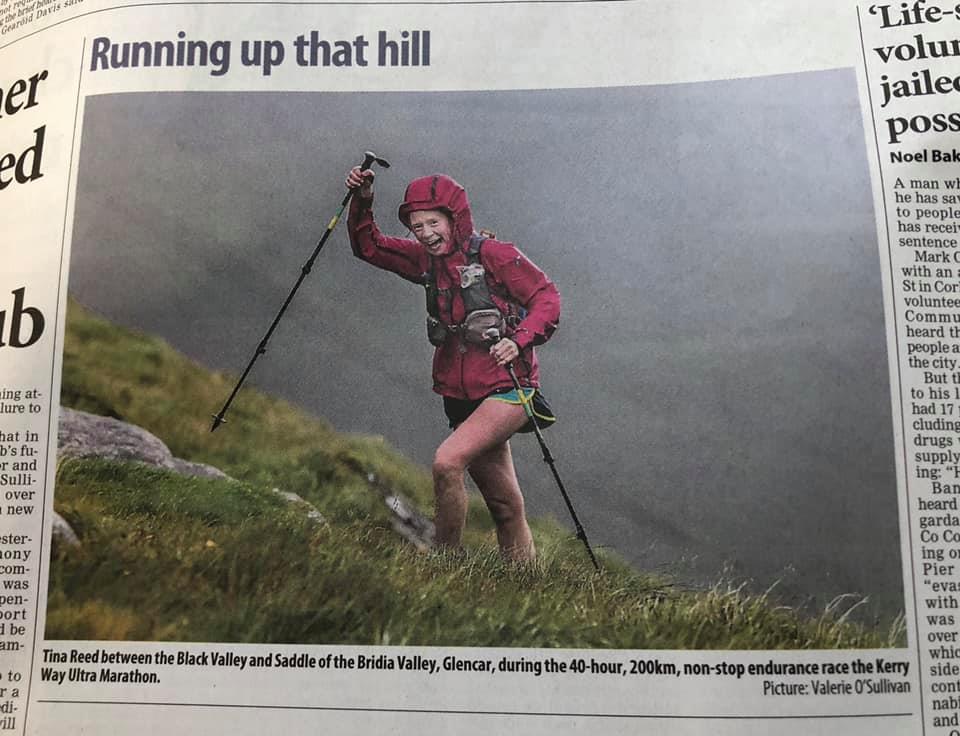
Irish Examiner Photo by Valerie O’ Sullivan
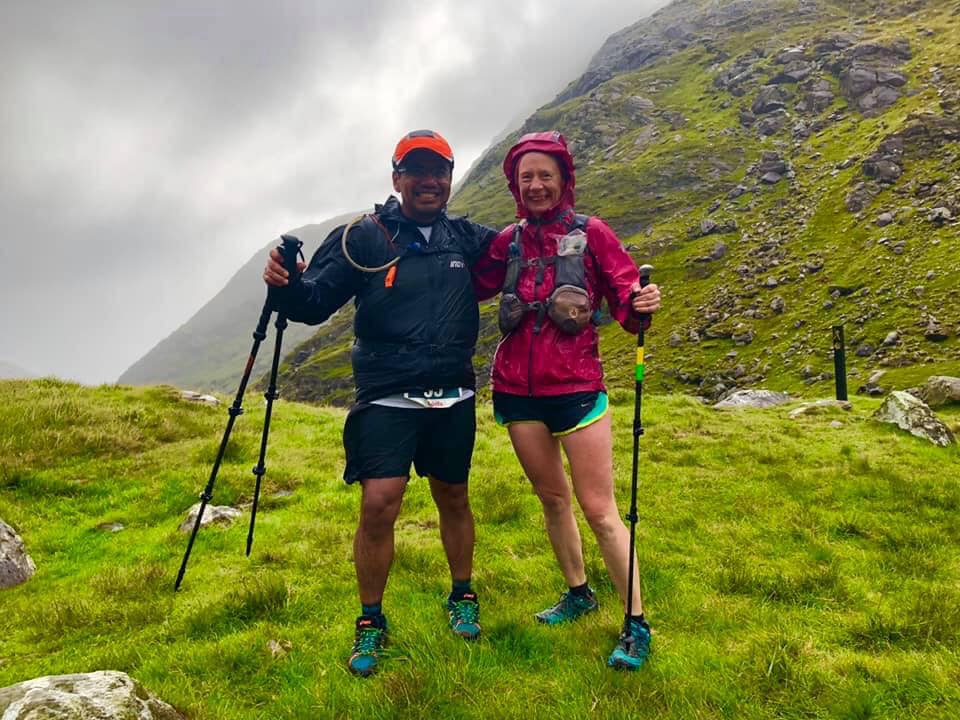
Top of the Brida Valley – Photo by Valerie O’Sullivan
It didn’t take too long to get down over the other side, the music was going, and my phone was wrapped in a zip-lock bag in my top pocket, on shuffle so I could keep wondering what the next song would be.
Next was up over the Lack Road, the path down the Lack Road is a bit tricky and technical in places, and along with the descent off the Brida Valley I knew this leg of the race could be slow for me. I’d allowed 4 hours to do the 14.8 miles from Brandon to Glencar. In the end I made it in exactly that time, which isn’t overly fast, but the terrain is technical and I’m slow on the downhills. About a mile out, I phoned ahead to Pat and told him I was close and what I’d like to eat. He was of course, watching me on the tracker, but it doesn’t always update if there’s a bad signal. I did this on the approach to all the check points, though after Glenbeigh it was Pat phoning me, because it was too hard to remember to phone after that! It was always good to talk to him though and gave me a nice focus on the last mile in, knowing that he was waiting there with the cup of tea, not too hot, not too milky and with sugar! I told Pat I’d like hot soup poured over cold mashed potato and tea and coke. He was parked 100yards ahead of the check point because there was a funeral going on and very limited parking, especially for our camper van Ivan, which is a long wheelbase Iveco Daily. Pat converted him to a camper, total luxury. So, there was Pat and I hopped in happily, delighted with myself. I knew I was feeling good, and I was on target, and had got a tough stage done. I managed to scoff the soup and potato to Pat’s delight. He’s had to put up with me getting nauseous and not eating in so many races, very tedious for
him to put in all the effort of being a superb crew and never getting his runner to the finish! We’d agreed it was going to be the last time, so I was really pleased to be getting off to a good start for Pat. Whilst eating, I gave Pat my Garmin watch, which he immediately plugged in to have ready for the next but one leg, and gave me his Garmin, which was freshly charged. We did this at each CP, so that I would always have a charged watch with me. I felt it was so important to keep an eye on pace and time. I took off my socks, and stuck my feet in a lovely bowl of warm water that Pat had ready for me. I put on clean dry socks but kept the same shoes. I changed socks at every CP, and it’s well worth taking the time to do that when it’s as wet and boggy as it was that weekend. If you have constantly saturated feet, you’ll get trench foot, which can be very painful. I took a portable battery pack to charge my phone, which I took on alternate legs as my phone needed. All done and off I went.
So, I took 15 minutes break at Glencar, and left at 12.42, 13 minutes ahead of schedule.
Glencar to Glenbeigh
The next leg was to Glenbeigh, 8.5 miles away, and I’d allowed 2 hours 20minutes. Pat walked with me for a couple of minutes, and I set off down a little track, and then alongside a river and out onto a forested road. It’s a nice section, there’s a little loop through Lickeen Woods, with a crag that looks good for climbing and reminds me of Pat when I see it! Then out into the open and up towards the Windy Gap. Adolfo was a few paces behind me at this point, and we went along in silence, it’s nice not to talk sometimes in races, and just get on with it, especially at the start, I think. Halfway up Windy Gap, Eddie Birmingham was there to greet us with a big cheery hello!
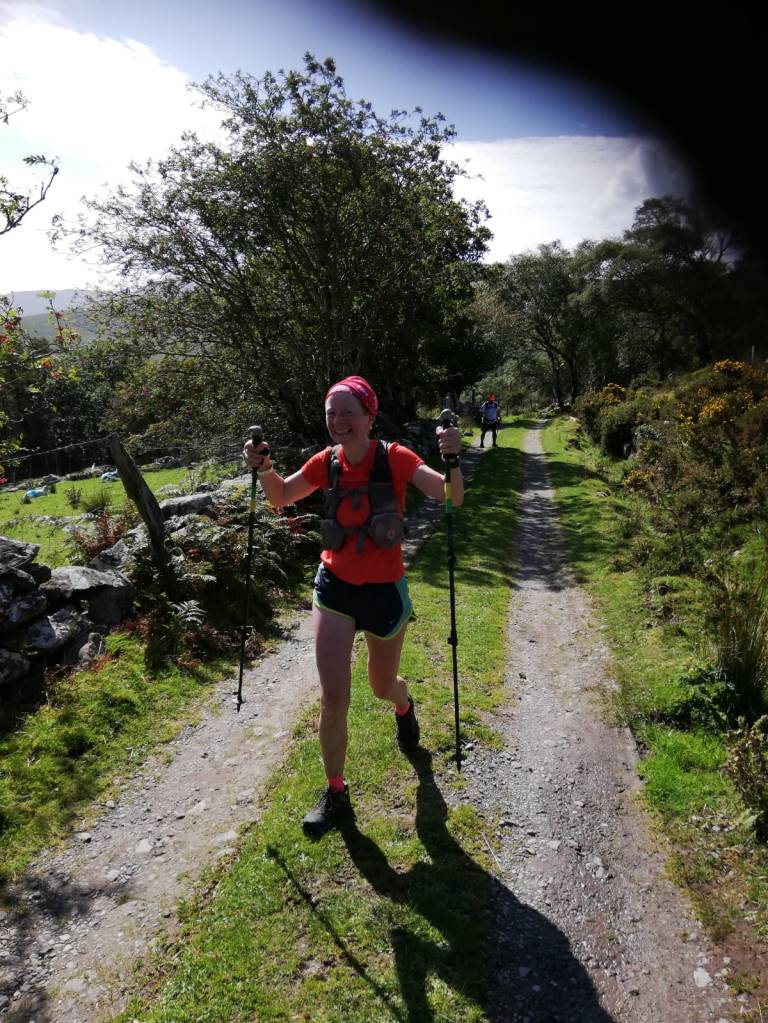
Heading up Windy Gap
On up the hill, the sun was out, and I was feeling good, though a bit nauseous, and I knew I didn’t feel like eating the bread and butter that Pat had given me. I knew he’d give me a hard time if I didn’t eat it, so with great regret (because I baked it myself and it was delicious!!) I threw it in the ditch when Adolfo couldn’t see me!! It was the only time I did that! Instead I had one of my nausea tablets, and a Gaviscon, and kept going. It seemed to be working, and I ran strongly down the hill and into Glenbeigh, I love this stretch, arriving at 2:50 pm. I’d made up another 15 minutes!
Glenbeigh to Gortmore
I’d only allowed a 10-minute break at Glenbeigh, which is a bit unrealistic. It’s actually hard to get out in much less than 20 minutes, by the time you eat something hot, wash feet, change socks, and re-load the bag, even with a super crew like Pat working flat out. We had a check list and went through it every time, so nothing was forgotten. Each CP took pretty much 20 minutes, but at the later ones I’d allowed longer, so I made up time there. I left Glenbeigh at 3:10pm, 20minutes ahead of schedule. I’d said to myself before the race that if I could leave Glenbeigh by 3.30pm, I had some chance of getting to the finish, so I was pretty darned pleased with myself. I like the section out of Glenbeigh, through the fairy woods, and up the long road section to Drung Hill. The air is so fresh, you’re beside the sea, and it really is stunningly beautiful. I remember the first time I attempted KWU back in 2014 I felt dreadful leaving Glenbeigh. I was that dot dropping off the back end, feeling nauseous and sorry for myself, crawling up the hill already. In 2015 I wasn’t much better. I remember going to the toilet in the garage at Glenbeigh, staggering down the stairs- what a waste of time! I saw John Healy there, and he was cheerfully buying himself loads of Danish pastries. I remember wondering how he could
stomach all that. Drung hill was the section where Chantelle and Liam had passed me in 2015, and I’d felt so down, I had no energy, and it already felt like I’d gone miles. This time, 2019 was different. The race was only starting still, I’d done my training, I was focussed and relaxed and on my way. Adolfo caught up with me again, which became a pattern right to the end of the race. I’d be quick out of the CPs, but walk slowly out to let my stomach settle, and Adolfo would catch up. It was great to have the company and sense of camaraderie. I knew Adolfo knew how to finish the race, I knew he ran a lot of races, and was on good form, so, it was reassuring that if I was going at a pace that he was going at, then it was very promising for a finish. As we ran up the section of road towards the mountain stage, as Drung Hill is called, I actually went past the turning. There’s a left turn, and even though I know that
part of the route so well, I still went straight past it. My music was blaring out, and I couldn’t hear Adolfo yelling at me to turn back. Well I did hear him eventually and felt so relieved and idiotic all at once. The last thing you can afford in any long race is to go the wrong way, but it’s actually pretty hard not to (especially for me!!) So, on up Drung Hill, through all those gates, looking down over the sea as you climb higher and higher Valerie had said she would be up here, but we got all the way to the top and down the other side before we came to her. Always so good to see Valerie.
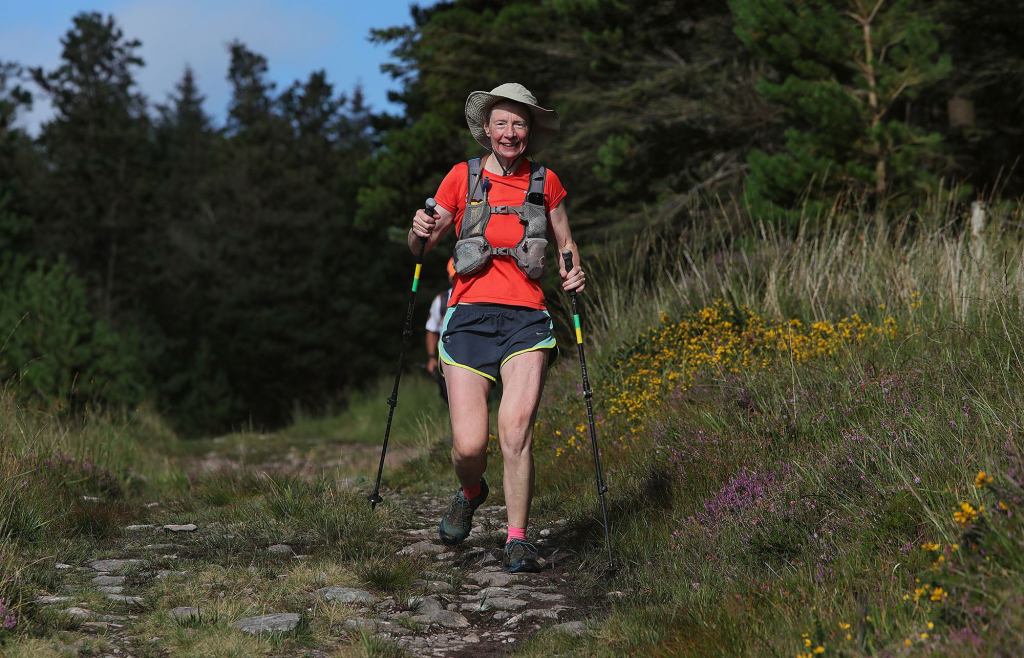
Descent of Drung Hill- Photo by Valerie O’Sullivan
Then there’s a long road section into Foilmore, about 3 miles, and Adolfo and I ran the whole way at a good enough pace. Again, I remembered 2015 walking this section, unable to keep up with the people I was with, and falling back. And 2014 was even worse, I was in bits arriving in to Gortmore and spent 5 minutes crying in the toilets in distress!! Admittedly certainly in 2014 I hadn’t done anything like the preparation and training that I should have done. I’d only entered because Pat had entered and he’d gone on and on about it for months, and I was sick of observing!! The third time I attempted KWU was 2018, last year. I’d actually done a fair bit of training, and at that stage knew a lot more about endurance races, having done Itera, the Ironman, and a few more Beast races. Unfortunately, last year in 2018 I’d had the worst bout of flu before the race and felt really negative from the start. In fact, looking back now, this year I was a lot better prepared, had a much better idea of the times I needed to hit, and had a whole lot more training done. I was also ¾ stone lighter this year, which is a nice bit less to carry!
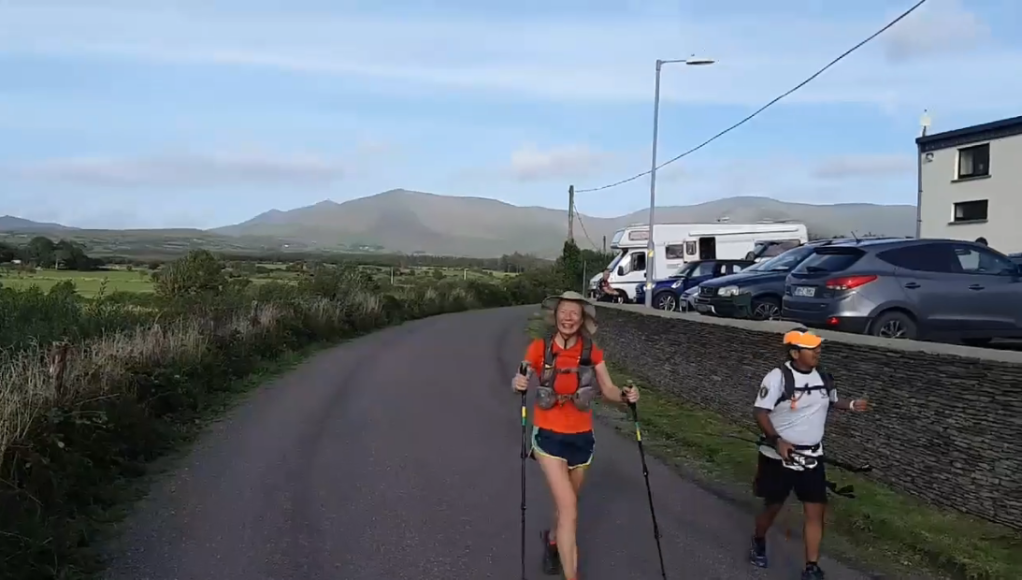
Coming in to Gortmore
We ran into Gortmore feeling brilliant and looking at Pat’s video that he took of me as I came in, I can see how focussed I was. The first thing I said was how I wanted longer shorts for the next stage. I was looking ahead, not just collapsing in a heap of exhaustion, as I had been at this stage on previous attempts. So, I had made really good time on this stage, having done the 12 miles from Glenbeigh in 2 hours 55 minutes, instead of the 3 hours 25 which I had allowed. Pat had everything ready for me again, well nearly everything…I had planned to take the Garmin for the next stage, with the route programmed into it, because it’s tricky enough going over the hills in the dark into Waterville. Unfortunately, the Garmin wasn’t working, so I left it , at least it was one thing less to carry, and there was no point in getting upset about it. I had all my clothes that I needed, head torch and spare head torch, check list checked, and on my way within 20 minutes.
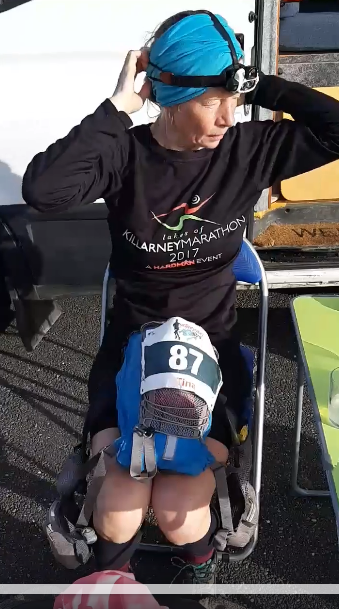
Getting ready to leave Gortmore
Gortmore to Waterville
I left Gortmore at 6.20pm, a whole 55 minutes ahead of schedule! I walked the first couple of minutes with Pat, and he gave me a little pep talk on not expecting to feel on a high the whole way, and that I might well hit a low point at some stage. I listened and nodded, but really didn’t feel as though I needed to give it too much thought! I was feeling good. At this point in 2018 I felt really nauseous leaving Gortmore and felt dreadful for an hour and eventually pulled out at Mastergeehy. I wasn’t making great time anyway that year, and it was raining hard. And I was still recovering from flu, so I had this little voice in my head ready with an excuse to stop.
This time round, in 2019, I felt ok leaving Gortmore for the first time ever doing KWU, but I wanted to be cautious with my stomach, so I went fairly slowly up the hill. I was with a couple of lads for a while and managed to point out when they’d gone past a turning, so I felt slightly less incompetent! They moved on ahead of me, and I kept going steadily enough, slightly nauseous, but resolutely sucking on Gaviscon and the anti-sickness tablets that go under your lip. It was still daylight, and fresh and wild and exciting to be out in the mountains on my own heading into the night with a plan to keep on going! This stage is long, 14 miles, and I’d allowed 5 and a half hours. It’s roughly divided into 3 mountain sections that are open grassy bog with some rocky parts, and the Kerry Way takes you along ridges across them, and eventually down into Waterville. The first one, Coomduff, is fairly short and you come off it and cross a road near a school and straight back up onto the second section that is almost vertical in places. This obviously really slows you down. In the past I’ve been at that point in the dark, so it was good to be able to see where I was going. It was horrendously boggy, there had been a lot of rain in the weeks up to the race, and I cursed my way along, stepping off big rocks and straight into bog and mud holes that you had no choice but to go into. This second section of hill is twice the distance of the first, and it was getting dark at this point. It comes down into a short road section and into Mastergeehy. It’s actually really nice to get on to road after all the bog and hill. The route takes you past a hairdresser of all places to find out in the middle of nowhere, and it’s an easy place to go wrong, but I was ready for that one at least!
On and up the third hill, and at this point I had a 5 minute faff, where I wasn’t sure of the route. I was behind another person who pointed out that the way marker said Caherdaniel, and we didn’t want Caherdaniel. In a panic I phoned Pat, who couldn’t see where we were because the tracker wasn’t updating. He kept saying I needed to get up onto the ridge. I really regretted that I didn’t have a better idea of the route at this point…I really didn’t know where the ridge was. Or what it was. All I knew was that I didn’t want to lose time. All the while, head torches were approaching, and a whole gang that I had passed due to my speedy exit at Gortmore check point had caught up. It was no bad thing! Amongst them was Adolfo and John Boyle, and Eileen. Great big grins from all of them, and
reassuring ‘This Way’s! So, I ended up doing this last part with the three of them, and it was really nice to have their company. I chatted away with Eileen, who I was impressed to see there, it being pretty much her first Ultra, what a race to pick! She’s an amazing adventure racer, who I always see at the Beast. Far stronger than I am on the bike, and generally, really! So, we hauled our way through the mud and bog grass. At one point we passed one lad who was sitting at the side of the path, looking a bit distressed. We were a small bit spread out at that point, and each of us asked if he was ok. He said to me he had very bad cramp and was waiting for someone. Didn’t look like the best plan to me, to be sitting getting cold, but I carried on, feeling a bit guilty for not trying harder to help. There was a bit of a feeling of ‘Everyone for themselves’ and I felt as though I was up on Everest leaving someone behind to save myself. Adolfo thought he was probably ok anyway, so we kept going and eventually after a lot of bog, long grass, rock and more bog, we descended into Waterville.
We ran into the town, saying that we would re-group in 20 minutes. I’d taken 5 hours 40 minutes on this stage, 10 minutes longer than planned, but still 45 minutes ahead of schedule, and it was midnight. Again, Pat had all the usual ready for me. He was still phoning me about a mile out of each check point, which was nice, and asking me what I’d be wanting to eat. At this point I couldn’t think of anything, so I just said the
same again because it had worked so far and stuck with that logic for all the CPs to the end. Soup, potato, crisps, melon, tea, coke. Refill bag, wash feet, change socks, swap watches,
check phone charge. I made up another 5 minutes by getting out of the check point in 20 minutes, 5 minutes faster than I’d budgeted.
Waterville to Caherdaniel
I decided not to wait for the others and started to make my way slowly out of Waterville, along the sea-front, listening to the waves. I felt cold, and I was a bit spaced out, plodding along with my hood up, trying to assure myself I’d soon warm up, listening to the music, and again I went past an obvious turning that I know well, and should not have missed, the right turn off the main road! This time Jackie Toal called me back, she was just behind me. I was feeling a small bit nauseous and wanted to walk steadily, so I let Jackie get ahead of me, and not long after, the others came up behind me. I managed to stick with them, and my stomach soon settled.
There’s a point along this section where the Kerry Way turns to the left unexpectedly (well there are plenty of those kind of places in my opinion!). But anyway, I remember this turning from a recce years ago, in 2015 I think, where it was pointed out to us. So, I happily took the left turn, no danger of missing it as I was in with a big group who all knew it too. A few hundred yards in as we climbed up and away from the road, we looked down to the right and could see two head torches pointing up towards us, and we yelled out to them. They’d missed the turning and knew it now. They were looking up and no doubt cursing themselves, pausing, not wanting to go back, hoping there was a way up. I felt sorry for them, and guiltily glad it wasn’t me who’d gone the wrong way.
This part of the Kerry Way is a gorgeous section, along a historic old Butter Road, with superb views as the path follows along parallel to the coastline. You can see the Skelligs at one point, so, it was a pity to miss that, but it was a clear night, the stars and moon were out, and it was so exciting to be out in the dark on a long journey with other people on the same journey, going the same way through the night. After a couple of miles there’s a point where the Kerry Way crosses the road, and Pat was there to wave, and cheer us on. He was so cheerful and encouraging, and I felt so proud that he was there for me, and I was doing well! It was starting to occur to me that I might actually finish this time, but I didn’t want to count on it just yet. Anything could happen! At this point, the first time I’d attempted the Kerry Way Ultra back in 2014, it was daylight, and I was already way at the back. It was already hopeless, and I was on a very slow death march. I think I took 5 hours to go the 8 miles into Caherdaniel. My poor crew, Anne and Siobhan had to wait endlessly at the check point for me. It didn’t take much to persuade them to let me stop! I remember they fed me scrambled egg on toast, and I’d felt suddenly better….Then in 2015 on my second attempt Id felt very tired on this stage, and had taken ages getting out my bivvy bag, deciding to sleep at the side of the path. Of course, I couldn’t sleep, and all that happened was that I got cold, and couldn’t get my bivvy bag back into its teeny little
pack that it had come in. This year, 2019, it was all very different. I was feeling strong, I was with a group, I was making a sensible time! We continued on up over a couple of steep hills which I hadn’t even noticed on my recce’s, and into a short forest section where there’s a funny loop, just before Derrynane, and I was calling back to Eileen not to miss the turnings, but a gap was growing between us, and I went on. Adolfo said to me at the start of the race, don’t look back, and he’s right, you have to run your own race in an event this long. Anyway, not a bother to Eileen, much better sense of direction than I have!
Waterville to Caherdaniel is a short enough stage. It’s 7.5 miles, and fairly good terrain overall. I’d allowed 2 hours 30 and made it in 2 hours 25 minutes. When I’d done a recce of this stage, I’d made it in less than 2 hours going slowly enough, but of course at this point in the race you’re getting tired, so you have to allow for that when working out the times that you’re aiming for. As we came into Caherdaniel, Jackie was just ahead of us, and I raced past her into the town, just for the fun of it really. I was glad to see Ivan on the near side of the town, so I didn’t have to keep up the race pace! I was aware that I could have tried a bit harder to pass people throughout the race generally, and pushed on more, but I didn’t have the confidence or the desire. I didn’t want to put myself under any more pressure, and I wanted above all to stick to a pace where I could keep the nausea at bay, keep eating, and keep going. At this point it was 2.45am, and I was 55 minutes ahead of schedule! I opened the side door with a cheery hello to Pat. He was starting to look surprised that I was on such good form still, and slightly worried that I might beat his KWU finish time! Pat did KWU in 2015 and finished in a time of 39 hours and 40 minutes!! My aim was to finish, and of course I liked to think about beating Pat, but I never thought I actually would!! Usually in long races, without exception, I’m not only nauseous, but my stomach goes, and I have to dive behind bushes with alarming frequency to ‘powder my nose’. Not this time! It was quite amazing. I did in fact use the facilities in Ivan at this point, and once later in the race jumped behind a bush, but that is a far cry from the usual state I’m in. So, I sat inside Ivan with Pat having my soup and potato, and it was another little world in there. The bed looked tempting, and the cosy familiarity of our little home on wheels suddenly seemed like a much better option than the road ahead! None of that though, I was out of Caherdaniel in 19 minutes, 56 minutes ahead now!
Caherdaniel to Sneem
The next leg was 10.7 miles to Sneem, and I had allowed 3 hours. Pat had said to me he didn’t think this was enough, and it was the one section that I had underestimated, when I spent my hours poring over the map and past splits! ( I’d worked out my times on a long train journey from Dublin, a couple of weeks before and managed to be so engrossed that I missed the stop to change at Mallow and ended up in Cork instead of Killarney). Anyway, the leg took me an extra 30 minutes, 3 hours 30 in all. I’d recce’d this stage twice in the months leading up to the race, once on my own, and once with Geraldine and Mary Falvey. It was nice to think of the two of them with me as I set off up the single-track. An inspiration the pair of them, really strong, great talkers, and a similar age to me. We’d stopped on the ‘wishing seat’ on our recce, and I’d wished at the time that I could finish KWU, and I smiled to myself as I passed it now, feeling a little stab of excitement that I might just do just that! I was on my own again, having got out ahead of Adolfo and chewing on Gaviscon and the magic anti-nausea tablets, Buccastem Buccal. I think that was the last anti-sickness tablet that I took, my stomach actually didn’t bother me so much as the race went on, probably because I was going more slowly. Anyway, it wasn’t long before Adolfo was behind me, and we went along in companionable silence, hardly speaking as we had been most of the way! Silence, apart from my marching music, which I really missed if I turned it off. It was like a drug to me, a secret weapon that gave me wings! Maybe the familiarity of the tunes helped, and it was certainly a good distraction.
There are a couple of long wild boggy sections, that felt longer and wilder and boggier than on the recces, what with having already done 70 miles and been on the go for nearly 24 hours. After a while the route turns into a wider track, and we passed a few people at this stage. I didn’t really feel tired, but I can’t remember much of this part! It did get light somewhere along here, and it’s a great feeling to turn off the head-torch and know you’ve made it through the night, and it’s tomorrow, the day the race ends. Eventually we came to the section where the track meets the road and there’s a gate and a turn to the right and then to the left for the long straight section into Sneem. I remember meeting Adolfo there the previous year, after I had pulled out and Pat and I were following the rest of the racers and giving support. Pat was there this year to meet me, and it felt good to be still in the race, not supporting. We said a brief hello, Pat was so good meeting us there because it meant he got less time to catch a bit of sleep himself before I arrived into the check point. He really did everything he possibly could to be there for me. So, we turned left and over yet another stile and along the straight section to Sneem. This was one part that I thought would never ever end. In the recces it had seemed like a great old fast flat straight bit that took you to Sneem in about 20 minutes. Now it just seemed to stretch and stretch, as though the distance was distorted and, in another dimension, and I thought it would never end. There’s something much harder about straight roads when you’re tired. At least a hill and a bend or two gives you something to get your teeth into. Long and straight just is so
challenging! I dug deep and kept going, and we ran as best we could. I think John Boyle was with us at this point, but he went on ahead at a great pace, and I later discovered he’d hurt his leg, and decided the only way to finish was to go much harder and faster and not stop or his leg would seize up. He is one strong endurance runner. He has entered and finished KWU 6 years back to back ( and this year, only a week before, he’d completed 24 hours of the UTMB!). We ran into Sneem, and there was Ivan and Pat parked up near to the barbecue that the Sneem Dream Team always put on each year. I couldn’t believe I was actually there for it this year. In 2015 when I got to this point in the race, the barbecue was over, everyone had left already, and I was trailing miles behind. I think I spent a lot of the race this year just being amazed that I felt ok. I was even allowing myself to start to think about the end, and that I might well finish! Initially I had asked Brian Harman to do part of the last leg with me, from Galway’s Bridge the point at which pacing is allowed. This was because I’d really thought I would be on my last legs, and likely to just lie down under a bush and stay there if I was on my own. Brian was all set to go, and I’d been delighted. I knew he’d be merciless, but he also has a great sense of humour, so I thought that could tip the balance to get me to the finish line. However, I was starting to realise I wouldn’t actually need a pacer. I was feeling fine, and I wanted to do it on my own, and stay in the parallel dimension that we runners were in. I said it to Pat, and he suggested wisely waiting
until I got to Kenmare, though he said he would say it to Brian. So again, I had my helping of potato and soup (I’d eaten so much soup Pat had to buy more in Sneem!) I was back out on the road in 20 minutes. I put on lighter clothes and took my big hat and kept going past the warm fire and the barbecue. It looked so inviting, but I knew if I sat down it would be sooooo hard to leave!
Sneem to Templenoe
At this point it was 6.35am, I’d lost a bit of my lead against my schedule, but I was still 25 minutes ahead. When Pat completed KWU in 2015, he had really slowed down around Caherdaniel and Sneem, and wasted an hour in Sneem trying to put up a tent and sleep unsuccessfully. We’d learnt since then from doing multi-day adventure races that no matter how tired you feel, you can’t usually sleep until about 40 hours have passed, and certainly not within the first 24. It’s actually better to eat, take caffeine and keep going, and the drowsiness passes. This was one reason that this year I completed the race so much faster than Pat did in 2015 (when he was 9 years younger than I am now !!) I do also think I’d put in more training, and it was paying off. Anyway, Sneem to Templenoe is 12.5 miles, and again I slightly underestimated the time it would take at that stage in the race. In a recce recently I had made it in 2 hours 45, so I thought 3 hours 30 was plenty. As it turned out, I was just under 4 hours. If anything, this moment of the race leaving Sneem was when I felt low. I was cold and tired, and as usual walked out of the CP with Pat, just for a minute to put off the moment of being on my own and on my way, and I had a teeny wobble of the lip, but Pat assured me I’d be fine, and indeed half an hour later I was over any bit of tiredness. And that really was my only low point! I still can’t believe it. In a way what it means is that I could have gone harder. Next time!
I hadn’t gone far out of Sneem when I realised, I’d left my phone in Ivan! I felt a rush of shock…no music! And it was mandatory kit! But then I rationalised that Pat would see it and pass it over to me maybe at Blackwater…Adolfo had caught up with me as usual, and I knew there was no way I was going back for it! As it turned out, I didn’t have to wait long for Pat to get the phone to me! Pat had got back to Ivan after walking to the trail start with me and saw my phone on the table. He carried on and ate his breakfast, knowing it wasn’t far to a point where the road crosses the Kerry Way, and he knew he had time to finish eating. He kept an eye on the tracker and got out ahead of us. He left my phone sitting on a fence post on the trail, with Shirley Bassey ‘I am What I am’ playing on repeat! I’d listened to this track endlessly in the run up to KWU, and Pat was completely sick of it! It was very funny suddenly to hear it blaring out, and interestingly we couldn’t hear it until we were right on top of it, so I knew at least that I probably wasn’t annoying the runners around me with my mobile disco because it was quite hard to hear. So, there was my phone back to me, phew, and Pat was waiting around the corner at the road, laughing away!
I quite like this stage from Sneem to Templenoe. It’s punctuated by a few nice points that bring you off the trail, surfacing out onto the road, and you start to feel the end getting nearer. The first one of these is Parknasilla, and I always think of my 50th when Pat and I had come here for a night. Of course, we hadn’t just sat admiring the view…we’d gone sea kayaking, and then run loops around all the trails. So Parknasilla feels familiar. Then comes Brushwood Studios, and soon after that Tahilla, where the trail again crosses the road. I remember we’d waved to Pat here in 2015 when he was still in the race, and Id pulled out. I remember he was pretty wasted, and having a low point, and I started to realise how good I was feeling, and that it really was looking more and more likely that I could finish, and possibly even finish faster than Pat did!
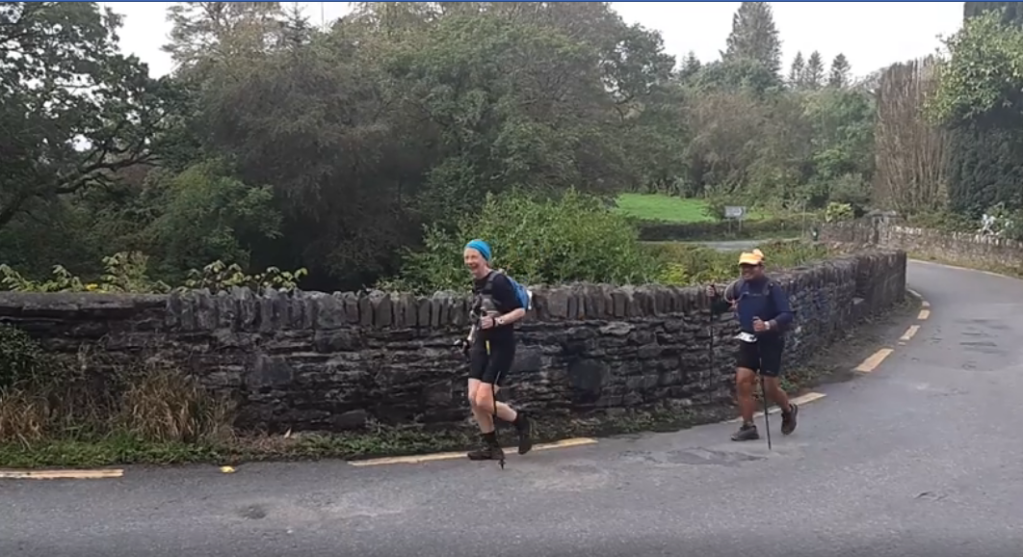
At Blackwater Bridge
About 3 miles after Tahilla comes Blackwater Bridge. It’s an amazing place to look over, such a big drop to the churning waters below. We didn’t stop for a look this time, and in fact kept running, spurred on by the sight of Pat parked on the corner, ready to smile and wave. He was having a cup of tea and looking after a couple of sorry looking runners who had pulled out. We kept going and into the woods to the right of the road. This is another lovely section, where the trail dips up and down to the water’s edge, through pine trees, and you can see and hear the sea lapping over the rocks . Many of these trees fell during a storm in 2015 and the trail was closed for quite some time while they made it safe. This is all quite runnable, and we kept moving along nicely, although it did take 4 hours, so maybe we weren’t going so fast after all! Not only is it hard to judge distance when you’re out on a long race, it’s also hard to judge the speed you’re running at. You can easily find yourself jogging along, thinking you’re going well, and a passer-by could be actually walking beside you, and you’re not going any faster than they are walking. It is like being in a parallel universe! The route widens, and goes slightly down hill, perfect for running, and we kept moving, not far from the next CP at all. The route comes out on to the road, and we had caught up with Jackie Toal again. She and Adolfo ran on into the CP, but I walked because I didn’t want to arrive in with my stomach jigged around or upset. There were a lot of supporters at Templenoe, and they watched me walking up with bated breath. I could see they were wondering if I was struggling because I hadn’t run in with Adolfo and Jackie. I gave them all a cheery wave and hello, and they all blurted out a big hello back, and looked hugely relieved. It is a popular spot for pulling out! Pat wasn’t worried, I’d said I would walk into CPs to control my tummy before eating, but at this point I wasn’t feeling nauseous anymore. I was on great form, and a photographer took my picture; I think it might have been for the Facebook live feed. I told him how old I was, and his jaw fell in genuine surprise. He was a young fella. I’d actually arrived in Templenoe at exactly the time I had planned on my schedule, though it did mean I had lost my one-hour lead! It was 10.50am. Again, I stopped 20 minutes, and this time I left with Adolfo, he was ready.
Templenoe to Kenmare
As I left Templenoe Pat ran up behind me to show me a message that had just come through from my mother, with the fantastic news that my daughter Eleanor had got accepted to do a PhD in physics at Trinity! We’d been waiting to hear, and we were choking back the tears, it was a moment to remember. The first part of the leg from Templenoe to Kenmare goes up a road around the golf course.
Mary Falvey was working locally and had been following us on the tracker, and she suddenly popped up, and walked a few minutes with us. She was chatting away, and you could see she found it difficult not to run. It brought home how hard it all was, and how tired we much be! It was lovely to see her, though it is hard to chat to people at this stage of the race. They seem to be operating in that parallel universe that you’re not in when you’ve been out on the trails for 30 hours! We continued on around the golf course, and Liam came up behind us! He was doing the Kerry Way UltraLite, having come back from a long period of injury. He was on great form and going well. We had a bit of a chat, and I said to Liam he should go on, though I found it hard to get my head around how it was possible to go any faster! So, Liam said goodbye and shifted up a gear and disappeared off!
We knew it was a long way around the golf course, but what a long and tedious loop this section is. The part around the golf course is actually 4 miles long and the whole leg to Kenmare is only 8.8 miles. I had allowed 3 hours 20 minutes and made it in 2 hours 55 minutes. Long and tedious as it was, the road loop around the golf course was actually a piece of cake compared to the boggy mud-bath when you came off the road. I think this is one of the worst sections of the Kerry Way. It just goes on and on for a start, well put by David Caulfield when he described it as the Marshes of Mordor. On my recce, I remembered it as roughly 2 little hills, then a rocky ridge and you’re down. The reality was maybe 15 hills before we got to the little rocky ridge. It was also boiling hot at this point, and I was desperate to find water to pour over my head. I had to make do with very boggy muddy water, which certainly amused them all at the check point in Kenmare . They thought I had gone over headfirst.
Adolfo thought we were going too slowly on this leg, but I had allowed a lot of time, and I didn’t feel like rushing. If anything, looking back, I could indeed have gone faster. Perhaps I could have pulled out all the stops, had a gel or two and more coke and gone harder. It was difficult going quickly over technical ground though, the brain definitely slows down and it is harder to work out where to put your feet. Eventually we did get to the last little rocky ridge, and down a short bit of road and into Kenmare, via a little laneway into the town. This laneway always used to confuse me; it seems like a secret fairy path that only special folk can find on a full moon. No problem this time though, straight through and into the carpark opposite Supervalu. The last check point!! We jogged in feeling like celebrities! It’s an amazing feeling being cheered on and looked at by so many people as though you’re superhuman, a real buzz. Chantelle was looking after this check point, and it was lovely to see her, it had been a while. Pat had a chair set up for me beside our picnic table, and I sat in the sun with my feet up, enjoying all the attention and celebrity status!
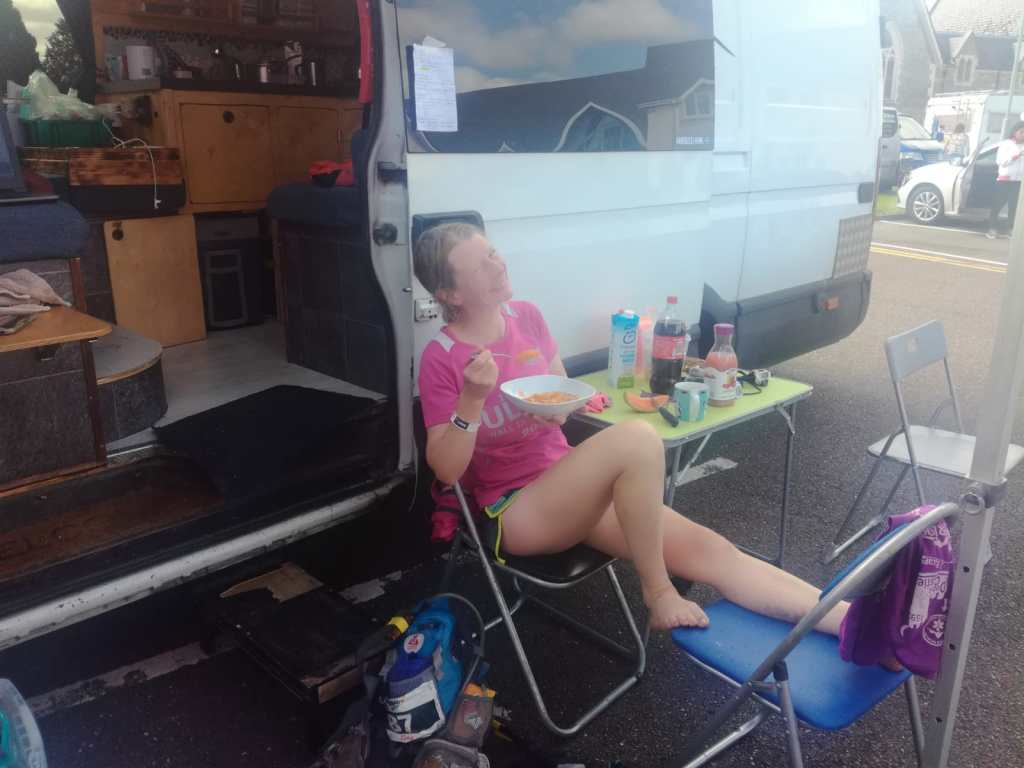
Enjoying all the attention at Kenmare!
Brian was there, and I apologised that I wouldn’t need his services, and he understood, though he was very disappointed not to get the opportunity to harass me to the finish! Chantelle and Liam’s nephew washed my hat for me, and Pat rushed around doing the check point pit-stop routine. I washed my feet and put on clean socks for the last time and felt on a real high! We were in good time, we were going to make it, it was still early in the day, fantastic, unbelievable!! We had arrived in at 2:05pm, and by 2:26pm I was up and out, no thought of staying, ready for the road. When I had attempted the KWU in 2015, my second time, I had got to Kenmare very late, around 7pm in fact, and I was full sure I was going to stop there. Pat had talked me in to continuing. There were a lot of people following me on the tracker, and it would have been something to finish, even if it was outside the race cut off time. This time, I was a different person setting off on the last leg of the race, and I was leaving the check point about 5 hours earlier!
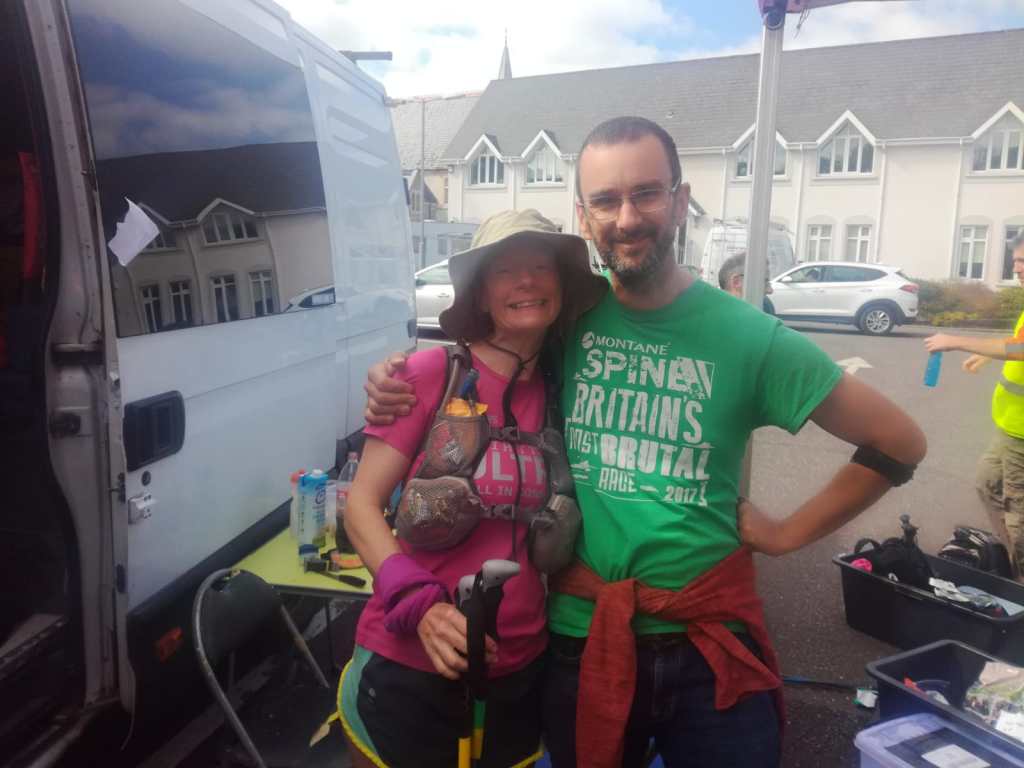
Ready to leave Kenmare
Kenmare to Killarney
I set off walking with Pat and we chatted away. He left me when the road started to go up hill.

Leaving Kenmare, facing into the big up-hill!
James Morrisey and David Caulfield also left the Kenmare at roughly the same time, and we made our way on up the extraordinarily steep hill out of Kenmare, which goes on for nearly 3 miles. Our poles clattered noisily on the road, but they really do help with balance and give you an extra push, especially when you’re so tired. I chatted to James for a while. It was such a beautiful afternoon, sun out, and I had my music playing. Adolfo had caught up too, and at last we got to the top of the climb. Downhill at last! Adolfo and I set off running, eager to get to the finish, and it really did feel as though it was within our grasp now!
We made our way down to the junction where the Kerry Way splits at the start of the race at Galway’s bridge, and we could see Brian and Pat coming towards us. We hardly needed any encouragement at this point, we were now unstoppable! Pat joked that I could at least limp a bit, and that it wasn’t on to be going so much faster than he did in 2015! Brian was loving every minute and enjoying seeing Pat’s KWU time being smashed to smithereens!! We went over the two river crossings with the big stepping-stone rocks and the rope to hang on to. It felt really precarious! That was my only fear, that I’d twist an ankle, or my hip would pop out of its socket…

Approaching Derrycunnihy- Photo by Valerie O’Sullivan
We continued on and passed the spot where I’d pulled out in 2015!! Just 10 miles from the end, but also already 2 hours after the cut off. I was just so exhausted that time, but it’s no excuse after 110 miles of a 120-mile race… you just don’t stop 10 miles before the end unless you are unconscious or have a broken leg with the bone sticking out! Anyway, there was certainly no stopping this time! I gave the sign post a big grin, and Brian took a photo of the famous spot, and on I went! It all seemed hillier than 34 hours earlier when we had trodden the same route in the opposite direction, but Adolfo and I made good time. Esknamucky Glen was different though. It was incredibly challenging getting over the rocks and loose slabs laced with treacherous big steps down and boggy holes in between. I’d say it took us ages. But speaking to other people, everyone found it the same. It’s just really hard to think and react at this stage in the race! It was a fantastic feeling to get on the wider part of the trail that leads back past Torc. It’s a very familiar section, we’ve run it countless times and it felt like home already. We could see Pat and Brian up on the trail ahead, a bright orange and a bright green tee-shirt! It was great to see them again, and we were all in great spirits.
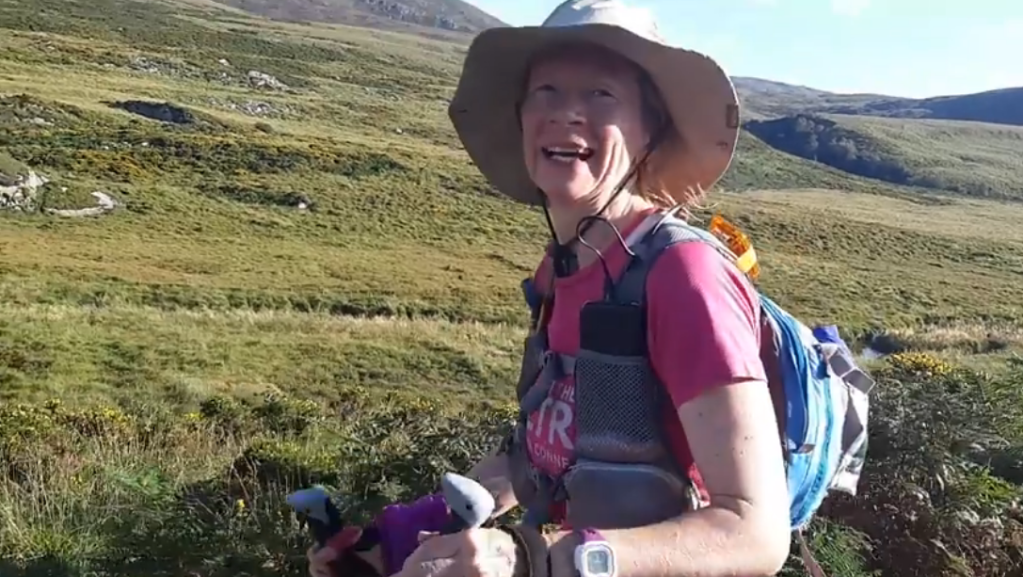
Passing the foot of Torc
Adolfo and I kept up the pace, we were heading down Torc Waterfall now, down the steps and across into Muckross! It really was the home stretch. Our friend Nuala appeared, we used to run with Nuala and others on a Wednesday night in Muckross, and again it lifted the spirits to see friends. Then Adrian was there, and suddenly it was only 2 miles to go, and we started to run a bit harder (though it was probably still only that very slow running pace that people in the other dimension can walk at). I knew my mother was going to be at the finish, and I let myself project forward and imagine the moment when my mummy would hug me, and I would feel so proud that I had done my best and she was there to see it. We passed some people who were doing the Lite and were walking, and we kept going, had to keep running, keep running.
Out of the park now and on to Muckross Road. I knew Muckross Road would definitely have warped itself into a drastically extended extra-long dimension with an up-hill bias as well, and I was ready for it. It was going to take time, I just had to keep going and it would eventually end. I wanted to run faster and faster, the adrenalin was firing now, someone in a car honked a horn, I was doing it, this was it, the end of the Kerry Way Ultra, and not just barely making it, but making it 2 and a half hours before the cut off! This was my finest running moment! Adolfo and I had come all this way, most of the race together, and we finished together, arms in the air triumphant! Pat was there of course, and my Mum, and Adolfo’s wife Roccio, and lots of our running friends. It was just fantastic. Everyone was hugging me, Pat opened a bottle of bubbly that I had put sheepishly into the fridge in Ivan before we left, on the off-chance that there might be something to celebrate…and there sure was!! We took lots of photos, and savoured the moment, a magical moment. 120 miles along the Kerry Way, 37hours and 26 minutes.
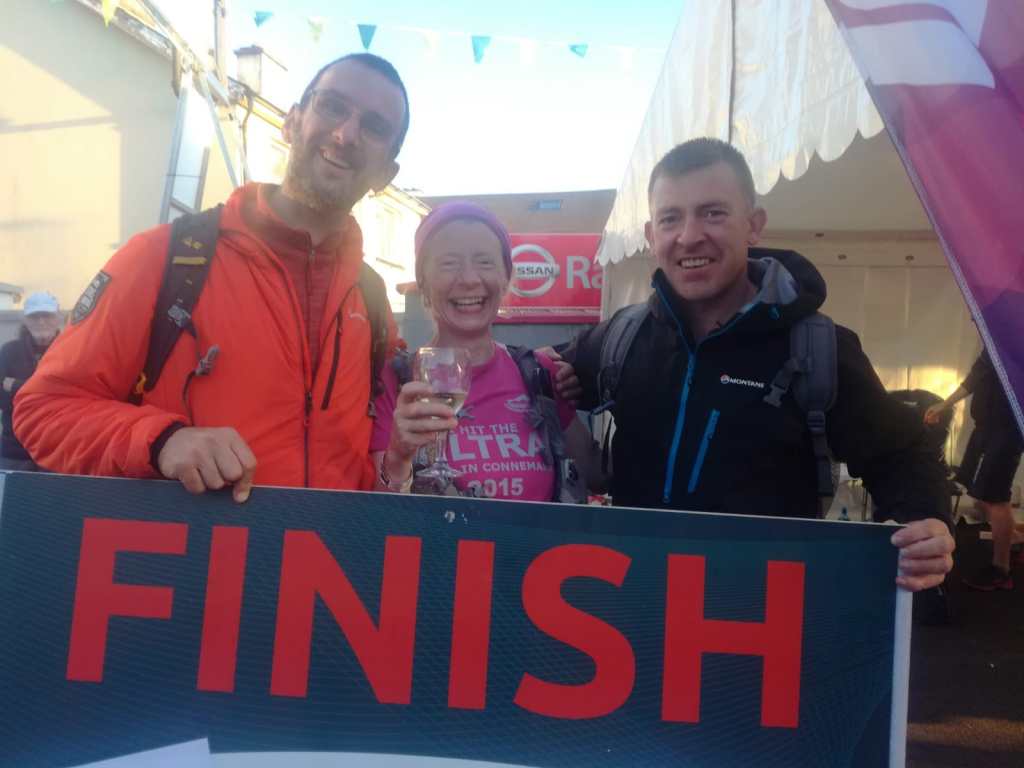
With Pat and Brian at the finish
A few stats. There were 87 starters and 57 finishers. I was 42nd overall. Out of that, there were 12 women starters and 9 women finishers. I was 8th woman. In previous years, there have only been a total of 8 women who finished in under 40 hours since the race started in 2013, so now including 2019, 17 women have completed it, (and I’m fairly sure, I’m the oldest!)
A huge thanks to Eileen Daly, and all the volunteers and supporters who make this happen, the Ultra, the Lite, and now the Nite as well. It is ‘not for profit’, with any left-over funds going to The Way. It is also a fantastic local event, involving local people, including myself! As an artist that specialises in running paintings, I do some of the winners’ prizes. Being involved in this way makes it even more special for me to compete in and finally to finish! It’s also Ireland’s toughest Ultra, and every year attracts more and more runners from further and further afield. The aim now is to get 100 finishers across the line next year in 2020, in order to make our race a qualifier for the Western States, so sign up! I’ll be back myself, as will Pat!!!
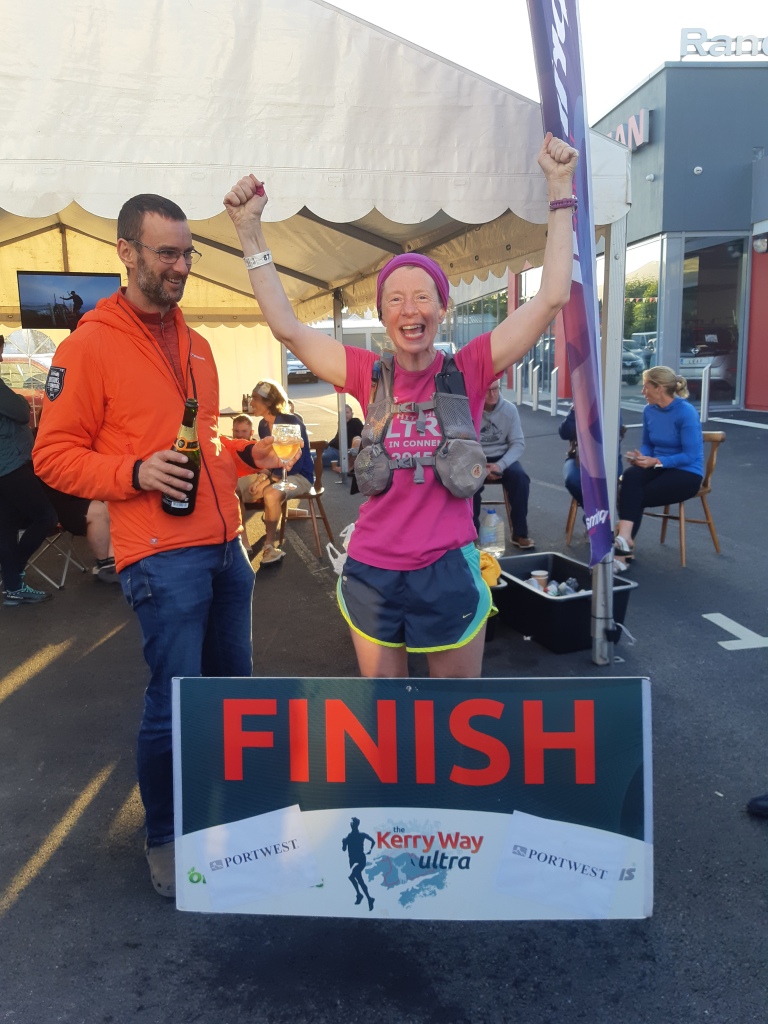

Rocio, Mum, Adolfo, Pat & Tina. Photo by Adrian Corsini
Written by Tremayne Dill-Cowdry - https://dill-runs.blogspot.com
After Western States 2017 I still felt incomplete. Yes I'd finished, yes I got a buckle but it wasn't the race I had wanted. I had reached Foresthill and completely shut down. This has happened twice now. Once at the Barcelona 24hr track race and at Western States 2017. It is a very strange situation, you are not injured, nutrition is good, well trained yet you can't run. This has played on my mind since WS I have analysed every aspect of that race trying to work out what it was. The conclusion was it was culmination of two key things, altitude and heat. I pushed too hard too soon and the lack of oxygen completely stripped my body of energy. I followed that by hitting the canyons heat and powered on regardless. My body was completely broken come Foresthill and although my brain was still focused on finishing sub 24 my sub conscious was stopping me running. My sub conscious was preventing any more damage to my body by stopping me running. I firmly believe this to be the case and had another very experienced runner concur. This wouldn't happen again bring on Western States 2019.
 |
| Team GB |
I felt I needed to go back. My dream in limbo. That elusive silver buckle still in Auburn. There is no way I could leave it. I thought I'd just throw my name in the hat with a 5 year plan to get back in. So year 2 and 2 tickets in the hat and for the first time in many years I didn't watch the draw. Then a message pops up on my phone from Jim Kepfer in Auburn. Gordy just pulled your name!! Shit I was in!!! I took me all of 10 seconds to decide I was going to go and within a few hours my flight was booked, hotel booked and messenger group set up with the fellow Brit runners.
I trained hard for this and under the guidance of Kim Collison got myself in to super shape. I cleared the diary of races and decided to concentrate on learning the Bob Graham route in the lakes. The mountain running and weekly leg session in the gym prepared my legs for what was to come. I planned every step of the race, my nutrition, clothes, strategy, everything ! I was ready.
The build up during race week was fun but I remained focused. I was here to race, I was here for my silver buckle! The only thing that broke my concentration was meeting my running hero Scott Jurek. Total legend and left me speechless. I had so much to say to him, so many questions about his multiple WS wins, Spartathlon wins, Badwater wins, Hardrock win, he's even done a Bob Graham!. So much to say but my tongue tied in a knot and nothing come out apart from "Can you sign my hat".
 |
| Fan boy |
Shit FFS you meet a running legend and that's what pops out. Funny really.
Race morning arrived and all the Brits congregated to chat but I was zoned in on the race, working all the bits through in my mind. I had to wish everyone good luck and go do my own thing. I stood in the start area and soaked it in. This is it this is my moment. I completely focused on not going off too fast. If I flew up that mountain with my heart rate through the roof and panting like a over heating pug I would have just mimicked 2017. I really didn't want to do that this was key to my race plan. Just concentrate.
 |
| Lets do this |
The gun boomed and we were off. I ran for about 50 metres before settling into a hike. I had an hour and twenty in my mind to reach the Escarpment. I hiked hard and held back from any running. The urge was there but I knew It was not in the plan. I'd been training to heart rate and was aware spikes in my heart rate were not what I needed. I controlled my breathing and worked hard enough not to lose too many positions. As we strode on I was passed by several Brits. Matt Brand, Keith James, Annabelle Stearns and Ammon Piepgrass all passed me. It was so tough not to get my racing head on.
I reached the top in just over an hour. I was a bit fast but more importantly I hadn't overly exerted myself. It was freezing at the top! I'd decided at the last minute to wear a long sleeve over my pack and I needed it. I also had a spare pair of socks as gloves. Good job too because my hands were numb.
 |
| The high country |
I started running once over the top and kept it to a steady jog. My timings were simple, Robinson in 7hr, Foresthill in 14hr that would give me 10 hours to cover the last 40 mile. I can average 5 mile an hour in the late stages so if I had the perfect day sub 23 was possible. My first goal though was Robinson. The snow wasn't as bad as 2017 but there were banks of it everywhere over the first 6 mile. Luckily I'd choose a grippy shoe and waterproof sock which served me well. I was running well, slow but well. The air was thin and the altitude was playing its part. Every time my heart rate spiked I backed off and let it settle. That meant holding right back. I got to Lyon Ridge and felt fine I drank some coke and moved on. The snow thinned as we carried on along the ridge, the views were spectacular. I passed the spot where I had fallen in 2017 the trail is pretty rocky on the ridge and I was taking extra care this time. I paused for a few views this time instead of running flat out across rocks while trying to look round. Red Star Ridge came and went I was a little up on schedule but no dramas I was just concentrating on not falling and keeping my heart rate in check. The snow was thinning all the time with minimal snow banks now. There was one particularly steep one so I tried to show off by skiing down it. Epic fail. Crashed onto my backside and skidded down on my knee giving me a nice ice burn to think about.
 |
| Duncan Canyon |
As the miles ticked by I could feel the air thickening and my lungs filling with oxygen. I ran to feel and I could now step it up. I dropped into Duncan eventually reaching the icy waters at the bottom. The water was thigh deep and very refreshing, I dunked my head and felt revitalized as I marched out the other side. I ran into Robinson feeling good and about 15 mins up on my predicted time of 7 hours. This was a major stop for me. I took my time and changed shoes and socks also powdering my feet. I ate lots of fruit from the aid station to clear the sugary gel taste from my mouth. I repacked with supplies and headed out after a good 10 min stop. I was still under the 7 hours but half hour outside the 24hr pace according to their timings.
I had worked on nutrition this time knowing that it wasn't quite right last time. A high percentage of runners puke at Western States. The heat really doesn't help keep stuff down and puking is not great when chasing a tight time schedule. Once your gut has emptied you are in a world of trouble because you have to get all those calories back in your system or you will bonk but when you try to eat you feel sick again. Vicious circle. I felt sick last time and stopped eating. This time my strategy was to get 200 cals per hour in and top up at checkpoints. I was carrying mountain fuel, gu and hi 5 gels. I was to take 100 cals of either every half hour. Straight away the mountain fuel made me feel sick so I ditched it. The Gu is my rocket fuel but again it was making me feel queasy so I had to just force one down every two hours or so. My main fuel turned out to be the High 5 gels, they are pretty liquid and easy on the stomach. They are around 90 cals but don't pack a punch like a gu. I had brought enough of these to have one every half hour and topped it up with fruit, redbull, coke, mountain dew and the odd cup of soup. This was all I ate but it worked. This gave me the magic 300 cals an hour.
I ran out of Robinson and bumped into Jim my pacer for later. It was good to see him, we chatted briefly and I ran out feeling strong. I was able to run pretty well from here. The trail seems to descend for ages and its a good time to make up on the 24 hr cutoff. I ran into Millers Defeat and loaded up on ice in my hat and backpack but soon after I realized it wasn't really needed and the ice in my pack was actually burning my back so I had to stop and empty it. I kept the bits in my hat and for the rest of the day all I needed was a few cubes in there to keep my head cool. Through Dusty Corners and last chance I was really running well. I seemed to be gaining places with only the occasional runner passing me.
I reached the top of Deadwood Canyon and ran the switchbacks down. Mt quads were in good shape and the heat wasn't too intense but I descended steadily knowing what lie ahead. At the bottom I took a breath and walked round to the stream that comes down the hillside. I washed my face, dunked my hat and started the hike upto Devils Thumb. It is about 1500ft straight up with about 35 switchbacks. I hiked strong with the thought of the aid station at the top pulling me forward. I had to stop a couple of times feeling faint. I actually thought I was going down but held it together. I reached the top and breathed a sigh of relief. Matt was in there looking pretty ill. I really wanted something cold but was drawn to the soup and ended up having several cups. A nice rest from the sugary stuff. I left straight after Matt and he was doubled up puking on the trail. I so wanted to help but what can you do? A few words of advice and I pressed on almost straight back into running. El Dorado Canyon was next and it passed without incident. I hiked out the top and ran into Michigan Bluff. The reception was incredible. I picked up some supplies from a drop bag and drank a selection of cold drinks and ate some strawberries. Annabelle was in there preparing to leave and it was good to see her looking strong. I walked up the main street and the atmosphere was incredible with almost everyone of the dozens of people giving words of encouragement. My pacers Jim Kepfer and Pete Korn were there and it was great to see them. Not having ever met Pete. I took an ice cold redbull from them and drank it as we walked and chatted. My mind was now getting firmly into 24hr mode. I was feeling great and I told them we would be running for that buckle come Foresthill. As I rejoined the route a supporter said "All flat to Foresthill". Great I thought not remembering the trail.
Well that wasn't true I passed through another canyon through to Foresthill. It wasn't as harsh as the other two but a canyon all the same. I hit the tarmac and hiked up to the main road. It was around this time last time I overheard a conversation where a pacer was saying to his runner how unlikely getting a sub 24hr would be from this point would be. Well those words resonated in my head. It was happening today. I ran into the aid station and time for another main stop. Sock change, foot powder and food. Jim was expressing concerns about the time it was taking but it was 10 minutes well spent. I had reached there bang on my schedule and spent 10 minutes sorting stuff so I was now 25 minutes outside 24hr pace. This was not an issue I was going to get my buckle.
 |
| Get me off this boat |
I explained to Pete my pacer for this section that I felt good and wanted to run to the river. I explained pace and what I wanted from him and we started running. It was an amazing section and everything felt right. Pete knew I'd be getting a silver and so did I. It was one of them moments when all the stars aligned. It was now or never I was so focused all that mattered was running. Had I succumbed to negative thoughts now I would have never forgiven myself. Pete was incredibly positive and every so often I'd pull up and he would allow me 1 minute before we ran again. Over that next 16 miles we picked up time and places only briefly stopping at aid stations for redbull or coke. At each aid station another few minutes was taken back from my 24 hr hour deficit. Darkness arrived and we donned head torches at about mile 70. We caught up with Annabelle just before the river I stopped and we exchanged positive words but it really was time to run so I wished her well and pushed forward. We were so close I preyed she would maintain her pace and get her buckle too. By the time we reached the river we were evens on the 24hr cutoff and nothing was going to stop me. We changed pacers at the river and I clambered into the boat. Willing it across as I just wanted to crack on.
Jim my trusted pacer from 2017 took over and we started the long hike up to Green Gate. I was super positive but I could tell Jim was still well aware this was borderline. He had been in this position many times and seen many fail. We ran straight after Green Gate through some undulating trail which I didn't care much for but I was getting through it. We got a good pace going and were picking off other runners. The run was massively undulating and the climb to highway 49 was a real sting in the tail when you feel the trail should be getting easier. I ran into Pointed Rocks aid station mile 94 it was around 3am, Two years previous I had reached here at exactly 5am and 24hrs elapsed. I grabbed some coke and ran through. Jim stopped for a pee but I just ran and left him to catch me up. I ran and ran to No Hands Bridge and didn't enter into the bridge party atmosphere I just pressed on. It was around now that I felt I would do it and started to well up. I pulled it together though as there is still a bloody massive climb to go to Robie Point. My body now started to shut down as it was hitting home I was going to make it. Pains in my legs came followed by fatigue and the lack of will to run. I hiked up as hard as I could.
 |
| Job done |
I came out the top of Robie Point around 4:10 am and knew it was in the bag. Pete was at the top having decided he couldn't go home knowing something special was going to happen. We ran easy to the track chatting about how things had gone but my mind was elsewhere. The years of training and effort were firmly in the forefront of my mind this was it. We entered the track and Jim said they would meet me at the other side of the line. I said no way join me and cross together. A wave of euphoria hit me as I crossed the line in 23:24:59.
 |
| Silver Buckle |
I was under no illusion coming into this that sub 24 was right there on the boundaries of my ability. It was no fluke. All the tiny details meant minutes on the day, that 35 minute buffer could have been lost in the blink of an eye. An extra minute in each aid station, a few too many walking breaks, puking from eating the wrong food. Coupled with a specific 16 week training program. Weekly hill reps, gym sessions, speed work, saunas it all amounted to that 35 minutes saved. I ultimately had the perfect race and hit my target. It doesn't get better than that. No complaints, no excuses.
The big question is would I go back? My philosophy has always been if you have the perfect race don't go back because you can only fall short but I love this race with a passion. It is part of me and under my skin so yes I will go back. I am a silver buckle holder and no one can ever take that away.
I just want to mention some of the other Brit runners, Matt Brand, Ammon Piepgrass, Tim Lambert, Keith James it was lovely to meet you all. Well done to Beth Pascal and Tom Evans for flying the flag for the UKs elite.
Most importantly though Ian Brazier, Richard Leahy, Annabelle Stearns and Sharon Sullivan. You guys really made it a trip to remember.
Anyone in the UK interested in a brand new Ultramarathon for 2020 check out the North Downs Way 153 on my website www.hitthetrailrunning.com it will be a future classic.
Written by Gene Beveridge - https://genebeveridge.nz
Woohoo! My first ultramarathon victory! And in no other event than the Tarawera Ultramarathon!
This stunning 50km has been my target since the start of October with a 19 week build starting after my recovery from ankle surgery, covering Kepler Challenge in December, my first delve into fasting and then finishing with a different approach to tapering. I felt fit and fresh leading into this A-goal race and was ready to give it all to see if I was making progress at these longer races.
A brief simplification of the course through my eyes:
- 0km – 15km: True single trail
- 15km – 43km: Sealed road, firm gravel road, and non-technical single trail
- 43km – 44km: Technical single trail descent
- 44km – 50km: Very firm foot path

I also had a nutrition plan below which breaks down when I planned to take on fluids, consume food and take on fluid from the aid stations based on my estimated paces. The purpose of this is to run with as little weight as possible, but still have fluids when I need them. Click to download the spreadsheet.

This planning hinges on having a fair idea of how fast I run on different trail surfaces at the planned intensity. I did an accurate pace prediction at Kepler in 2017, but my accuracy for Tarawera this year is off the charts. I predicted my finishing time EXACTLY. 4:18, on the dot, as calculated on Thursday night when I did the maths. Of course there is a lot of luck involved in this, as the early trails were slightly faster than predicted because they were so hard and dry, and I slowed towards the end slightly more than expected. But, the table below is proof that the more you pay attention to your heart rates and paces in different conditions, the more accurately you predict race day schedules, given good info on the course. I used the Strava segment times of people I know and also inspected the topo map, including counting every contour that the course crossed and looking at the type of trail on each part of the course. I’ve also looked at my previous 3 ultras to see how much I slow down as I fatigue at the end of these long races.
I started the race paying close attention to my heart rate and really taking the time to dial in to the feeling of 164 beats per minute. I pushed up to 170 to 175 on the short climbs and dropped to 145 to 150 on the descents. This was all as expected, telling me that my body is in control. I focused a lot on smoothness through the corners and over rougher patches and basked in the sense of flow on this stunning trail. The trail itself was so wonderful to glide on that I spent almost no time appreciating the forest or lake, which I expect was wonderful too. I was just wolfing up the trail for the first 15 km, but I was also eager to get into some thicker forest with more complete shade from the scorching sun.

I took 500 mL of water and 250 mL of Tailwind at the Buried Village aid station and hooned on up the road. I was still feeling invincible until 20km when I developed a strong stitch pain on the left hand side of my diaphragm, which migrated halfway up the side of my rib cage before exploding with stabbing pain. This is an old problem I haven’t had for years and I was very surprised to witness it raise its ugly head. I slowed on the downhills to alleviate the pain, but had little problem on the flat or hills. No biggie, I thought, as this slight decrease on the downhills wouldn’t ruin my race.
Apart from the minor slowing on the downhills, I dominated the next 10 km of the course. This was expected to be my strongest part, and the splits show that I put substantial time into my rivals here. The firm and flowing roads and trails allowed me to stride out with high efficiency. I think about trying to move as fast as possible without raising my heart rate. Things that help include keeping my breathing relaxed, but full and deep, keeping my stride long for a hamstring and glute-powered pull-back, but not over striding, and minimising vertical oscillations. On steep pinches I engage my calves and quads more to maintain an efficient bounce before shifting to my glide on anything less steep. I do running drills frequently to keep my brain tuned in to the subtly different gait patterns.
I kept the water coming on board and got into my second bar, at 2:30 into the race. 10 minutes later my gut was tying itself in a knot just like at Kepler. And just like at Kepler, this second bar of the race was a One Square Meal, not my preferred Awaken bars. At both Kepler and Tarawera I had found myself with only one Awaken bar left at home so picked up some One Squares Meals as a substitute. With the Green Lake aid station out of Tailwind, I was already behind on the carbs and once my gut was out of action I was a little concerned.
Over the next hour, I went through all sorts of bloating and pains, resulting in burping and finally some epic gas. Luckily I only had a third of a bar, unlike the whole one I munched at Kepler. I stuck with the water and resumed gel consumption as scheduled. Fortunately I had a back up gel to fill in for the remainder of the bar which I wasn’t going to touch.
Between the stitch and gut pains I was very uncomfortable, but going slower on the flatter second half of the race was not going to help the situation so I had little reason to slow down. I could feel my energy pick up after each gel, so I knew they were getting absorbed, unlike at Kepler where the pipes were completely blocked. With 10 km to go, I was feeling stable, but not as strong as earlier in the day. I knew what I had to do and I kept the intensity up to a level I felt was sustainable.

The final climb before descending in to Rotorua was a real enjoyment for me. I gave it a good nudge and was really happy to be moving fast enough to keep my efficient bounce up this final climb.
The last 5 km were more bleak however. I struggled a lot with the stitch, even on the flat now. I tried to focus my attention away from it, but yielded, and I settled on a slower than expected pace for this final flat section. Interestingly, I felt my energy fading in the final km, regardless of the pain in my side. This tell me my pacing must have been close to optimal, all things considered.

I crossed the line feeling jaded and wanted curl up on the ground. I held on for a brief interview with Kerry before heading away from the finish line to shove water melon down my throat and arrange my body more horizontally.

Because of the solo format to the race I had no idea that I was leading until I crossed the line. It was a surprise to beat athletes such as Sam Clark and Vlad Ixel and I’m very satisfied that my fitness has reached this level. This performance also gave me more confidence that my pacing settings are dialled in nicely for a 4 – 5 hour race.

Thanks to Awaken, I’ve been using their products for a few years for racing and general use.
Thanks to Sports Lab for the continued opportunities to learn about my own body as we work to keep the engine maintained.
Thanks to Trailblazer Nutrition for helping me get the nutrition planning sorted.
Written by Michael Miracolo - https://liveslowrunfar.com

Ultravasan 90
August 18th, 2018
90 km, 868m gain
Sälen to Mora, Sweden
For those unfamiliar with the stats of UV90, here’s a little summary (those of you who know this already, you can hop to the next paragraph). The course measures 90k (approx. 57 miles), and has a humble 868 m of vertical gain. The course takes you through deep woods, along lakes, across swamps (but these sections are made runnable by boards) and past quaint villages. You’ll run on fun, technical trails where you get to watch your step, on fast and smooth dirt roads, on wide gravel roads, and on pavement (but just a little). The breakdown looks something like this: 60k dirt road, 18k trail, 6k gravel, and 6k pavement. The race organization provides water stations (with both water and sports beverage) roughly every 5k, and bigger aid stations with a plethora of food every 10-15k. The race is growing in popularity every year, and 2018 saw around 1100 participants, with approx. 75 % males and 25 % females. A note on the race organization: it’s truly terrific. We’ve never run a race as professionally organized and carried out as this one. Email correspondence and bib pick up before the race, aid stations during, reception at the finish line – smooth, friendly and structured. A massive A+ goes out to everyone working for the Vasaloppet Team.

Training
UV90 was the goal of the year for us, as well as our fourth race ever, our first race over 45k – and our first ever run beyond 50k. Needless to say, we’re still beginners when it comes to racing! However, running (and running a lot) has been a part of our lives for a long time. It seems fitting to include a short recap of our most recent training, leading up to the big day. Our average weekly distance hovers around 100-120k, and a regular week always sees a long run, a fast tempo-run and a speed-work session. The rest of the runs turn into what feels right at the time. Our training log shows 14 30+k runs since April 1, and we squeezed in two sets of back-to-back 30+k. The longest run measured 50.2k (which was done in July, about 6 weeks out). We also ran the 45k EcoTrail Stockholm race in June. We started tapering when the race was three weeks out. We dropped to 80 % load the first taper week, 60 % the second and 20 % the last one. This meant we ran about 20k total over the Monday-Friday before the race day of Saturday. With no kids and a good amount of free time at our hands, we really try to also incorporate yoga, core work, daily stretching, foam rolling etc. You know – the whole shebang. Sophia is a vegetarian of 18 years, Michael is a majority-of-the-time-vegetarian-since-he-met-Sophia but does crave his animal protein every now and then. Oh, and before you wonder ‘but what about cross training?’ – we live in a house out in the middle of nowhere, where your average day includes wood chopping, working in the vegetable garden, schlepping things here and there. So no, no organized cross training.
Pre-race
Now, to the preparations. The week leading up to the race, we diligently got up at 6am every day, and the two days before the race, we got up at 5:30am. Obviously, everything in an effort to adjust to an early wake-up time on race day, and also to facilitate being able to fall asleep early the night before. Well – we didn’t have an issue waking up early, but we sure as heck had a hard time falling asleep. Way too much excitement going on in our bodies and minds!
We went up to Sälen on Thursday. We had rented a house in Lindvallen, only 10 min by car from the starting area. Many choose to stay in Mora, and take the early bus up to Sälen on race day. We didn’t want to do that, and didn’t mind driving back the 1 hour up to Sälen after the race. Of course, we were fortunate enough to have a ‘crew’ with us, who would transport our car along the course down to the finish and take us back. There are, however, buses that will take race participants back the same way as well. Our cabin was very comfortable, and even came with a really nice sauna. We highly recommend both the area we stayed in (Dammkölen) and the actual house (address Dammkölsringen 10A, booked through skistar.com). It came down to approx. SEK 2500/$300 for 3 nights, for a house that could sleep up to nine people (three bedrooms). We were just four, thus we had plenty of space
We had prepared all the food for the weekend in advance, in an attempt to reduce the risk of any upset stomachs on race day. We had a really bad experience during EcoTrail Stockholm, when Sophia’s stomach blew up completely – this will be described in full in the RR from that race, which is quite delayed but in the works! Thursday night dinner consisted of a Greek inspired rice-and-vegetable dish, which was topped off with halloumi (recipe will be posted soon to this website). We went to bed at 9:30pm. Friday morning, we woke up at 5:30am and had a slow first hour. A little yoga, a little stretching, a cup of coffee, before a 30 min comfortable run around the area, just to shake out the legs and move around a little. As per our breakfast tradition approx. 350 days out of the year, we hit up a giant bowl of oatmeal after that little outing, with sliced banana, raisins and nuts on top. After getting our stuff together, we killed some time by browsing some of the stores down in Sälen. As the time went on and the bib pick-up time of 12pm drew closer, the more people around us seemed to look like they fit right into the category of runners. For us, it’s so hard to not get intimidated! You know, when someone walks in all geared up, looking like they’ve done nothing but train their whole lives? We usually whisper to each other “intimidation factor high” if we spot one of those. When nervous and anxious, it’s easy to fall into the trap of thinking everyone else has everything under control. Is there any level of recognition out there? Anyway – back to the story. We picked up our bibs, stopped by the ICA store in Sälen By and then went home. There might have been some chocolate eating happening in the car (sport lunch for the win). Lunch consisted of fruit, yogurt, muesli, some rice leftovers and some slices of bread. All in all, a quite random spread.

The afternoon was spent preparing this and that, with zero stress involved. Our crew (Sophia’s mom and stepdad) went for a walk when we picked our outfits, mixed our sports beverage for the next day etc., and when they came back, we did a sit-down run-through with them. We had the course map laid out and went through it all, step by step. On our drive up from Stockholm, we had popped into all three aid stations they were going to be at, handing us stuff (Mångsbodarna, Evertsberg and Hökberg, all approx. 24k apart) so we were all familiar with the layouts of the places and had decided roughly where they’d be standing so we’d know where to look. This was helpful, for them as well as for us, so if you happen to stay in Sälen and you’re doing the drive anyway – pop in. When 5pm rolled around, we started prepping dinner, and sat down to eat an hour later. We had penne pasta with a white bean and vegetable sauce. This had been tried and tested the night before a long run with an early start before, so we knew this was a safe bet. For those of you thinking ‘these are some extreme people’, please don’t. It’s just that Michael is an engineer, so things do tend to end up quite streamlined in this family We went to bed – not tired at all – at 10pm and tossed and turned until midnight. We might have gotten a few hours of sleep at most, but when the alarm went off at 3am, we were wide awake and SO ready to get rolling.
Race
And so, race day. Finally. Michael had coffee and two slices of whole wheat bread with messmör, Sophia the same but no coffee. We both did some gentle warm-up stretches (mostly dynamic ones, only a few static), rolled around on the yoga mat a little bit… and then, we were all ready to go. Our crew was equipped with all the important notes and bags worth of replacement bottles, food and extra underwear (guys, there’s no point in tabooing the fact that… there might be a case where you’ll need new underwear). We also had them carry a first aid kit, in case we needed to pop a blister or something like that, and hitting up the medical tent would just feel like a waste of time. We left the house at 4:15am, which might seem late to some but since it was chilly and we knew all we would have to do was walk into the starting line area – well, it made sense to wait inside for as long as possible. We arrived at the starting area at 4:30am, right around when it was about to get light (there is no need for a head lamp) and there was PLENTY of parking space. They have one massive field, really nicely organized, and there was absolutely no stress about finding a spot. Walking a few hundred meters to the starting line just felt good anyway. There were, however, somewhat long lines to the porta potties (Swedish: bajamaja), so we ended up skipping it – but then we spotted ladies squatting in ditches left and right, so no need to wait in line if you just have to pee. Sophia gave it a try, as a matter of fact, but no luck – the desire to pee was deemed induced by race nerves. While it was fairly chilly (8 C), it was by no means hard to handle despite wearing just shorts and tank/t-shirt. There was music playing, and the atmosphere felt pretty relaxed. The speaker got everyone emotional when talking about the history of the route between Sälen and Mora, how many people have set out on skis to complete it and how many are now going to attempt to run it. Definitely got the heart beating and the goose bumps going. And then there was a countdown, and off we went! We spotted our crew in the crowds, and it truly meant a lot to have them there to see us off.

Sälen-Smågan
Distance: 9.2k, Elevation Gain: 160m, Time elapsed: 52 min
We purposely started a little bit back, simply because we didn’t want to start out too fast or get stressed by those rushing up the first hill. The hill does go on for a few kilometers, but we had expected a tougher incline. It wasn’t hard to keep a good pace running and still feel comfortable. After the first long hill flattens out, it goes a little up and down the rest of this section. You start out on pavement which then turns into gravel, and in no time we found ourselves at the first aid station. Our plan was to do a 5:45 min/k pace for as much of the race as possible, and we ended up doing around 5:40 up to Smågan. We had just gotten “stuck” behind a smaller group of people, but since we had decided to not stop at all but they all did, we could pass them smoothly – and we didn’t see them again. Michael went through as 207th male and Sophia 33rd female.
Smågan-Mångsbodarna
Distance: 14.3k, Elevation Gain: 89m, Time elapsed: 2 hrs 12 min
We were feeling so good this section, passing people left and right and really dancing through the woods. We had to hold ourselves back from running too fast, and continued at a steady 5:40 min/k. We run mostly trails in our training, and many sections reminded us of those at home. The trails here weren’t too technical but you definitely have to watch your step. Since we’re used to roots and rocks, we felt strong and as if in our right element. The trail sections were interspersed with gravel sections, and we could tell other runners generally sped up on the gravel stretches but slowed down on the trail ones. We did pretty much the same pace everywhere. The morning sun was coming through the trees and it was really a magical atmosphere. Already at this point, we found ourselves alone from time to time, able to enjoy having a conversation and letting the kilometers and minutes just tick away. We had given our crew a 2-3 hr time window from the start to Mångsbodarna, and we came in at 7:12, 2 h 12 min into the race. We were really the only people going through the aid station at this point, so it was nice and quiet, and our bottle exchange went smoothly. We had carried 2 x 500 ml Tailwind sports beverage each, but due to the early hour and slightly chilly temps, neither of us had finished them entirely. Sophia grabbed a pouch of fruit-and-rice puree, Michael a Clif gel, and we both got 2 x 350 ml bottles with 100 kcal Tailwind in each. And off we went, cheered on by all the early risers and so energized from seeing our crew. We spent approx. 20 sec exchanging bottles, so this was really an ‘in and out’-kind of thing. And for those who might wonder – did you forget to mention what you grabbed from the aid station? No, because we didn’t take anything. Sophia’s plan was to solely rely on the pouches and Tailwind since this had been practiced and she has a sensitive gut, and Michael was going to do the same plus Clif gels and maybe a snack from a station if it seemed appetizing. But Smågan – nothing, Mångsbodarna, nothing. Trust us though, when we say this – we were quite tempted to stop by later, as finishers, just to get some more bang for our buck. Michael went through as 177th male and Sophia 24th female (this, by the way, is not information we were aware of at the time. Until we crossed the finish line, we had a very vague idea of where we were in the standings).
Mångsbodarna-Risberg
Distance: 10.8k, Elevation Gain: 136m, Time elapsed: 3 hrs 17 min
We continued to feel really strong and light. Conversation flowed easily and we were surprised by how fast everything seemed to be going by. We were already more than a quarter into the race? Also, we concluded that so far, the course had been prettier than expected. You really, truly feel like you’re in the heart of Dalarna. Our pace slowed down a little, to 5:57 min/k, but the technical trails explain that more so than any desire to slow down (there was also one quick stop to pee, which turned out to be our only ‘bathroom’ break the whole day). Soon after you leave Mångsbodarna, you go through a beautiful patch of woods where the ground is almost covered by rocks – big, small, sharp, smooth. Michael managed to lose his shoe, even, when it suddenly got stuck between two rocks and his momentum was stronger than the shoe laces. No harm done though, and speaking of harm – no aches and pains for either of us at this point. Just pure enjoyment, as pretentious as it may sound. The last few kilometers before reaching the next aid station, you go uphill. The ground is soft and very absorbing, so this part can get a little tiring. This year saw a very dry summer, so it’s possible that you usually get quite wet and muddy here. We passed a few people in the aid station (didn’t stop again, as per plan) and continued on. Michael is 165th male, Sophia 21st female.
Risberg-Evertsberg
Distance 12.4k, Elevation Gain: 127m, Time elapsed: 4 hrs 28 min
This section is fairly gentle on you. Some humble hills, some dirt road, some gravel road. One section runs along a beautiful lake, and you also have the pleasure of passing the marathon distance sign posting. We were doing a 5:42 min/k pace and feeling comfortable, except for the fact that Sophia had started to feel a slight ITB-pain on the outside of her left knee (that sharp, almost stabbing sensation where the ITB rolls over the outer aspect of your knee joint). Once we came into the Evertsberg aid station, she did a quick stretch, which solved the problem for her (temporarily, we should add). We had given our crew the same time window, 2-3 hrs, from when we left Mångsbodarna to when we could be expected in Evertsberg, and we came in after 2 hrs 16 min. Seeing how well we were doing with regards to our expected times was obviously great motivation. We did the same quick procedure here, where we both got a new set of 2 x 350 ml bottles with 100 kcal Tailwind in each and a new fruit-and-rice puree pouch for both of us. We still didn’t stay for more than 1 min at most, and again – didn’t claim anything from the aid station food-wise. We got the same energy boost from seeing our people this time, and from just feeling the atmosphere. There were lots of people out spectating, cow bells cheering us on as we took off. Oxberg, next up! Michael went through as 130th male, Sophia 17th female.

Evertsberg-Oxberg
Distance 15k, Elevation Gain: 156m, Time elapsed: 6 hrs 1 min
Leaving Evertsberg, you run on pavement for a little bit before hitting up gravel and more woodsy areas. This starts out as an easy stretch, because it is mostly downhill or flat – and boy, it feels great passing the 50k mark (the 40k sign – the signs count down). Last 5k to Oxberg is tough though, with a lot of up and down. Things were starting to hurt a little here, approaching 60k and our longest run ever. Small aches and pains kept popping up, some would disappear, others would move around, a few would linger in the same place. It was bound to get painful, it was bound to get tough – it might have come on a little earlier than we had hoped for, but that’s okey. We had, after all, only raced three times prior to this and we concluded that you can train all you want, but race experience is something you simply can’t make up for. Do you all agree? It’s also possible we told ourselves this when out there, to make us feel better. Eventually, we did reach Oxberg though, and Sophia had somehow moved up to 14th place. Michael had polished his position into a 121st. Our pace of 6:14 min/k this stretch serves an indicator of how the rest of the race went down (a.k.a. slow). As per our plan though, we didn’t stop at the Oxberg aid station but instead just chugged onwards. So far, no stomach issues whatsoever. Such a relief for the mind!
Oxberg-Hökberg
Distance: 9.2k, Elevation Gain: 106m, Time elapsed: 7 hrs 5 min
Most of the technical trails are done by this point. This is where it started to get seriously tough for us though. The beginning was fine, but the section from 54 to 71k is ‘challenging’ with lots of uphills and downhills (and by that, we mean challenging because you’ve been out for 6-7 hours – it’s by no means anything out of the ordinary). The downhills started hurting a lot, mostly for Sophia because her ITB issues were growing by the minute and didn’t like being ignored, but the uphills were starting to feel heavy too. Around here, we did as a matter of fact walk our first uphill. We were also passing lots and lots of people running the 45k, since they had started at 9am in Oxberg. A ‘busy’ stretch, which both served as a distraction from the discomfort but also was slightly annoying since those we caught up with were fairly slow and some parts were narrow trails sections. Our pace started dropping, our conversation faded. It turned into ‘are you hanging in there’, ‘are you hurting as much as I am’ and phrases of the like. The 6:14 min/k pace made the 9k drag on and on. Coming into Hökberg was such a relief. We noted 2 hrs 37 min from the last time we had seen our crew, so still within the 2-3 hr window we had given them, but definitely less cocky than previously. Sophia had started feeling some cramp twitches in her groin and dove headfirst into the little cups of potato chips and started – against better judgement – licking the chips in hopes of getting salt into her system. Note to self: equip your crew with some seriously salty stuff. While there’s sodium in Tailwind, there was room for a salt injection for sure. We repeated the bottle replacement for the last time, Michael munched on some watermelon provided by our crew and grabbed a fruit puree pouch as well, but Sophia said no to all things sweet. Toothbrushing addict as she is, she kind of just wanted to brush her teeth to get rid of that yucky sweetness. Her stomach was a growling empty hole (it even made funny noises that people around us could hear – like a roaring lion in there) but the mind was still clear and the body still energized (how you might wonder? Us too!). Just really, really painful knees. Michael was mostly struggling with pain in his TFL, and a little bit of ITB pain was starting to creep in. We both stretched a little and took off, spent maybe 3-5 min at aid. Sophia’s mom caved in and gave us sad puppy eyes, questioning if we should really continue – you’ll have to forgive her, it was her first race and she couldn’t stand seeing us struggle, but Lasse just smacked us on the backs and said ‘see you in 19k’ and that was it. Off we went. Michael noted 128th place and Sophia 17th.
Hökberg-Eldris
Distance: 10.2k, Elevation Gain: 66m, Time elapsed: 8 hrs 16 min
Oh, this was painful, everyone! Easy easy running though – just flat on soft ground. We did get a boost from seeing our crew in Hökberg, and while we knew our pace had dropped significantly, we still had the men’s medal time of 9 hrs and 30 min well within reach. Heck, on any given day 19k in almost 2.5 hrs would have felt like we had all the time in the world! It’s funny thinking back on that now, how long 19k felt. We managed to keep a good pace the first few kilometers towards Eldris, riding on a wave of potato chips, watermelon and sheer buzz. But that unfortunately didn’t carry us all the way in, because it got tough and painful again, and every sign marking a new kilometer elapsed felt like such a victory (but boy, those were spread far apart at this point!). We started conversations upon conversations in hopes it would make time and distance go by but nothing really managed to catch on. We couldn’t really focus on anything but the ‘one foot in front of the other’ mantra. Or, as Michael put it: “All I want to do is just go in to the woods, crawl up into a ball and cry”. That sums it up quite nicely, don’t you think? Reaching Eldris felt amazing for obvious reasons, just knowing that it was the last aid station before the finish. Sophia had cramp twitches in her right groin/adductor region again so she tried a gherkin (Swedish: saltgurka) for the first time in her life – well, never again! That was some intense stuff. Michael went through as 137th male and Sophia as 20th female.

Eldris-Mora
Distance: 8.9k, Elevation Gain: 39m, Time elapsed: 9 hrs 14 min
Sophia got a boost of energy knowing how close we were to the finish, and almost felt like she could’ve booked it. Michael was still in pain and fighting off hamstring cramps, but knowing we were almost done kept the spirits up. We had 9k to go and we started dividing it into sections. We said: ‘Ok, let’s keep it up till 7k left and then let’s allow ourselves to walk a little’. So we did. And then we did the same thing for 5k, and then for 3k. But when we got to 3k, we said ‘let’s continue to 2k’ and when at 2k, Michael said ‘I just need 10 sec’ which he of course got, and then we just ran. We ran and ran and it felt like forever but really, it wasn’t. We ran and ran and it felt like we went so fast, but really, we didn’t. But the clock tower did come closer and the crowds were growing and the speaker’s voice got louder and louder. And then we pulled ourselves up the last bridge crossing and made a left onto the finishing stretch, and now tears rose in our eyes and the pain? All the pain was gone. We looked at each other as we ran, smiled at more strangers than ever before, and we ran and we ran and then we finally got to run across the finish line, after 9 hrs and 14 min out there. We came in with a solid 16 min margin down to the men’s medal time and 1 hr 46 min to spare as far as the women’s medal time. Sophia made 20th place among the females, Michael 137th among the men.
Post-race
Suddenly, this one long day of running with lots of pain turned into one of the best days of our lives. We got our medals, we got the finishers t-shirts. Then, we fell into the welcoming arms of our crew, who had bounced up and down at the sight of us at every meeting point, cheered us on and clapped their hands and made us move on. There were some problems bending over. There were some moments when we needed help to get more clothes on. There might have been a scene where Sophia’s Mom actually tied Sophia’s shoes. On stiff legs, we hobbled our way to the food tent, where there were hot and salty tomato soup, bread with butter and cheese, pancakes with jam, potato chips and candy. Beer might have been spotted but we opted out. We saw our big, big idol Ida Nilsson (who placed 2nd) but we were too shy to say hello. We sat close to each other, getting colder by the minute. Repeated phrases such as ‘can you believe it?’ and ‘we did it’ to each other. After maybe half an hour, we got up (read: with great difficulty) and went to claim our race certificates. After that, our crew shoved us in the car and turned on the heat. Back at the house, we did a few cycles of sauna and cold showering to aid in recovery, and then had leftovers from the previous night’s dinner. Ended the day by finishing 2 liters (4 pints) of ice cream (although to our defense, we weren’t the only ones eating) while looking at pictures from the day. We didn’t sleep all that well, but that was as expected for us – it seems our bodies are pretty restless after a race. Woke up to some lingering aches and pains around knees and hips, and an overall soreness but nothing too crazy. We did get a few blisters but nothing too bad at all, and no chafing anywhere thanks to the best product ever, Squirrel Nut Butter (not sponsored). Packed up the house, had a massive breakfast and then left Sälen and this great milestone of ours behind. Will be back, and will go after a sub-8. Until then… some other fun races this fall and hopefully a winter full of skiing plus race planning for next season.
Next Up
Ängsö Trail Run 25k, September 15th
Åre Trail Tour (7k + 24k + sprint), September 28-30th
Sörmland Ultra 50k, October 13th
Last but not least, link to Strava activity: Ultravasan 90 2018
Thanks for reading all the way until the end
Written by James Parsons - https://medium.com/@jampars88_56611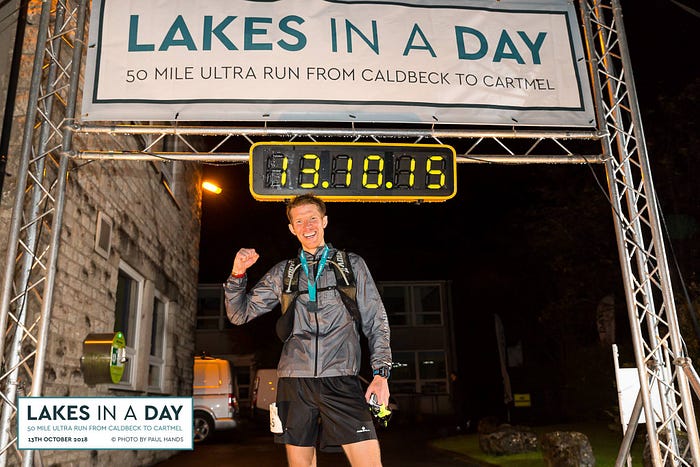
Distance: 81.9km (50.9 miles)
Elevation: 4,001 metres
Participants: 485 sign-ups, 378 starters, 240 finishers
Wind: up to 70mph (on summits)
Rain: shitloads
Official result: 13:03:05 (19th overall, 18th male).
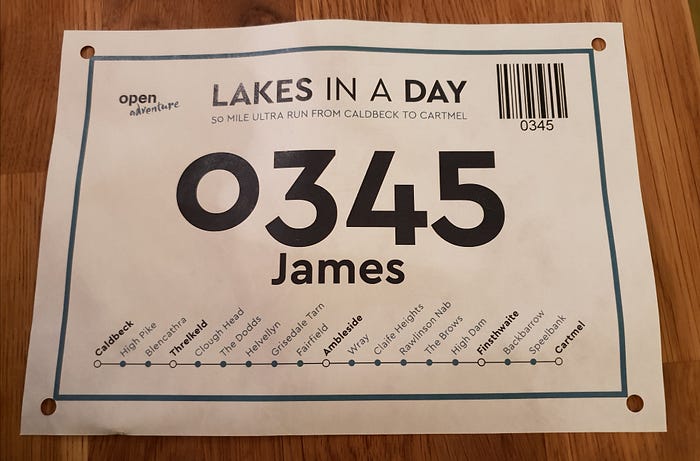
Race prep
You know the score by now — Lakes in a Day (LiaD) is a 50 mile ultra-marathon between two picturesque Lakeland villages (Caldbeck and Cartmel), with a few climbs in between. It’s what I’d been building towards all season.
I signed up to LiaD as soon as entries opened in late-2017, instantly attracted to the idea of a point-to-point adventure race from the top of the Lakes to the bottom. At the time I had zero experience of traversing the mountains of England — and couldn’t navigate my way out of the back garden. Thankfully I convinced Chris to sign up, too, so we’d enjoy the next 12 months prep together.
The early mornings, stupid distances and multiple trips to the Lakes — they were all aimed at conditioning the body to go that little bit further, falling apart a little less each time. I took part in my first proper fell race in early August 2018. Borrowdale was, to put it mildly, an ordeal. I had started off at the back, giving the occasion the respect it deserved. Worked my way through the field, thinking this ain’t so bad, powering up a couple of fells and hurtling down the scree off Scafell Pike. Then came Great Gable. The climb was okay, but people started coming past. Not a problem, I thought — I’ll get them on the way down. When I passed the summit and started the descent, however, something wasn’t right. My hips had aged at least 50 years. As I shuffled down Great Gable with seasoned fell runners bounding past, I learnt a painful lesson — my legs just weren’t up to the rigours of long-distance fell running. Oh, and note to self: don’t start LiaD like a lunatic come October.
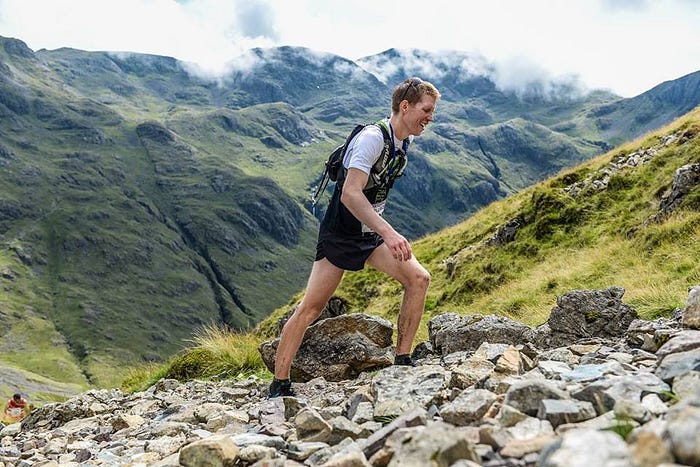
By the end of the holiday I’d recced the entire 50 miles (and then some). Great, I thought — I know where I’m going and when the big efforts are needed. But how on earth am I going to stitch it all together come October? Fast forward two months and I was still asking myself the same question. Training over the summer had gone well, culminating with a 70km run along the north Norfolk coastline. But there were still some lingering doubts going into LiaD. And these doubts were up to 950 metres in height.
In the two weeks before the race I prayed for good weather — checking the forecasts daily, hoping beyond hope for a cloud-free day on the fells. At least a week out it was obvious this wouldn’t be the case. Callum was planning to blow his load all over us on Friday and Saturday. Bastard! It would have been easier to take if the storm had been given a double-hard sounding name. Storm Axel can do what he wants to me and I’ll come back for more. But Callum? Anyway, come the Thursday before the race I was properly shitting it.
Mum and Lena have been permanent fixtures at my ‘big’ races over the last couple of years, but this time was different. Shortly after signing up I asked Dad to come with me. He’d not been to a race before and I thought this would be a good opportunity. Obviously, I’m a big boy and do possess the ability to go to these things by myself, but love having family waiting for you at the finish line. I was a little nervous about how Dad would find it, but I needn’t have been. He was awesome and totally got it, providing great support over the weekend (thanks for the stew at 2am on Sunday morning, Dad!).
So, we went up to the Lakes a couple of days early, familiarising myself with the shite weather and enjoying a couple of pre-race beers. Chris joined us on Friday night. When I picked him up from the train station we gave a lift to a chap who was camping in Cartmel on race eve. He would be enjoying the storm before the storm in a tent. Braver than me. But more on him later…
We went and registered, picking up our race numbers and checking out the competition. We posed for photos by the route map like a couple of ultra virgins. The chap who took our photo commented, “First ultra, eh lads?”. Ha, yep.
All that was left was to go and pack the neatly laid out gear into a tiny rucksack. At least the weather meant that I would be wearing most of my clothes rather than carrying them. It was a rather nervous night’s sleep.
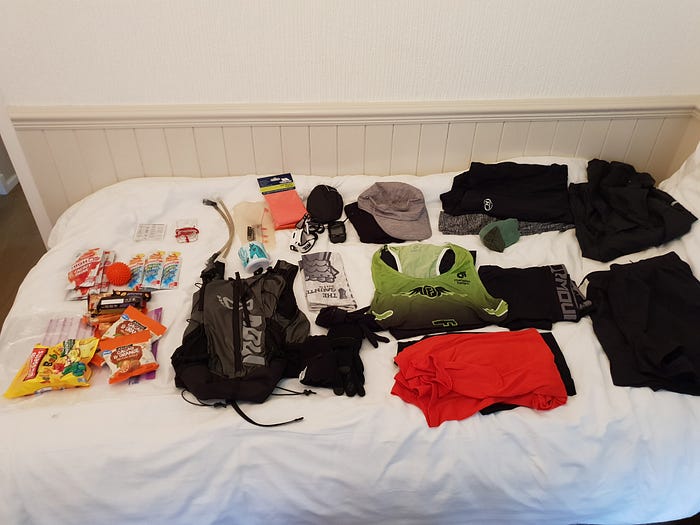
Race day
Race day started at 4.30am. Time to get fed, dressed and spend some time in the bathroom. The bus taking us to the start line left Cartmel not long after 5.45am. Took 90 minutes to get to Caldbeck. Bit of an anti-climax to turn up for a race and spend the next hour and a half on a bus. It should have been a good opportunity to visualise ascending and descending the mountains like a fell-running hero. Instead, I just sat there fretting and wishing I’d spent more time on the toilet.
The much-anticipated meteorological shitstorm didn’t turn up at the start of the race. It was more like steady drizzle at this stage — the type you don’t really notice once you get going. And get going we did, bang on 8am. The moment had finally arrived after 12 months of training and anticipation. It would have been easy to get carried away — but remember, I told myself, not too fast. I had no intention of smashing it up the first hill. That’s a debt you’ll repay with interest later.
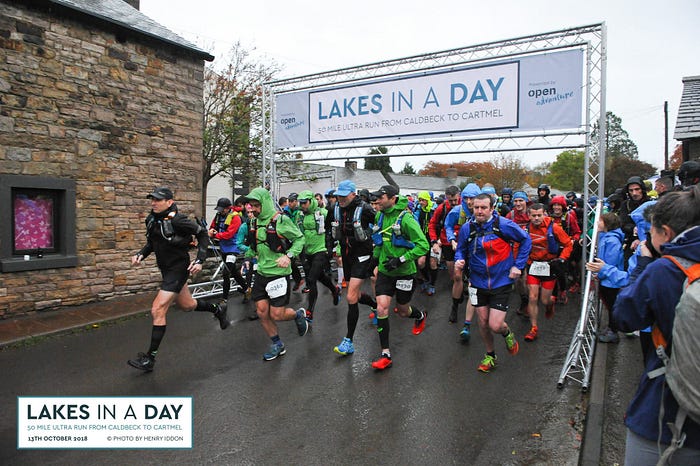
Caldbeck to Blencathra (13.5km, 02:11, 53rd overall, 53rd for section)
The first climb up to High Pike (658m, 5km in) was relatively leisurely. Chatting with Chris and a chap we’d done a couple of official race recces with earlier in the year. We were passed by a good number of people during the first few kilometres, and we’d started mid-pack. Important thing was not to panic and feel like you’re getting left behind. It’s an ultra-marathon, not, err, a marathon. We settled into a natural rhythm and reached the summit pretty much on schedule.
From High Pike we made our way down to Caldew river, where we’d cross before starting the climb up Blencathra (868m, 13.5km in). We had been warned that the water level had risen steeply and that race organisers had kindly installed a rope to help us get across. We took a good line down to the river and made up a few places. The water was high and fast flowing. Getting in you immediately felt the force of the current. One slip and you’d soon be heading down river at quite a pace. I hadn’t brought my goggles, so crossed cautiously.
The climb up Mungrisdale Common to Blencathra summit is famously miserable. There’s no distinct path, but rather a slog up boggy terrain. We’d recced it twice and were cursing both times. I decided to just get my head down and climb. I’d given myself an hour on this section and stuck to the task of maintaining the prescribed pace. What was waiting for us at the top of Blencathra was Halls Fell. A legendary ridge line leading down to Threlkeld, consisting of a rocky descent and not much wiggle room. I’d recced it three times, twice in the rain, so was prepared for the worst. I reached Blencathra summit and had a little breather, looked behind hoping to see Chris appear through the mist. I guessed he wasn’t too far behind, but I had a decision to make. We had talked about sticking together until Ambleside. Here I was at the top of Blencathra and we’d already split up. There’d been chat on the event Facebook page about mates doing it together, helping each other out through thick and thin. One voice told me to wait. Another told me to get going. I listened to the latter. I knew Chris would be okay.
Blencathra to Threlkeld CP (2.5km, 00:39, 47th overall, 51st for section)
I ended up descending Halls Fell well, 10 minutes faster than the recces. The specks of blood over the moist rocks kept me honest, though. At the bottom of the mountain was the first checkpoint (Threlkeld, 16km in). The village hall was a lot more relaxed than I was expecting. I had anticipated busy runners urgently grabbing some food and liquid before shooting off. But I found people sitting down, chilling out, taking their time. Fair enough. Was my strategy of getting in and out as quickly as possible a bit naïve? Some were handing in their numbers already — their race was done. I was surprised by this. The weather to Threlkeld had been mild. Yes, I was wet, but the rain had not been sideways, and the wind slow enough to pass by a school without breaking the speed limit. In hindsight, I think some were better at anticipating what was to come and decided to quit while they were ahead. Anyway, I grabbed a couple of pastries and got going.
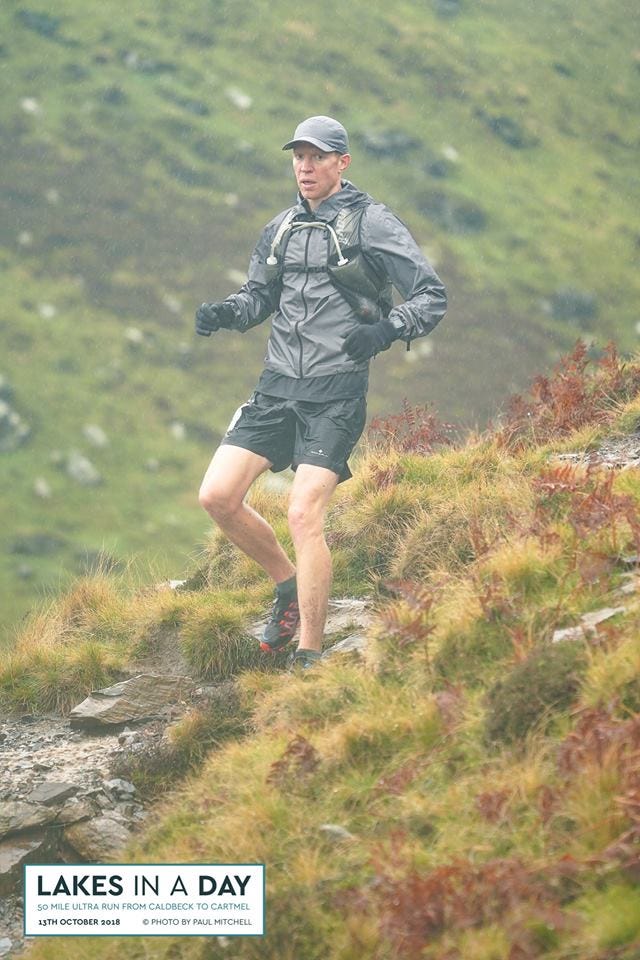
Threlkeld to Helvellyn, (15.5km, 02:25, 21st overall, 14th for section)
From the Threlkeld CP to the bottom of Clough Head was a few kilometres of easy running. I felt pretty good and caught up with a group of runners just as they were starting the ascent. One chap reckoned we were top 40. That’ll do me. My aim before the race, without really knowing what to expect, was top 50 and sub-14 hours. The little schedule I’d printed and laminated (NERRRRRD!) broke the route up into sections with a view to making it appear more manageable. Our climb up Clough Head followed the Bob Graham route. It was hard going, and I’d figured this might be the toughest part of the day. Boy was I wrong!
When we reached the summit (726m, 22.5km in) the weather changed dramatically. Slightly annoying rain turned to sideways sleet and where had this bloody wind come from? The weather in this next section was the worst I’d ever been out in. 70mph gusts coming at you head on. I was running with a very prominent lean just to stay upright. Still, I was moving better than others and made up a few more places. However, between Great Dodd (857m) and Helvellyn (950m) I felt myself getting colder. My base layer had become sodden and I was starting to shiver. I wanted to stop and change but felt this wasn’t an option. There was no shelter and trying to swap layers in these windy conditions could have meant lost clothing. I just carried on. My inexperience on the fells here was obvious. I was relying on my ability to move quickly, rather than an ability to handle the conditions well. How much longer would this last? I was relieved to see Helvellyn trig (950m, 31.5km in).
Helvellyn to Ambleside (14.5km, 02:56, 33rd overall, 78th for section)
Things didn’t get better, however. The passage from the top of Helvellyn down to Grisedale Tarn was the worst part of the race for me. I was getting colder, moving slowly, and felt my legs starting to suffer. This was Borrowdale repeated, just minus the sunshine. The waves coming off Grisedale Tarn were impressive. I had said to Chris previously that I wouldn’t mind a swim in there. Not today. I found enough shelter to take my jacket off and add another layer. I was soaking wet, but this would add some warmth. Arriving at the bottom of Fairfield was a relief as it meant I didn’t have to run. This would be the last big climb. I’d lost loads of places by now but was starting to think more in terms of just finishing the race regardless of position.
I had three runners above me in sight, and as I got closer it was clear that something wasn’t right. Two of them were helping the third up the mountain. On closer inspection I realised that the chap in trouble was the one we’d given a lift to the other night — he was struggling to put one leg in front of the other. At the time I didn’t stop to think whether taking him up the mountain was the right thing to do. I just put my shoulder to his arse and helped with the push. What were we going to do with him at the top of Fairfield? Was one of us prepared to sacrifice our day to get this chap to safety? Fortunately, we never had to answer this question. We met a group coming off Fairfield and they offered to take him down. Good lads, you got us out of a hole there. (I saw matey after the race and he said he was fine, and that he wished he had carried on. I told him that was never an option and that we should all be thankful to the descending group).
Arrived at the top of Fairfield (873m, 37km in) without further drama, and began the journey down to Ambleside. This section is easily underestimated, as the terrain over Hart Crag and Dove Crag is hard going and requires (from me anyway) more scrambling than running. I was struggling to find any kind of rhythm. One of the chaps with whom I’d climbed Clough Head came past and could see I was struggling. He shouted at me ‘Just get off this fucking mountain’. This became my mantra for the remaining miles into town. Just get off the mountain. Don’t think about what you’re going to do when you get there. Just get off the mountain. It was tough, but I was over the hump — literally and figuratively. I wasn’t moving particularly quickly, but the terrain started to improve. The last bit of drama was a fellow runner telling me I was going the wrong way. I disagreed and suggested we stick together. He chose a different path. Despite this seed of doubt being planted I was 95% sure of my direction. I was relieved to find something familiar from my recce and followed the path into town. Tarmac never felt so good! But I was sore, very sore.
Ambleside to Finsthwaite (22.5km, 03:17, 20th overall, 16th for section)
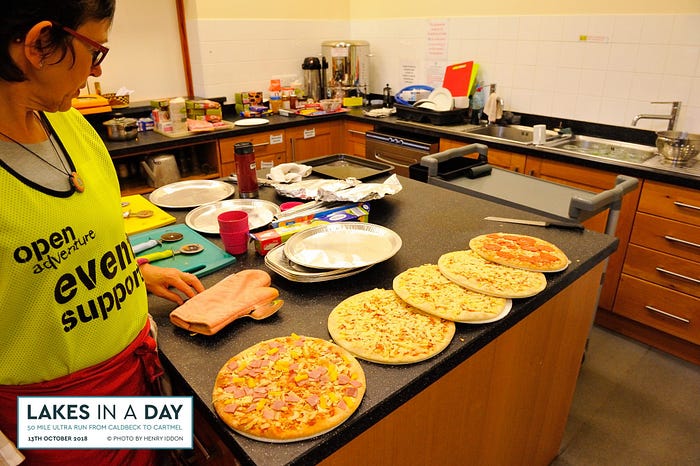
My plan had always been damage limitation in the first half of the race, and then hopefully be in a position to run the flats and downhills in the second half. I felt like I’d blown it, entering the Ambleside CP (46km in) with a mix of relief and frustration. Had I gone too hard? I’d tried to take things steady, but I was almost broken. Then something miraculous happened. I took my time, without sitting down and getting too comfortable. I changed into my remaining dry clothes and felt immediately better. 10 slices of pizza and half a litre of coke later, and it was time to get back out there.
I have difficulty explaining this transformation at Ambleside. Was it really as simple as a change of clothes and scoffing a medium-sized margarita? Or had I entered the CP feeling a bit too sorry for myself? Anyway, I left feeling brand new. The momentum was momentarily broken by a bit of flooding on the route out of town. The cars were struggling to pass and there were long queues. At one particular pinch point a policewoman was directing traffic. I asked her if it was okay to for me to pass — she smiled and nodded the way forward. It was a bit weird running (wading?)down the middle of the road past a load of stationary cars up to their wheel arches in water. Some encouraging words helped me on my way, and it wouldn’t be the last time I’d get wet that evening.
I was more in my element now. The rain was lighter, the wind had dropped, and I was moving relatively well. All that was left was a 35km trail run with a few ups and downs. Bread and butter. And it did feel good. I figured I’d left Ambleside just inside the top 40, and the prospect of picking off a few runners between now and Cartmel was enough motivation to keep a steady pace.
The second half of the race wasn’t entirely without its challenges, however. The route takes you along a path adjacent to Windermere. Except tonight we would be running through the lake, rather than alongside it. Not exaggerating to say that I was waist-high in water on more than one occasion. Tripped over a couple of times on some well-hidden roots, and nearly went nipples skywards on a couple of wet, wooden bridges. All part of the fun, but these obstacles would be even more lethal in the dark. I spared a thought to those runners who would be passing through here in the next few hours. Massive respect to anyone who completed this race, especially those who took the longest — demonstrating huge willpower to just keep going.

The head torch came out not long before the climb up to High Dam (67km in). I say climb, it felt more like a brisk walk considering what had come before. High Dam looks like a lovely spot, even in the dark. As I started the descent into Finsthwaite, decided I wasn’t going to stop at the final CP. From there it’s only 12k or so to the finish, and I had a bar of chocolate to get me through. It was one of the best decisions I made on the day, as I felt pretty good on the final section into Cartmel and didn’t need a break. Having a checkpoint strategy for these races is really important. It’s easy to waste time at CPs.
Finsthwaite to Cartmel (12.5km, 01:39, 19th overall, 7th for section)
Bit of a hairy moment running through the field out of Finsthwaite, though. I managed to upset a cow, who made a rather loud noise and appeared to make a move towards me. It helped me run a little quicker. Caught up with a runner a few minutes later who complained that a cow in the same field had tried to headbutt him! Sensitive beasts, those Finsthwaite cows.
Not much happened from there on in. Have to say that I was really impressed with the waymarking on the second half of the race. I vaguely knew where I was going, having recced the route, but the little yellow signs were a massive help. It was such a relief when the light from your headtorch caught the fluorescent arrow. The last tricky part of the race was running through the fields of Speel Bank (76km in) where you have to dodge sheep that look like boulders, and vice versa. Once you’re through there, its downhill all the way into Cartmel. My penultimate kilometre was the fastest of the day at a leisurely 4min 42secs. At the time it felt like I was going at the speed of an Olympic sprinter and that my quads would need to put out with a fire extinguisher.
Slowed down again to enjoy the adoration of the assembled hoards in Cartmel. In fact, I only saw one person as I ran through the village — my Dad. He was outside the Kings Arms in the rain shouting encouragement. I told him I’d be back soon. That first pint wouldn’t touch the sides.
I finished not long after 9pm. I was delighted with that. It was under my target time and good enough for 18th male, and 19th overall (congrats Katie Kaars Sijpesteijn on her win and new course record). I’d made up a fair bit of ground in the second half of the race and still wonder whether I’d be better suited to lumpy trail running than this mountain stuff. I won’t be giving up on the fells quite yet, though.
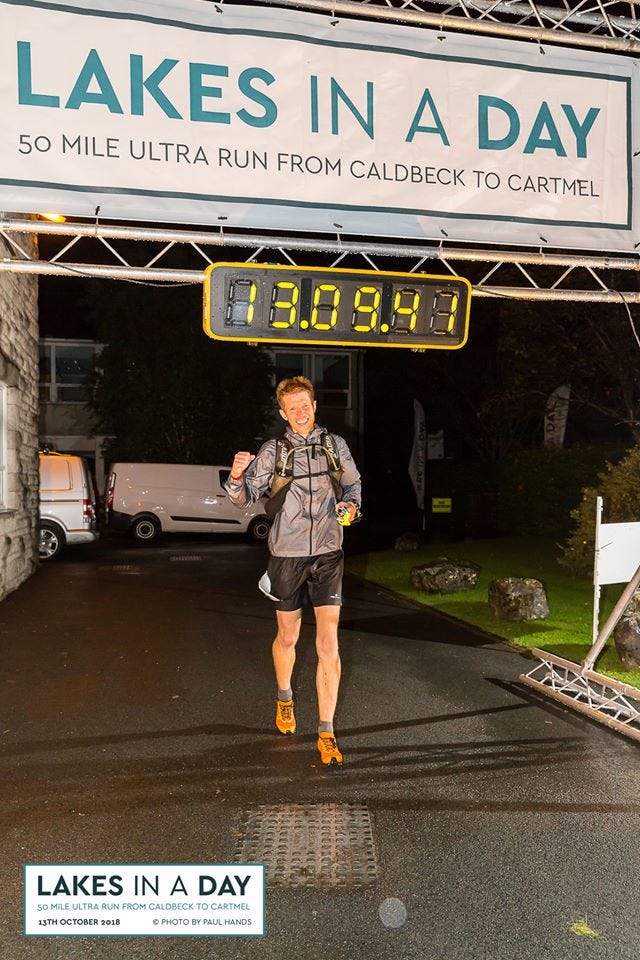
It was great to see a friendly face in Liz Aitken at the finish line and have a chat about the race. With her determination and endurance she’ll make a great Lakes in a Day competitor.
Liz told me that Chris was either still in Ambleside or his tracker had given up. I’d received a text from Chris when he reached Ambleside a couple of hours earlier, and there was no mention of any problems. I wasn’t worried in the slightest, he knows how to get through tough times. The man himself texted me a bit later, ETA of approximately 1am. Time for the best shower in the world and a couple of pints then! I was chuffed to see him cross the line bang on time. We’d both worked bloody hard to get this far. What a wet and wonderful day!
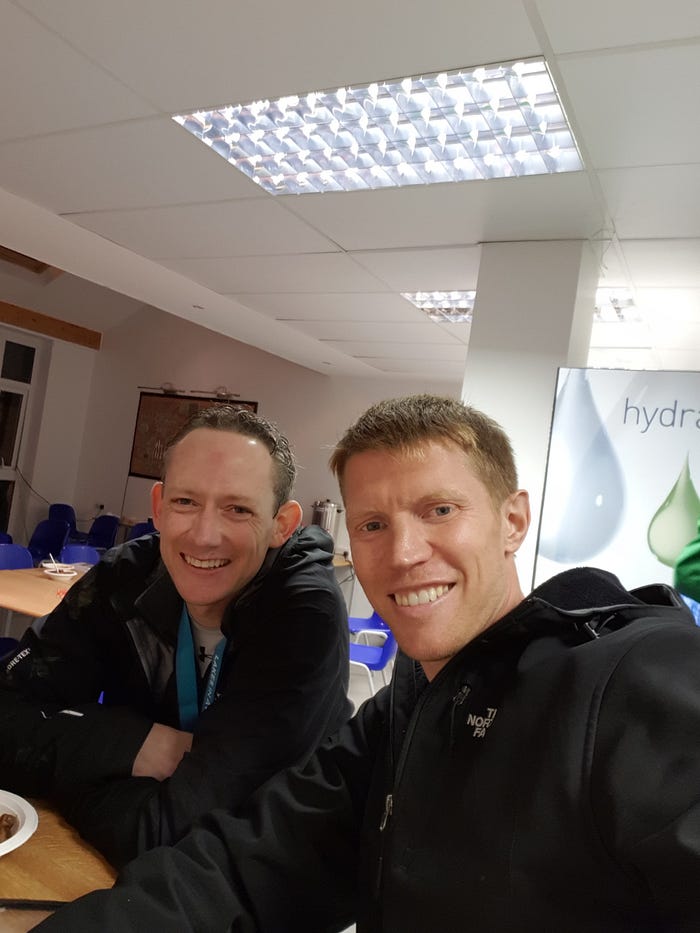
Post-race
I was overwhelmed by the number of messages from family, friends and Freedom members post-race. Ultimately, you do these events for your own sense of achievement. No one cares more than you. That said, I feel very lucky to be surrounded by people who are genuinely interested in how you get on. You know when you’ve done well, and it’s great to have that recognised by others. If you’ve managed to read this far, it shows that you care, so thank you.
Running is such a massive part of my life now. I bloody love it and embrace the challenge of getting better. It doesn’t matter where you are in your running journey, or where you finish in a race — as long as you enjoy working hard, you’ll make gains.
Bring on the next challenge!
Written by David Caulfield
No matter how you slice it, 127 kilometres/ 80 miles is a long way to travel in 21 hours. Mentioning that distance to anyone outside of the ultra running world will get expressions of disbelief and looks suggesting you ought to be committed for your obvious madness.
The challenge is both physical and mental and so it helps to break the distance down into smaller targets. Thus think only to the next CP and what time you need to arrive there, then to the next and so on. These smaller achievements add together quickly getting you beyond the half way point, to the three quarters way point and eventually…..to the finish.
Training
I started 2017 injured and so was unable to run until mid March. I was recovered enough to do the Maurice Mullins half and from there I eased myself back in.
A significant birthday in 2018 raised the idea of an entry to the UTMB to “celebrate” my encroaching decrepitude. The requirement to have 15 points over a maximum of 3 races (just to enter the lottery) started the grey matter turning. I had 4 from last year’s Transvulcania so to get to 15 I would need to do two 6 point races or one 5 point and one 6 point. I settled on the Wicklow Way Race and if that went well then the Kerry Way Ultra. I was in no way sure that my recovery would continue in the face of ramped up mileage but I was about to find out.
Training over the next twelve weeks included recce’s of the course sometimes with friends but mostly on my own. Solo recce’s invariably mean an out and back thus can end up being very long sessions. Over this time I logged many long runs the longest ranging from 26 to 30 miles; recovery from these was monitored carefully and happily all went well (I swear by chocolate mile and recovery tights). I had enough time that I was able to include a few back to back long runs and was very happy to see that my injury was now almost gone.
I ran the Clare Burren Marathon at a very easy pace two weeks before. By this time I had reccied all but the last 16 miles of the WW so on the Sunday before, I ran/ walked the first 7 miles from Crossbridge towards Clonegal and back. Probably not the smartest thing to do so close to race day but it helped ease the “I might get lost anxiety”. There would only be 7 or so miles on race day that I had not covered previously.
Race Day Plan
Given my lack of running and the overall length of the race I set about dissecting its various stages and cut off times to see what flex there was in the paces I could run to allow me finish comfortably within the cut offs. Using Excel I calculated several scenarios and settled on the following (I still work in miles).
• CP1 Crone 13.75m (22km), cutoff 3am: 12 minute mile pace to arrive at 02:37.
• CP2 Glendalough 17.5m (28km), cutoff 8am: 12.5 minute mile pace to arrive at 06:31 (take 15 min rest).
• CP3 Ironbridge 15.63m (25km), cutoff 12pm: 14.5 minute mile pace to arrive at 10:42 (take 15 min rest).
• CP4 The Dying Cow 16.25m (26km), cutoff 4pm: 14.5 minute mile pace to arrive at 15:01 (15 min rest).
• CP5 Raheenakit 6.25m, (10km) cutoff 6:30pm: 16 minute mile pace to arrive at 16:51 (20 min rest).
• Finish at Clonegal 10m, (16km) cutoff 9pm: 16 minute mile pace to arrive at 19:46
The above plan put emphasis on the first two CPs, which were the tightest to make with time pressure reducing significantly by CP3. These paces were pedestrian but given the significant distances covered and my under trained state I felt they were realistic. The rest stops I included also looked very generous but when stops to change batteries, take out a jacket, take a whizz etc, are included they were again probably realistic.
Race Day Prep
I took the Friday off to try to get a few hours sleep during the day and to prepare my drop bags.
No two people will pack the same food; I included lots of drinks I like drinking since I find it hard to stomach eating during races. Small cartons of orange juice proved to be very palatable and a good energy provider. Also successful were small easy peel oranges, two per drop bag. Other food included chocolate (snickers which I didn’t anticipate I would bother eating but did), crisps, cheese nachos and small tuna & sweet corn sandwiches (one per drop bag, I ate the first sandwich and couldn’t stomach the rest), plain water in my hydration vest and gels. I also had a triple shot of coffee to be consumed shortly before the race (to give me a boot up the arse).
Notable kit included
• Black diamond z trail poles
• A small waterproof stuff sack (keeps items kept inside completely dry, weighs ounces)
• Light long sleeve running top; it was to be cold over Djouce (Richard N you were right)
• East West Map guide to the Wicklow Way
• A small power pack to charge my Garmin and phone (my watch can be charged whilst recording a session)
• Salt tablets, pain killers and deflatine
• 50 euro note (in case I needed to make quick exit)
• A couple of gels (with others dispersed over my drop bags)
• All of the above were in addition to the mandatory kit
Kit that might be worth including (much of which can be left in a drop bag)
• Change of top/ bottom
• Change of socks
• Road runners
• Motilium or crystallized ginger
I got a lift to Marlay Park with friend Liam Costello and was quickly through registration, kit check and tracker collection (race organization fantastic, thanks Jeff, Robbie, Richard, Tricia et al). My head torch is a Petzl Nao+ and it was my first time using it so I made sure to practice the settings to ensure I got the maximum time from the battery in the hope that I wouldn’t have to stop to put in the spare.
Marlay Park to Crone 21km (Climb 684m)
After a short race briefing we were off! It was good to get out of the park and up towards Kilmashogue carpark and Fairy Castle. I have run this part of the Wicklow Way many times so there was no chance of me taking a wrong turn. However the fear of my missing the first cut off ensured I kept up the pace. The weather was already proving to be wild but since much of this part of the way is sheltered it wasn’t too bad. Through the gloom sheep’s eyes reflected green, the field quickly spread out and already if felt like I was on my own in the mist, rain and blackness. I was soon over Prince William’s seat and to the nice descent that provided recovery before putting the boot down again. I made Crone at 2:32, 5 minutes ahead of schedule. It was lashing rain; thanks to the volunteers that had to stand in it. I stopped for less than a minute to grab the contents of my first drop bag and then was off again towards Djouce. Judging by the wind and heavy rain this part of the course was going to be interesting!
Crone to Glendalough 29km (Climb 868m)
I have been over Djouce on many occasions in all sorts of weather. I was there on the day of the Maurice Mullins Trail and Ultra in 2013 with the crazy weather that happened on that day. The weather tonight however trumped all that. As I passed the point that looks across to Powerscourt waterfall the wind through the trees was alarming; was I going to be flattened by a falling tree? On I went to the left turn that started the descent down to the footbridge over the Dargle. Up the other side and onto Djouce where as anticipated it was WILD. The trail was an ankle deep running river, my head torch lit just a 2 metre bubble of light beyond which there was thick mist, pitch black, torrential rain and gale force winds. I’d last been here in February so the undergrowth of green that had grown since made the trail hard to pick out.
As I ploughed on through the maelstrom I was getting a bit freaked out. I pressed on with the mantra, “it will be light soon, the rain is going to stop and the sun is going to come out again”. Then the battery went on my torch. Damn! No choice but to stop, dig my spare battery out of my pack and whilst doing that put on my waterproof legs, neck gaiter and gloves. I was cold now and needed to get moving again. Once on the boardwalk progress was a little easier and soon I was out of the worst of it and running past the Pier gates. The rest of this section was unremarkable; I arrived in Glendalough at 6:45, 15 minutes behind schedule; a lot of time had been lost on the side of Djouce.
Glendalough to Ironbridge 25km (Climb 882m)
The CP at Glendalough was like an oasis, bacon sandwiches and coffee!!! The restorative power of coffee cannot be underestimated. Thanks once again to the organisers, fantastic job.
I stayed a bit longer than I’d intended but felt very much restored. Once at the upper lake I began the long climb out of Glendalough. On reaching the top the wind was blowing strong on the board walk and it was still cold. I moved on quickly down the other side to Glenmalure and to the last significant climb of the day. The Wicklow Way from Glenmalure is quite twisty for the first couple of miles followed by a significant section on the road. I met up with a couple of fellow runners, Andreas and Paul and stayed with them for the next 20 miles or so. Thanks for the company guys. I was beginning to feel tired around this time so stopped for a couple of minutes and ate two oranges before setting off again. A check on my pace and time to the next cut off had me speed up again and soon I was on the downhill towards Ironbridge arriving at 11:12 a half hour behind schedule but still well within the cut off.
Ironbridge to The Dying Cow 25km (Climb 525m)
Another great set up; more coffee (from a coffee plunger!!), home baking and a deck chair to sit down! Luxury. Thanks guys, ye are legends. As myself, Andreas and Paul were leaving Ironbridge (50km to go) Andreas decided he would change into his road runners. I went on ahead knowing they would catch me. I made a quick phone call to my wife to let her know all was well and by the time I’d finished Andreas and Paul had caught up. This section seemed to take forever when I reccied it in April and it seemed to take forever again today. By now the rain had gone and the sun was out; the Djouce experience seemed a very long time ago now. I shed any unnecessary clothing, put on suntan lotion and connected the charger to my watch. I recorded a couple of very slow miles at this time and in hindsight I was clearly very tired. I made sure not to repeat the wrong turn I’d taken back in April in a forest section early in this part of the course. I had reccied it again in May and found the marker I’d missed behind a gorse bush (which I pruned).
We pushed on eventually reaching Cuckoo Lane and shortly after, Crossbridge. Andreas and Paul went on ahead at this point; I was slowing but didn’t feel like taking any more gels (which was probably a mistake). At about a mile and a half from the Dying Cow I came around a corner to see in the distance my brother and two nephews! My niece and sister in law were there too. What a great surprise! Hugs all round and a quick photo and then a quick dash to the Dying Cow to make the 4:00 cut off. I got there at 3:36, phew!
The Dying Cow to Raheenakit 11km (Climb 267m)
My arrival time to the Dying Cow would prove to be the nearest I came to not making a cut off. Beyond this however lay just 16 miles to the finish and 5 hours in which to do it. Surely nothing could stop me from finishing now. First I had to make the Raheenakit CP 6 miles away by 6:30. Thanks to the guys at the Dying Cow, great encouragement as I left. A last goodbye to my brother and I was off up the steep road towards Raheenakit. This section of the Way is fairly non descript and almost entirely on road (so a change to road runners is an option here). Just before the last CP came the much-vaunted Coronary Hill (a long uphill boreen with grass in the middle); I put the head down and power walked up (my poles aiding my progress). I made the last CP at 5:10; I just had to stay upright and keep putting one foot in front of the other and I’d finish.
Raheenakit to Clonegal 16km (Climb 222m)
Heeding the warning that many have taken a wrong turn in Raheenakit forest I made sure to be extra alert for the WW markers. At this point I was doing virtually no running but instead power walking. With the exception of one marker I almost missed which takes you left down a narrow grassy track, I didn’t go wrong. Shortly after I entered the last forested section which as mentioned by others is paved with very pointy rocks that are agony on tired feet. A short way in I met fellow runner Martin; I’d last seen him near Lough Dan many hours earlier. He was running on empty, the offer of a couple of oranges seemed to help and he was soon back on his feet to keep me company. A wrong turn by me cost us 10 minutes; I am very grateful to Martin for having the GPX file on his watch thus noticing my mistake; I would have walked much further in the wrong direction otherwise.
The highly anticipated Clonegal 5km road sign was at last reached. Some of the race volunteers appeared here to offer us chips! Thanks Lillian and the second person who’s name I don’t know.
Many have said it before and I will confirm it again here. This is the longest 5km I have ever run/walked/ shuffled; it seemed to go on forever. Over the majority of the race I had stayed true to my plan of power walking the uphills and running the flats and downhills. But now sadly I could only manage to run for a few metres before stuttering back to a walk. I was passed by a couple of other runners in the last kilometer but I couldn’t give a damn. I had set out with the sole purpose of finishing within the cut offs, a good time had never been a possibility so my finish place was of little consequence to me.
I could see the town in the distance! As I rounded the final bend I found myself muttering repeatedly “thank god, thank god, thank god”. Clonegal at last and the Wicklow Way sign. YES! I DID IT!!!!!
I finished in 20 hours and ten minutes, 24 minutes behind schedule. I’d been up and awake for 34 hours.
I was greeted by my wife and son, (emotional, sniff, sniff). Then Jeff appeared, congratulated me on finishing and presented me with my granite finisher’s plaque with the little yellow man. Chuffed to bits!
I am constantly surprised at what the human body is capable of. I managed to come back from injury, squash my training into a period of less than three months and finish well within the cut off. Thanks legs, heart and lungs, I’ll go easy on you for the next couple of weeks, I promise!
A huge shout out to all involved in organizing this fantastic event. An amazing job! We are very lucky to have a race of this calibre on our doorstep.
Race Tips
• Recce the course for peace of mind on the day (the only wrong turn I took was on the 7 mile stretch I hadn’t run before).
• Get to bed early on the nights of the week coming up to the event.
• Include variety in your drinks and food; this will improve the likelihood you will keep fueling (unless of course you are fat adapted and don’t need to eat).
• Trail poles used properly can be of great benefit in prolonging endurance.
• As with any long distance event, expect to experience “bad patches” and know that they almost always pass.
Written by Stuart Shipley - https://shippo88.blogspot.com

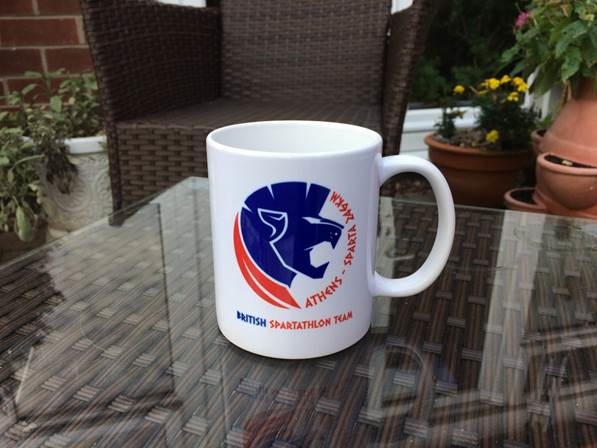
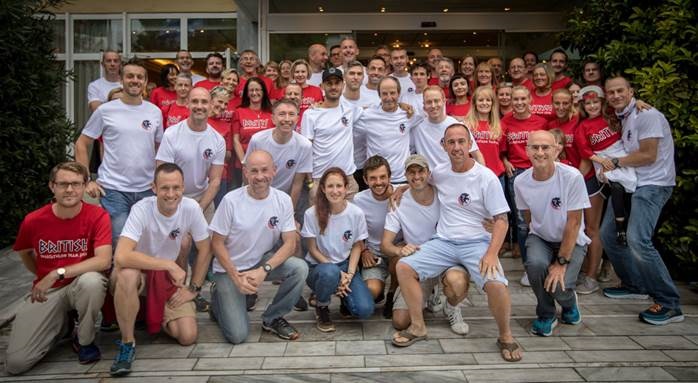
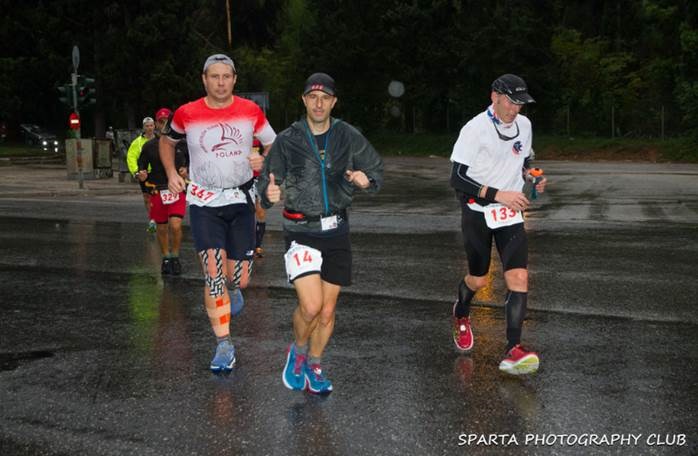
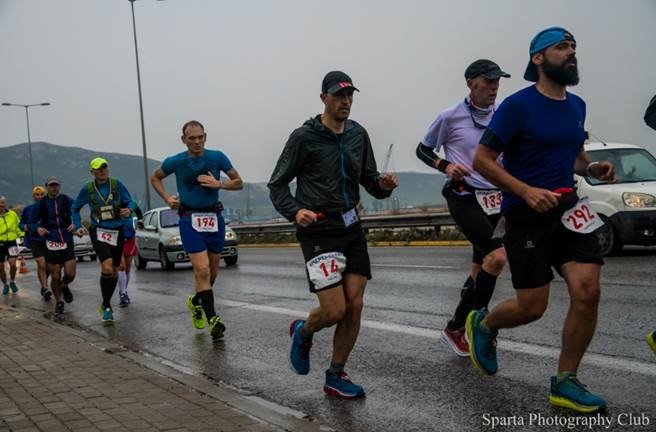
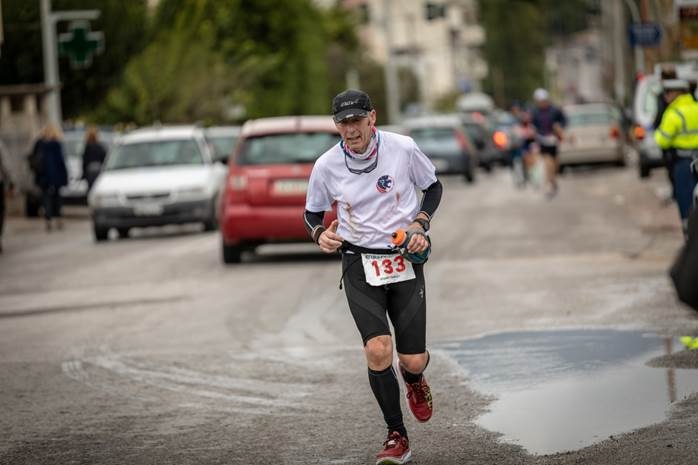
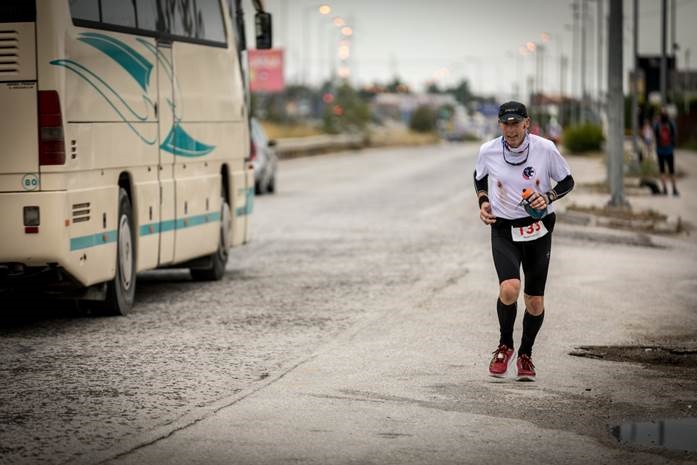
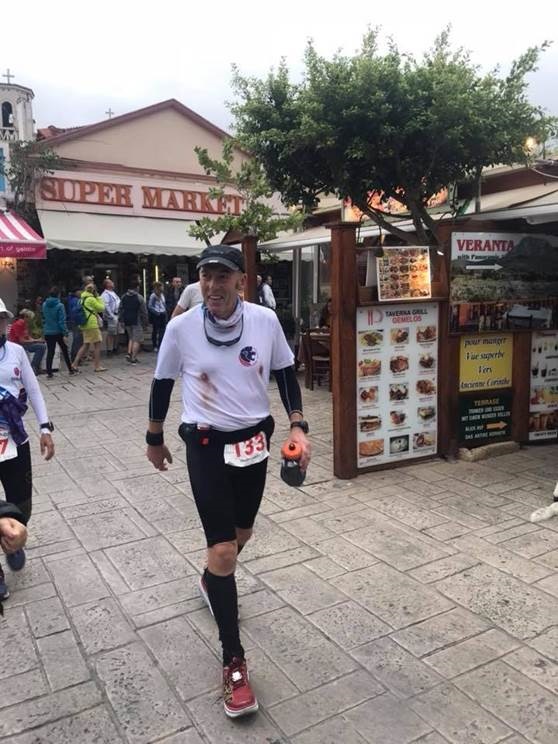
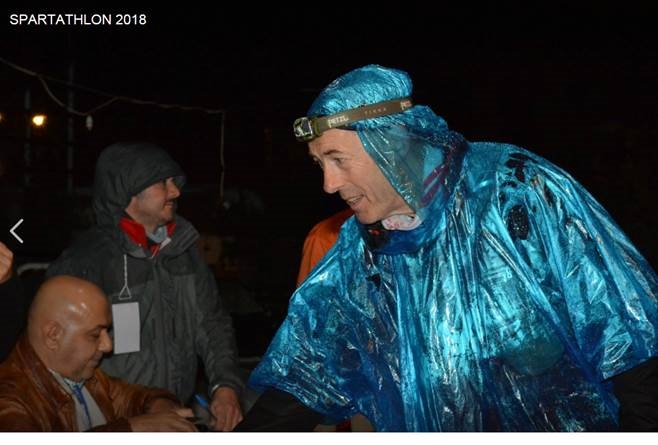
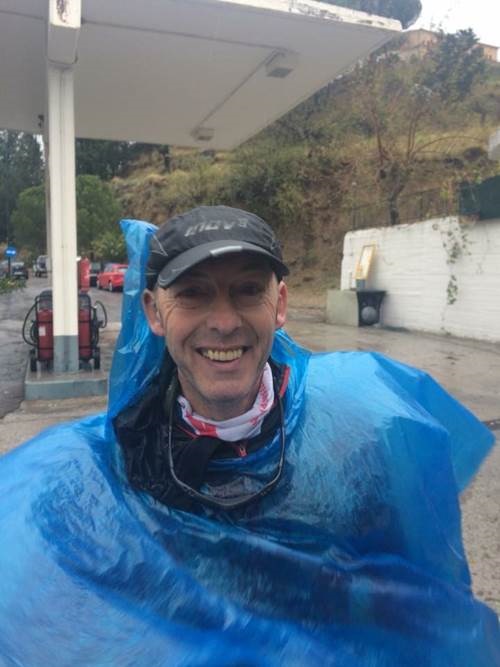
So, I think it was probably a one-off rematch. One time in 7 the variables might just be right for me to finish but I’m not sure my knees have it in them or I can stave off old age and inevitable decrepitude long enough for that to all come together again. I am never going to get an autoqualifier so it could be another 3years or more before I get in again even if I did apply.
Written by Steve West - https://theparttimeultrarunner.wordpress.com
Last year I failed to complete this race. (Arc of Attrition – DNF 9th Feb 2018).
I was gutted! I had trained hard for 6 months, doing big mileage weeks and I felt good. However the Arc is no normal race, not even a normal 100 miler. Mudcrew designed this race to be hard, really hard! Its about more than distance and elevation. There are just 4 CP’s along the route rougly 20 miles apart. 20 miles is 4 hours right? Not on this course, the distance between the CP’s can take 7/8 hours + to cover. Its really technical in places and rarely simple to make forward progress.
Last year I got to Zennor point before DNF’ing but this year I knew I had to do something different to ensure history didn’t repeat itself. The arc is a race that having previous experience of is a huge benefit. I learnt so much about the route, the kit, the mental approach necessary to succeed and I made sure this year that all of that was part of my thinking in preparing to take my revenge.
Training: After falling short in 2018 I knew physically I was capable but mentally I wasn’t there. So I knew I had a difficult 100 finish in me. Within a few weeks of getting back from Cornwall I had signed up for a nasty 100 around the Brecon Beacons – SW100 which you can read about here (SW100. Is it over already…?.).
I finished and finished strongly which gave me huge confidence about moving for 30hours + and mentally staying in the game. Cornwall was going to be totally opposite conditions but I knew what to expect and could plan for it.
As for SW100, I concentrated on hill work and strength for my Arc training. I did a few 60 mile plus weeks but mostly hovered around 35 miles a week with a number of hill repeat sessions thrown in. Including regularly using my long run (only once over 15 miles) to be via a hill repeat. I think 23 repeats was the most I did, managing 13.1 miles and 2500ft or and another 8 miler with 3000ft.
I always run too much in my usual 3 week taper so picking up a cold and being busy in work was worrying me, but perhaps was a blessing in disguise and I only ran twice a week totalling 12 miles during each of the 3 weeks prior to race day. I actually hadn’t run for over a week come the start.
Kit:
After a glorious Friday, last years Arc was really wet on the Saturday. I made mistakes with not changing to dry kit especially at Lands End where I had my drop bag, but I knew my waterproof wasn’t strong enough to cope with those conditions properly again. I also knew my head torch could no longer hold decent power for more than a few hours. Both needed a visit from Santa and he obliged.
I went for a heavier jacket, knowing I would likely not take it off and so the ability to pack it small wasn’t necessary. A Montane Ultra Tour – it wasn’t cheap at £220 but I managed to find one at Go Outdoors for a bargain of £112! I was so impressed with it. It allowed me to regulate my heat in a variety of ways and when I got cold, hood up, zip up and just breath into the jacket for a few minutes and I was warm again.
I went for a Silva Ultra Trail Runner 4 on the head-torch front. It was so light compared to my LED Lensor. Being the Ultra it has a rechargeable pack as well as the ability to take aaa batteries. I had the LED Lensor as my second torch and 3 spare sets of batteries. The main pack lasted from just outside Porthleven CP (430pm ish) until the Minack Theatre (2am ish) – so 9.5hours. It didn’t run out but I was paranoid about it dying in the middle of nowhere so I changed the batteries anyway. The aaa’s lasted me from 2am to dawn and then 5pm until 1030pm when I finished – so again around 10 hours. It is so lightweight and has the red flashing light you can wear on the band – perfect. I cant recommend it enough.
Travelling to Cornwall:
Let be clear I got stuck in some snow. It was annoying. It was not however, anything close to what others went through.
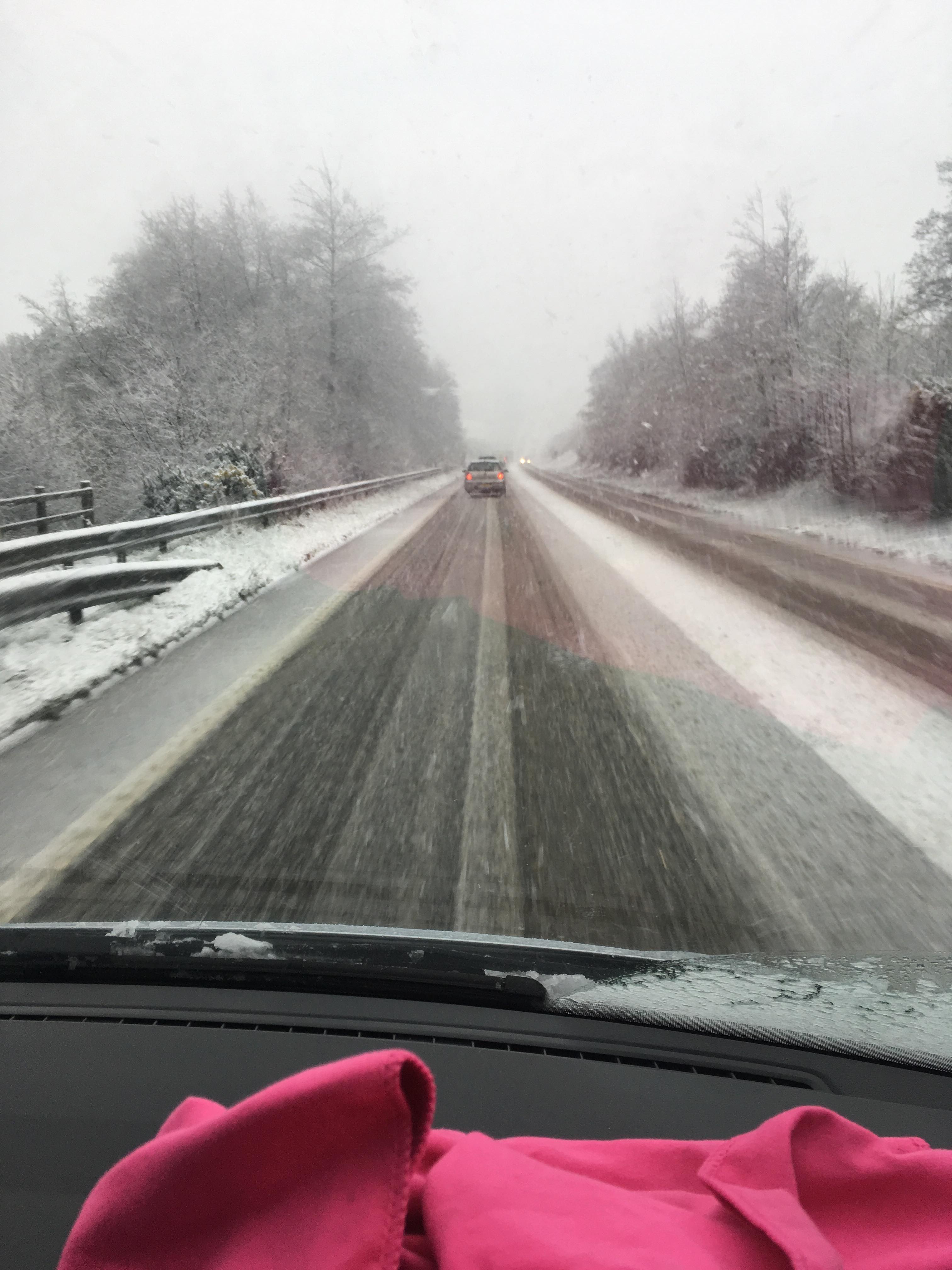
I left Cardiff at 11am and hit heavy snow on Bodmin Moor around 2pm. However it hadn’t settled properly at that time. When I got close to Perranporth, the traffic slowed and eventually stopped, with nothing moving for an hour. I had been watching cars turning around and heading down a back road. After some investigating on google maps and the sat nav, I thought I’d give it a go. 20 mins later I was greeted with blue sky, bright sunshine and a full rainbow. I arrived at the Eco Park at 330pm basically before anyone else, except Jane Stephens from Mudcrew. I offered to help out but everything was in hand. It was then we started to realise the chaos unfolding back up the a30. There were people who hadn’t moved from north of Truro for the last few hours.
I was due to meet up with my Friday night Arc 2018 buddy, Harry Macalinden and go for dinner at the Victory Inn. Harry eventually arrived around 2am so I definitely made the right decision to head to Hayle and my hotel room, for a shower, food and a warm bed. I say my hotel room but I was crashing with another friend (Paul Wootten) who was also stranded, luckily in his camper van with gas stove, bed, etc.. By now people were facing the prospect of spending a cold night in cars/vans on the a30 and getting little to no sleep prior to a huge race like this. I was lucky, really lucky.
The roads back to the Eco Park the following morning were OK if a little icy in places.
The race itself:
Last year we had a bag-piper. This year was drummers. Coverack was as gorgeous as I remember, the sun had come out and things looked good. I was really hoping that the -10 degrees with windchill over night wouldn’t come true, but I was prepared and ready for it if it did.
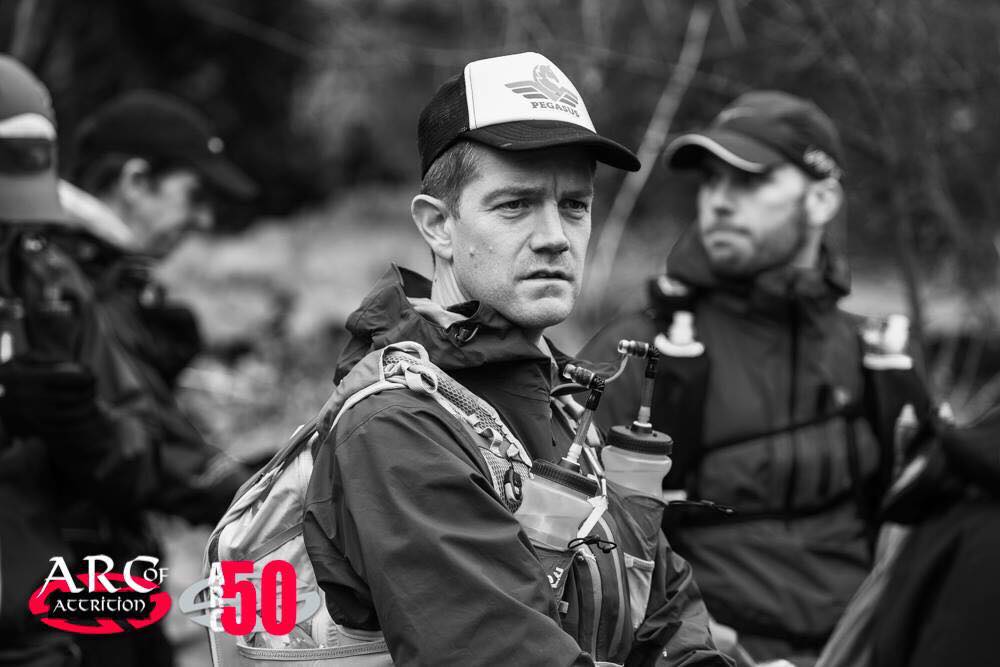
12pm on the dot through the smoking flares we ran. Some faster than others. I forgot how bottle necked the first mile or so gets and whilst I was far from the back this year, there was still some natural stoppages in places. Its hard to remember in the moment, that those 30 second delays are meaningless and probably a good thing, ensuring you don’t go off too quickly and letting the heart rate increase slowly.
On the Tuesday night I had made a lovely ground Almond, Blueberry and Banana loaf. I had some with me and more in my drop bag. 5 miles in and I thought it was time for a snack. You forget that you have breakfast around 7am, then the race starts at lunchtime, when you are hungry, so its best to eat on the coach and shortly after the start. I had some of my cake and it was difficult to eat, but eat it I did. 10 mins later and I felt like crap. For the next 30 mins I was looking for somewhere to drop out! ‘I haven’t trained enough’. ‘My taper was too extreme’. ‘I cant do this, this is the easy bit’. This was as bad I could have imagined after just 6/7 miles. Then I threw up, 10 mins later I threw up again. 10 mins later I felt good. Another 10 mins later and I was feeling really good. Note to self throw away all my cake in Portleven!
I had chosen my Hoka Speedgoat 2’s as a leaving present from work back in September, with this race in mind. I now know how narrow they are, but at this stage the blisters hadn’t arrived, although I was sliding around all over the place. I went down 4 times in this section. Frustrating and worrying for later but no damage done apart from some muddy waterproof trousers and gloves.
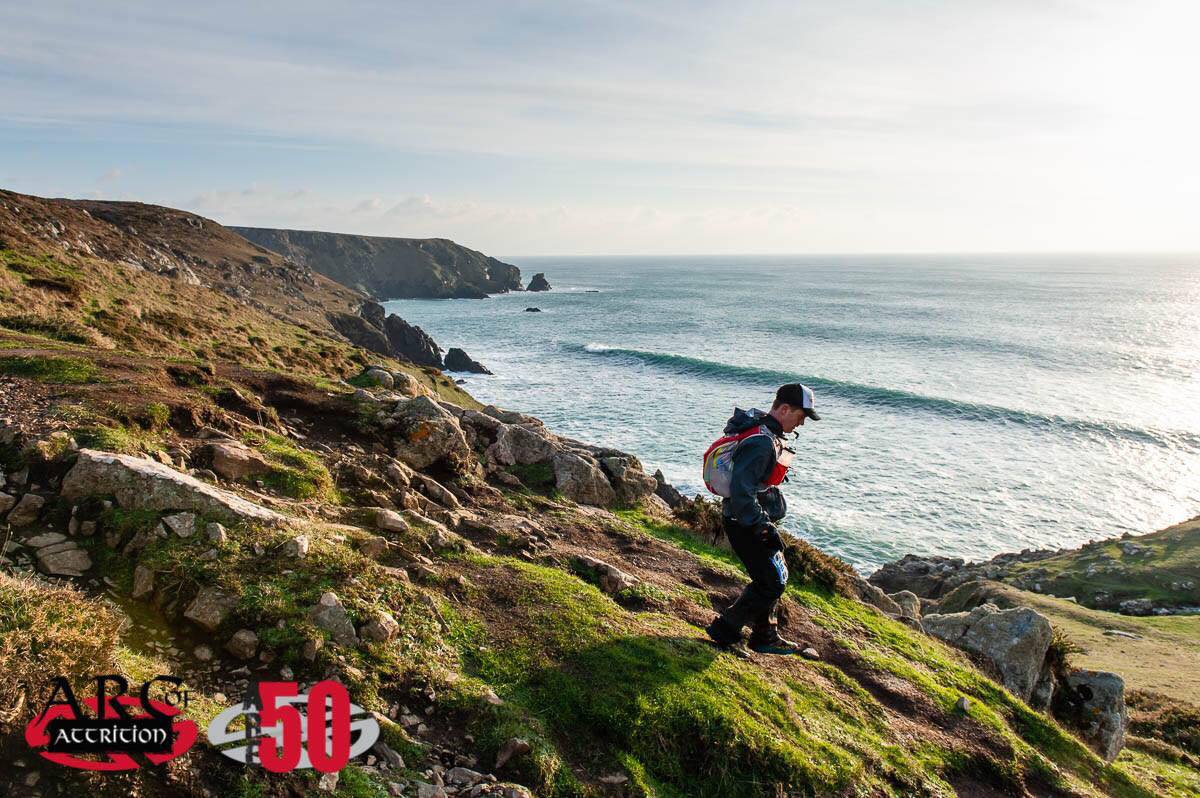
I rolled into Porthleven and was met but one of the valets who made my day by saying I looked strong as some people had come in hobbling up the hill to the CP. I ordered 2 portions of beans and cheese on toast, knowing this worked for me last year. Last year however, I just didn’t eat enough of it. Bottles sorted, cake disposed of and ready to go.
The next section is Porthleven to Penzance. You know on paper its only 15 miles or so, so that sounds really simple and a good place to get ahead of the cut offs a bit more. I recall I guy laughing about how he planned to do it in less than 3 hours and he would be well ahead of cut offs. I asked and sure enough it was his first time on the SWCP. I gently warned him to lower his expectations in terms of the time for this.
Despite not being the most difficult section of the course, it wasn’t going to make for easy and fast running. The more I was running the more and more of the course I was recognising from the previous year. I knew that somewhere up ahead was a 90 degree left hand turn and that I missed it last year. Sure enough whilst chatting to someone I nearly missed it again, but spotted it just a few metres behind me. The rest of the section into Penzance is fairly steady going, albeit you never get into a great rhythm and being 35 miles in its far from quick progress.
My feet were starting to hurt now and it would have been lovely to have had a support crew and swap shoes for my Clifton 4’s on the long drag into Penzance. You can see Penzance off in the distance from a long way out and it teases you with how close it looks. You want to run, but its difficult, 40 miles in and 60 to go you know that if you do push too hard you will pay for it later. I adopted a tactic I’ve used many times on long straight drags, run/walk – this time 2 mins run and 1 min walk. I was catching the couple in front me despite them running it all, I didn’t manage to catch them as I got into the CP but I was happy with my progress.
I was looking forward to beans on toast with cheese again so I was fairly disappointed that it wasn’t on the menu this time. Don’t get me wrong there was lots of food available but I know the wet beans and carbs of the bread go down nicely. I was able to get a few portions of soup, 3 cups of tea and a bit of fruit. I also had my feet looked at for the first time. It wasn’t too bad, just one blister forming on the little toe on the left foot. One of the Omega Medics did a brilliant job on taping it up and I hoped that would be the last of the foot issues. Oh how wrong I was. I didn’t have any other shoes with me or in my drop bag and with no crew, I knew I had to make do to the end.
I kept seeing Harry Macalinden at CP’s. Harry and I ran through the night on the Friday last year, from I cant recall where, to just after Lands End where unfortunately Harry’s race ended shortly after in Sennan Cove. He was looking strong though this year and being ahead of me, and confident that I would get through, I hoped Harry and I would both make it this year. (Unfortunately he didnt make St Ives in time, but he’ll be back and he will get that buckle next year!)
I sorted out some kit, had a change of base layer – a mistake I made last year in not doing so which ultimately got me cold and wanting it all to be over. Time for the off.
There is just as long a road section out of Penzance as there is going in, although more undulating as you head to Mousehole and I was making steady but good progress along the lit promenade and then the roads into Mousehole. One vivid memory about last years race was looking up at the stars as I went through Mousehole. I did the same again and whilst it was a cloudier night, there were still more stars out than I ever get to see back home.
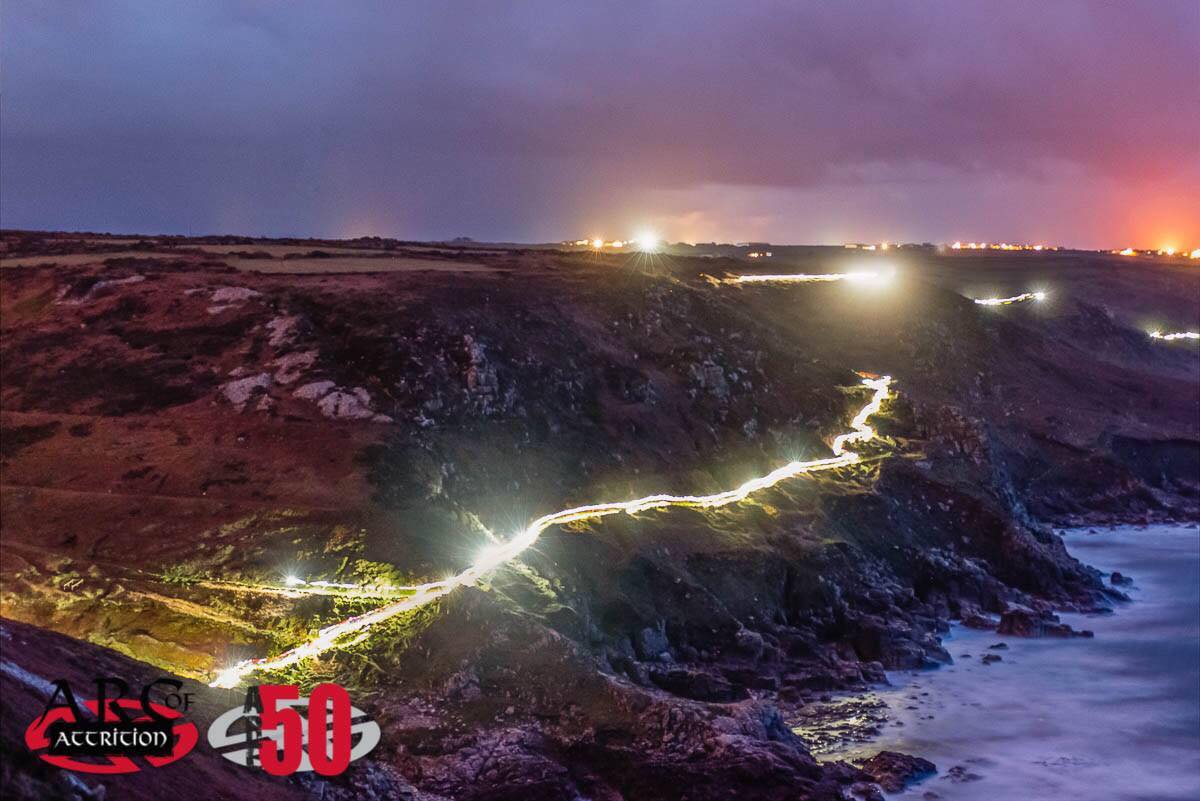
I don’t recall much until I arrived in the region of Porthcurno. It is strange that you can constantly hear the ocean crashing the rocks around this section but its so dark you just cant tell how close you are and how extreme the cliff edge is. Shortly after Porthcurno you start heading towards the Minack Theatre. I so wish I could go during the day one year and see it in something other than pictures and videos from the start of this years 50 and the other Mudcrew race, Tempest. I remember the climb to Minack last year and how horrible it was but somehow this year I overshot the turn. I could see head torches off to my left but for some reason I was following road signs. Somehow I had ended up on the road to the car park and I just hoped beyond hope that I would get through OK. I remembered the car park so I was fairly confident I wouldn’t end up having to double back on myself. I didn’t and I came out on the opposite end of the car park. I was in a bad way here. I was worrying about my head torch which had had a good 9 hours of burn so far and being a new one, I didn’t know from experience how long it would last. I needed water, food and a change of top again. Not having a crew I asked someone elses if they minded if I sat in their car for 5 mins but they told me the Medic was here and so I made my way to them and jumped in their car.
I was at my lowest point so far here. I quickly got another top on and tried to get warm. The medic filled my bottles for me, I ate and drank and changed the batteries in my torch. I couldn’t get them working though. I had taped the three aaa batteries together so I could just pop them straight in without faffing around with each individual battery, a brilliant tip I read on a Nici Griffin FB post recently. But every time I shut the battery enclosure it stopped working, it was driving me mad. I was shaking as well, a lot. I couldn’t stop shaking. I started to think the medic was getting worried and might think I wasn’t ok. I was, thankfully he knew this too. We had been having a normal conversation and he explained it was likely just the adrenaline of my urgency to get to the car park. He kindly sorted out my batteries by splitting them out from the tape I had put them in, and it worked fine. I decided to put all my gloves on, 3 pairs, merino liners, Sealskikz and Trespass mitts just to make sure I warmed up as quickly as possible.
I had spent 20 mins in the car and this was far too long. I was ok on the cuts offs but I didn’t have a lot to spare and I needed to make good progress again. After giving much appreciation to the medic, who promised to look me up in Lands End, and he did, I left and it was then I spotted a friend, Geoff Partridge in his support crews van. Geoff is a great runner, a 4 time arc racer and multiple Comrades finisher, in both directions! Geoff has a gold buckle from previous years, but has been trying to run through a long standing hip injury, which unfortunately was affecting his race this year too. We stuck together from here and decided that the company through the night to Lands End and beyond would be helpful, both from a sanity perspective, passing the time perspective, but also the all important navigation.
Those that have run the race will know that about 1 mile before you get to the Lands End CP, there is a building on the corner of a path before you drop down the hill side and head up again to the CP. I made a huge mistake here last year and had to drag myself and Harry through thick gorse whilst we spotted head torches pulling away whilst on walking, as a result of being on the right path. To my horror and embarrassment, as I was the one navigating off my Fenix 3, I had done it again. You know the right thing to do is re-trace your steps and find the path, but of course that’s the one thing you never do, and we didn’t. It was very slow going and Geoff’s niggles were making it trickier for him too. We lost maybe 10 minutes here but finally were relived to be back on the path and a short walk into the CP. I was looking forward to this, my drop bag. It was huge, lots of food, both for the CP and my race vest for the last half of the race. Also a MSR water filter.

I dropped last year at Zennor point as I ran out of water and knowing there were limited places to steal water off kind support crews, I had the water filter, borrowed from a friend, to take water from the streams. There was bound to be plenty with all the snow fall on the hill sides.
This year the Lands End CP was in the hotel rather than the Ice Cream parlour. There was so much space it was great, as last year it all felt a bit crowded and manic. I asked for my drop bag but went to find it myself as they were all laid out nice and easy to find. Except mine. Mine wasn’t there! They’ve lost my drop bag! “Mmm Hi, I cant find my drop bag?” Their faces! They were panicking. There must have been 5 of them hunting for my drop bag, including the medic who helped me out at the Minack.
I was trying to eat and not panic too much, ‘they’ll find it’. I got my feet sorted out, which were showing further signs of deterioration. After 10 minutes, one of the angels approached me and built up the courage to tell me that it was in Porthtowan. In short, it was my fault. I had left my drop bag with the finishers bags at the Eco Park. My heart sank. I recall thinking, assuming, that the pile of bags by the tracker fitting, were the drop bags and so put mine with them. I didn’t check with anyone and this was the result. I was panicking now – a lot! Kit, food and mainly water. The angels were great, they managed to find me 2 x 500ml water bottles, the kind you get with a meal deal at M&S or Boots. I borrowed a pair of socks of Geoff, and a couple of gels/food bars.
Harry had arrived, I rambled out my news and asked on the off chance if him or his friend had a spare base layer they weren’t going to need. To my amazement and absolute relief, they did. I was reluctant to take it as I knew that spare kit is a runners safety net in this race, especially on the next section to Zennor and St Ives, but Harry insisted. Life saver!! Somehow though, I had lost one of my Raidlight 750ml water bottles. I was worried about water, didn’t have the filter I was relying on, but then lost one of my water bottles. This was madness. There is no way it could have bounced out of my pack, it wasn’t on the table, rolling around on the floor and the angels have confirmed since that it wasn’t found when the CP was closed down. It remains a mystery! I still needed more water though. I ended up carrying a 1.5l squash bottle full of water on the side mesh pockets of my Salomon pack. I was now carrying 3.25 litres of water and whilst I could feel the weight, I was much happier with this than going lighter and worrying about what lay ahead and a repeat of last year.
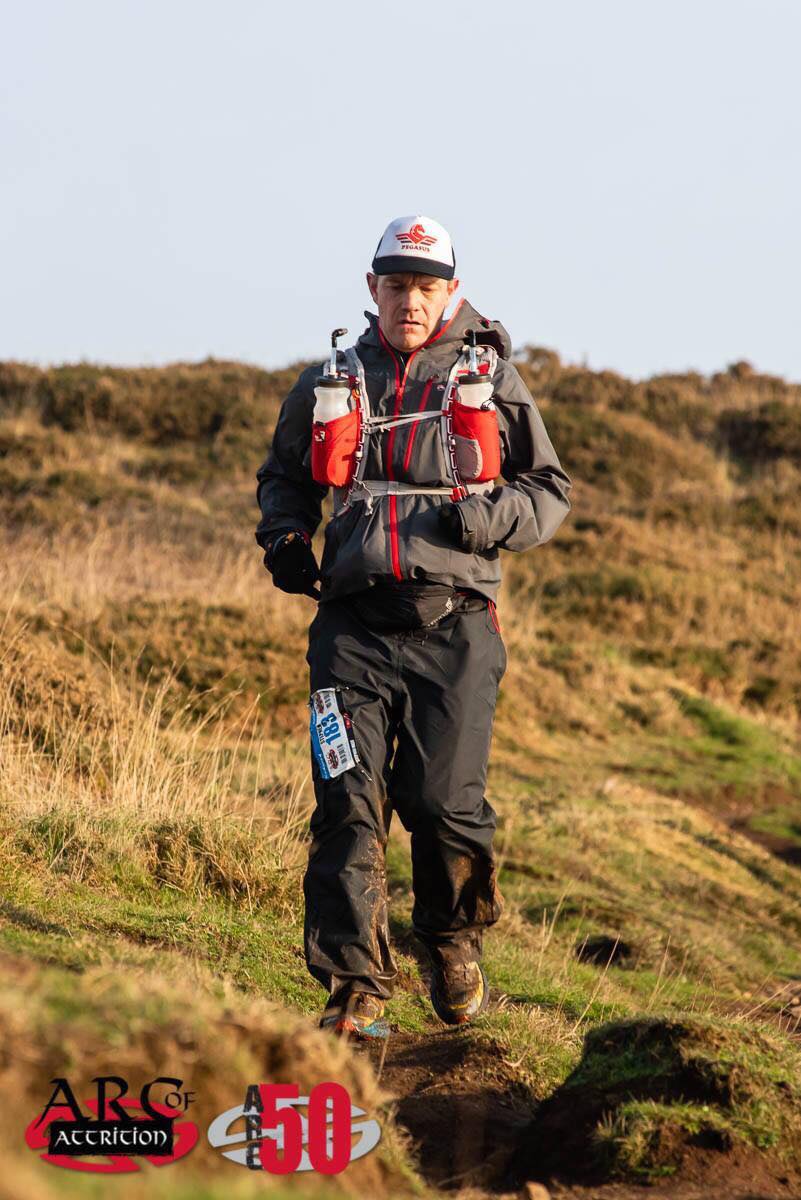
Geoff and I left Lands End together, still confident that we would make sufficient progress to make the next cut off, a new and challenging one at Pendeen Watch. Geoff and I came up to one of his good friends (Laura Millward), whose house he was staying at in Cornwall and he wanted to stay with her, so I pushed on hoping to make good time.
I ran like the wind last year through Sennan Cove, so much so I inadvertently dropped Harry and then felt guilty about it for the next 24 hours. Progress this time was slower but I was slightly ahead of time compared to last year and better prepared for what lay ahead. The first part of this section isn’t too bad, but then you head towards Lamorna Cove. Things get knarly here for a while. Lots of technical and slow moving terrain, some big stones to get through, lots of mud, small brooks/streams, more mud and narrow tracks, still in the dark. There are lots of opportunities to loose your footing and go down. It seemed to last for ever but I made it through without going down and was relieved to be heading to Cape Cornwall, somewhere I remember from last year being really exposed if the weather wasn’t good and funnily enough this is where the hail storms started.
As I said earlier I had bought a Montane Ultra Tour and it didn’t half do what I wanted it too. It was awesome in the weather. I pulled my hood up and tight, zipped up, had my mitts on over my sealskinz and aside from the noise of the hail on my jacket and head, it didn’t bother me at all.
I headed down to Cape Cornwall with a group of 3 guys who I managed to trot past as the hail came down again, sideways. Ive read several people refer to these as being the size of marbles coming horizontally into your face. Personally, I think that’s entirely accurate. There were 5 hailstorms, (I think) in total over the next few hours, but this one was a fairly big shock. Support crews were running for cover as I entered the cap park hoping to find someone to help.
There arent many support crew access points between Lands End and St Ives, so there was a good number of crews at Cape Cornwall. I was very conscious of water, despite still having a lot with me, but also a lack of food. I cant remember what, but I needed to get something out of by dry bag in my race vest and so despite the hail coming down, I found a guy who looked like he might be willing to help me and asked if I could jump in his van for a few minutes to sort some kit out. He rushed around me like a pit stop and helped me sort out whatever it was I was doing and offered me some bits of food, again I cant recall what. He was waiting for his runner to come through (Sarah Whittaker) and was relaxed about her progress until I asked if they were confident she would make the cut off and Pendeen Watch. They were shocked, they thought the next cut off was St Ives. I got out the map/cut off guide and showed them. They were surprised but still confident she would make it through. I found out today from Carl Champion (who was the guy who helped me and her support crew) that Sarah did make it to Pendeen, but unfortunately when she got to St Ives she was feeling the full affects of this brutal race and her slight illness prior to the race was in full effect and she called it a day at St Ives.
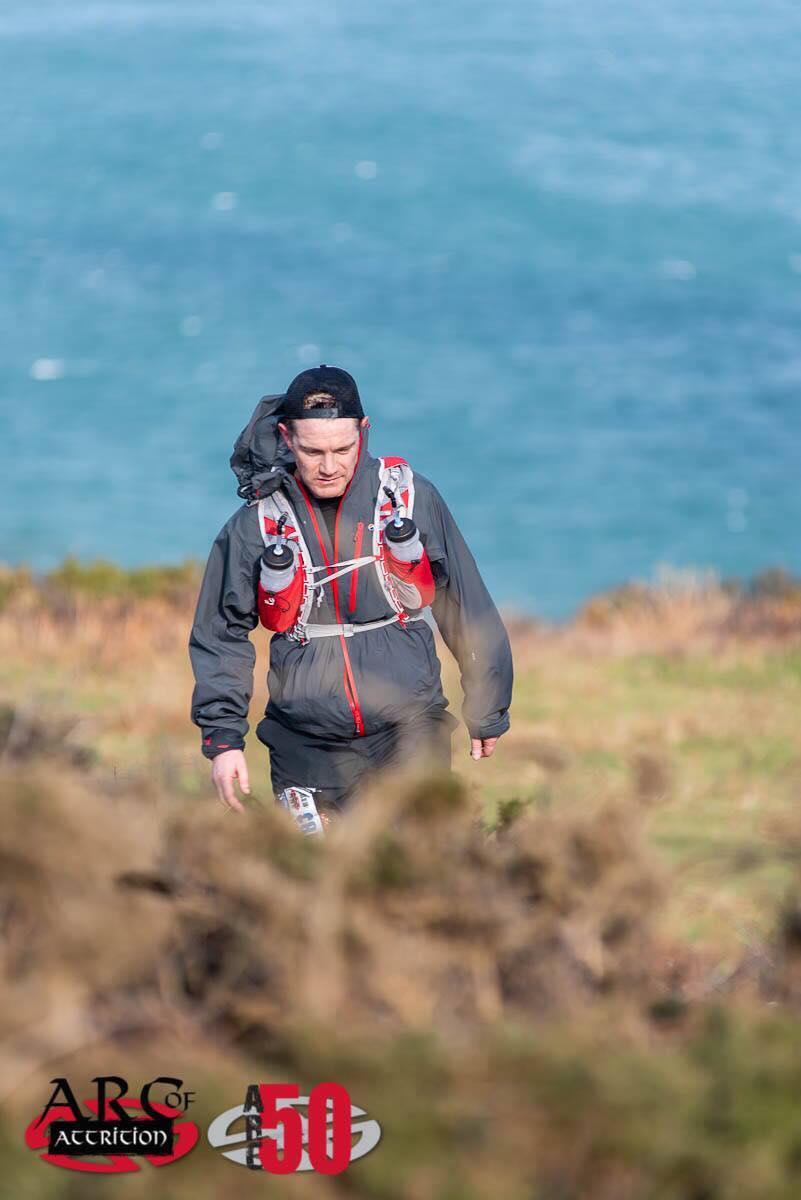
Whilst I was relived to have made Pendeen and navigated my way through the mines section, especially given the hail storms, I knew the worst was still ahead of me. The dreaded technical and remote section up to Zennor point, the scene of last years failure! I had met up with Harry again around here and was partially conscious of trying to stay with him and his mate, but at the same time I had my race to run and being concerned about the cut offs I kept to my own pace and after a short while and a few looks back, I had started to drop Harry and was out on my own again. I was over taken by two guys who were moving a lot quicker than me around here and I remember being very jealous of their speed over such difficult terrain.
Every turn and rise felt familiar and I was adamant that those horrid steps and the metal handrail up to Zennor point were just around the corner, every time I was disappointed. It went on for another 2 hours like this, I’m close now, but it never came. Then I could see the drop down and the steps up the other side, there was a crew at the top waiting for someone. This felt great. I took the steps up steadily not to push too hard with excitement and batter my legs unnecessarily.
I chatted briefly to the two guys here and they gave me some coke and dried mango – which I didn’t expect to be nice but was amazing. Must remember that for next time. They explained that there were 7 more miles to St Ives but I had over 3 hours to do it, no problem they said. I knew this was true but at the same time I didn’t want to hang about, I knew I could take advantage of a longer stop in St Ives if I got there quicker and needing to eat well, I made this a mission to give myself nearly an hour at the CP.
The path becomes less demanding from here to St Ives but I was aware of the standing stones section that I had heard so much about but never seen. I was dreading this bit, but when I got there I kept looking past it trying to see how far they stretched on for. I was relived to see that it literally was just what you could see and then it was done. I chose not to bring my poles with me due to this section and now I was really regretting that decision, knowing that any help my arms could have given my legs at the end would have been great.
I caught a number of runners on the flat drag into St Ives and I got chatting to a guy about how we were feeling. I explained about my drop bag and asked if he had a crew, which he did. In my state of desperation and knowing that my feet were going to be in a bad way when I got the medics to tape me up, and knowing I didn’t have any dry socks, I cheekily asked if he had any spares. I was beyond grateful when he said he would check with his crew but he thought he did. Next thing I know his Dad is running off into the distance to their car and ran back to me and handed me a pair of socks! Awesome. I promised to find them at the CP and get their address but the runner later refused and said to keep them as a memento of the race. If your reading this, thank you! My feet were an absolute mess but without those clean and dry socks they would have been even worse at the end.
I recall the St Ives CP from last year but only being dropped off at the door by Andy James’ support crew after they rescued me from Zennor. The streets are lovely but it all looked the same and so I thought the CP was just round the corner. So much so one guy asked me how far it was, or so I thought, so I said “30 seconds”. He actually asked me how long we had to get there, so for a moment he went into sheer panic and started running, before I realised I must have mis-heard him. 2 mins later and we were in.
It is generally accepted that bar any major issues, get out of St Ives on time and you can walk it in. Here I was, 45 minutes up on cut off, time to sort my feet out, eat, mentally reset and get out without being rushed.
I relaxed a little, chatted to a few people including Paul Maskell who was going to be sweeping the route. Ate, got taped up, a lot, by the medics and started to get my bits together. A few of us were all heading out within a few minutes of each other now, just 5 minutes ahead of CP closure time at 2:20pm. One of these people was asking around if anyone wanted company. This was massively appealing. I genuinely believe that one of the reasons I DNF last years Arc was due to spending so much time on my own and not having any company/distraction during those long hours between Lands End and Zennor. I jumped at the chance to walk with someone.
Carl and I got chatting and within 20 minutes I realised I knew of this guy from Cockbain events. I was somewhat confused though why, given his running CV, he was at the back with me. All became apparent. He had finished the Winter Viking Way 7 days before, running 152 miles one weekend then doing the Arc the next! The guy was a machine. So experienced and I had the huge benefit of his company to mentally help get me through the final stages of this epic race.
We walked the entire 23 miles. We chatted a lot but at the same time there was a lot of silence. So much so I felt guilty at times as Carl was moving like he was walking to the shops whereas my gait was terrible, I had pains in the balls of my feet from trench foot on both feet, horrible pains around my heels on both feet so any hills, but specifically steps down were agony. It hurt when I kicked stones, had uneven ground, which lets face it there is a lot of, but the steps were the worst. I was on my hands and knees at times easing myself down. Through the whole thing, Carl was incredible. He knew we had time on our side and he wasn’t worried about our pace, he was just happy to stay together and keep moving forward.
I was moving quickly (for a walk) through Hayle and prior to the Dunes of Doom on the tarmac but everything else on this section was slow progress. From just outside St Ives we also joined up with Wiebke Lammers, a Dutch lady who knew the area and the Mudcrew team really well. We chatted the miles away through the afternoon and started to talk about the Dunes. We quickly realised that she has recce’d the dunes a few times recently and we agreed that we would stick together and basically follow her through the best route on the dunes. She was confident we would make it through in daylight. This confused me, how bloody long are these dunes. 4 miles! Bloody hell! I hate sand, this wasn’t what I was hoping for. However we walked it all, and even picked up another 2 guys so 5 of us were following this amazing women like sheep through the dunes. She was faultless with every step!
We were all conscious of getting to Godrevy before the cut off but we knew we had time to spare. The 5 of us came through the dunes and all immediately heaped praise on her. The other 3 had crews and so they met up with them at Godrevy. Carl and I were unsupported but given the time we had spent together over the last few hours, we didn’t want to push on without the others. We stood around for maybe 10 minutes but I was getting cold so I suggested to Carl we push on slowly and let them catch us up. Carl kept turning round for the first few miles waiting and expecting the others to catch us but they never did.
I was hating this now. My feet were screaming at me every step. The ground was becoming really stony and uneven and every few minutes I was swearing and screaming. I wasn’t doing much talking now either. I was really feeling the lack of food I had with me. It turns out I had some Clif bars and a Chia flapjack on me but didn’t realise! Carl, as he had for the last 5 hours already, kept just in front or just behind me, putting no pressure on me to move any faster.
I cant recall one mile from the next on this final stretch before arriving in Porthtowan but I do recall all the 50 runners coming past us, more and more regularly as the hours went by. Every single one of them was asking how we were and saying how brutal they were finding the 50 and how they couldn’t comprehend doing the 100. This was a lovely feeling but I just couldn’t use it to move any faster, but we were still good for time, I thought. We were, but those seeds of doubt started to sneak into my mind, and I checked a few times with Carl if we were still OK for time as I was conscious that a mile was now taking around 25 mins and this was surely eating into the buffer. I recall at one point the ETA on my Fenix 3 saying 9:05pm and thinking this is great, but a while later it was saying 10:15, 10:20. I wasn’t panicking exactly but I was getting worried.
It was a huge relief to get that horrible double dip done as I was on my hands at times easing myself down, praying for the road hill up to the eco park. We dropped down off the hill side and down to the bus stop where there were loads of people waiting and cheering us and the 50 runners through. Surely we are close now. I turned off the navigation on my watch to save battery but as a result I had no idea how far we had left. The steep hill up from the bus stop went on forever and then a Mudcrew angel told us we had to turn off the road. What, this hill isn’t the hill? As you all will now know, it wasn’t and we still had a good mile or so to go. We continued at our steady pace, now knowing for sure this was done but personally I was still dreading this horrid hill that Ferg went on about. Up ahead we spotted the next Mudcrew Angel and knew this was it. Over the wooden bridge and up the hill. My god what a hill. The glow sticks lit the way but it was steeper than anything on the previous 105 miles of the course. Talk about sting in the tail. We plodded on, letting a few 50 runners through and eventually it flattened off and the top was in sight. Into the field and there in front of us was the blue inflatable finish. Carl tried to convince me to run but I was having none of it.
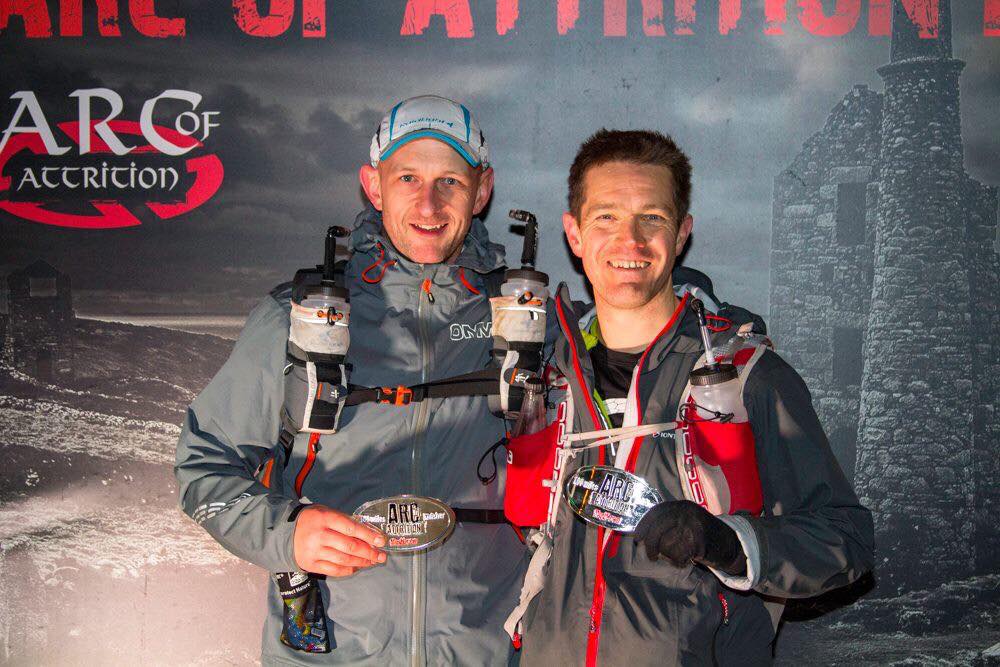
DONE. I couldn’t believe it. I had beaten the Arc of Attrition. This one had been so long in the making that I thought I might cry like I did when I finished my first 100 over 2 years ago. However, much like when I finished SW100 in June last year, I was just relieved and tired. Within seconds Geoff Partridge who I ran to and from Lands End with was there to see me over the line. He called it a day at Pendeen knowing he wasn’t going to make St Ives in time.
I was given my buckle and a hug from Jane and we got our finishers photos taken. I decided to pull a silly face in one of the shots and obviously that wasn’t a stupid thing to do.
There is more of a story about the next 24 hours, but really that revolves around the horrific state of my feet at the end, the medics telling me not to burst the blood blisters until it was clean and sterile, me having to put the same shoes back on to go to the van, sleeping briefly, driving to Carl’s hotel room, hobbling to the hotel room which was the furthest distance from the lift, sleeping on a bed with no sheets/duvet using my down jacket and a towel to keep me warm.
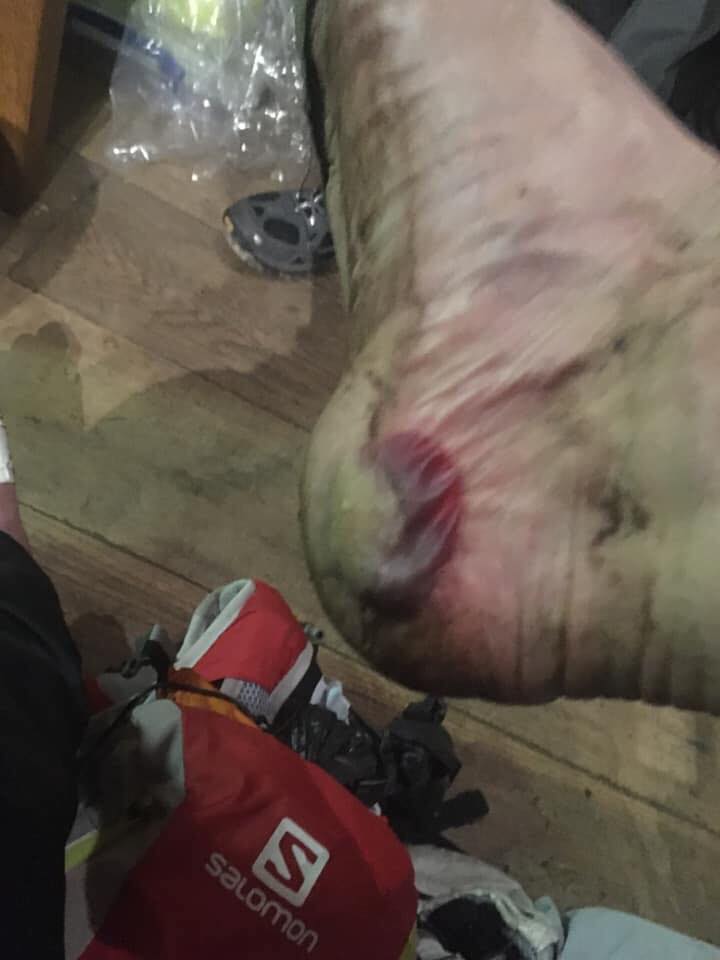
I bought Carl breakfast the next morning as a thank you for letting me crash in his hotel room. We both ordered a huge cooked breakfast but we both enjoyed the granola, fruit and milk the most. It was wet and tasty in a way that none of the food over the last 40 hours had been.
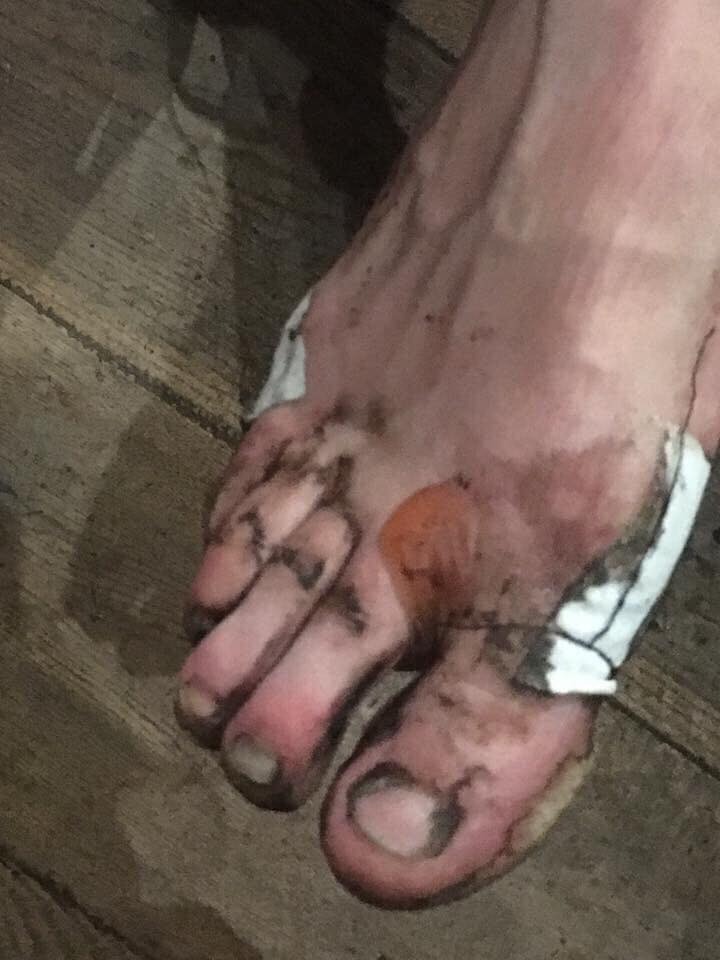
The hotel breakfast room was full of Arc runners in various states of abandon, but most with the shared tiredness that can only come from having spent 40+ hours of being awake and maybe 5 hours of sleep. No wonder then I had to pull over on Bodmin moor and have another sleep in the van. This time minus the snow!
11 days on, my feet have almost recovered. Ive been on a course of antibiotics for a toe nail and potentially cellulites. I ran to work this morning. It was OK but I wouldn’t have been able to push any pace. The run home was much harder work though and a clear sign that Im not yet fully recovered. How Stephen Cousins was able to jump on a treadmill the next day and run is beyond me.
Ive already bought some new trail shoes and if anyone wants to buy a pair of Speedgoat 2’s (UK 10.5) then let me know.
I always said that I was never going to go back to the Arc, irrespective of whether I got my buckle this year or not. But within, 48 hours, I was already thinking 34:32 in that pain, in the wrong shoes, without my poles, I reckon I could do sub 30 if it all went well. Funny how quickly we forget the pain!
What did I learn from the Arc 2019?
– Quality training is better than quantity. I did lots of hills and gym work, rather than lots of high mileage weeks.
– The course is brutal and having a crew is massively helpful – so many people have said they didn’t think they would have finished if it had not been for their crew.
– The right kit it essential. I made this mistake in 2018 and paid for it. I was more organised with layers, gloves, changing socks this year.
– A quality jacket in these conditions was my best purchase of kit – ever! I know the conditions were brutal at times, but I genuinely wasn’t bothered by the weather once. Hail nor the wind. If I got cold I zipped up, hood up, breathed out it my jacket and was warm again within a minute.
– I can cope with the unexpected. Not having my drop bag at Lands End could have been a game changer, but thanks to remaining positive, the kindness of friends but also strangers, I was able to keep positive and get the job done.
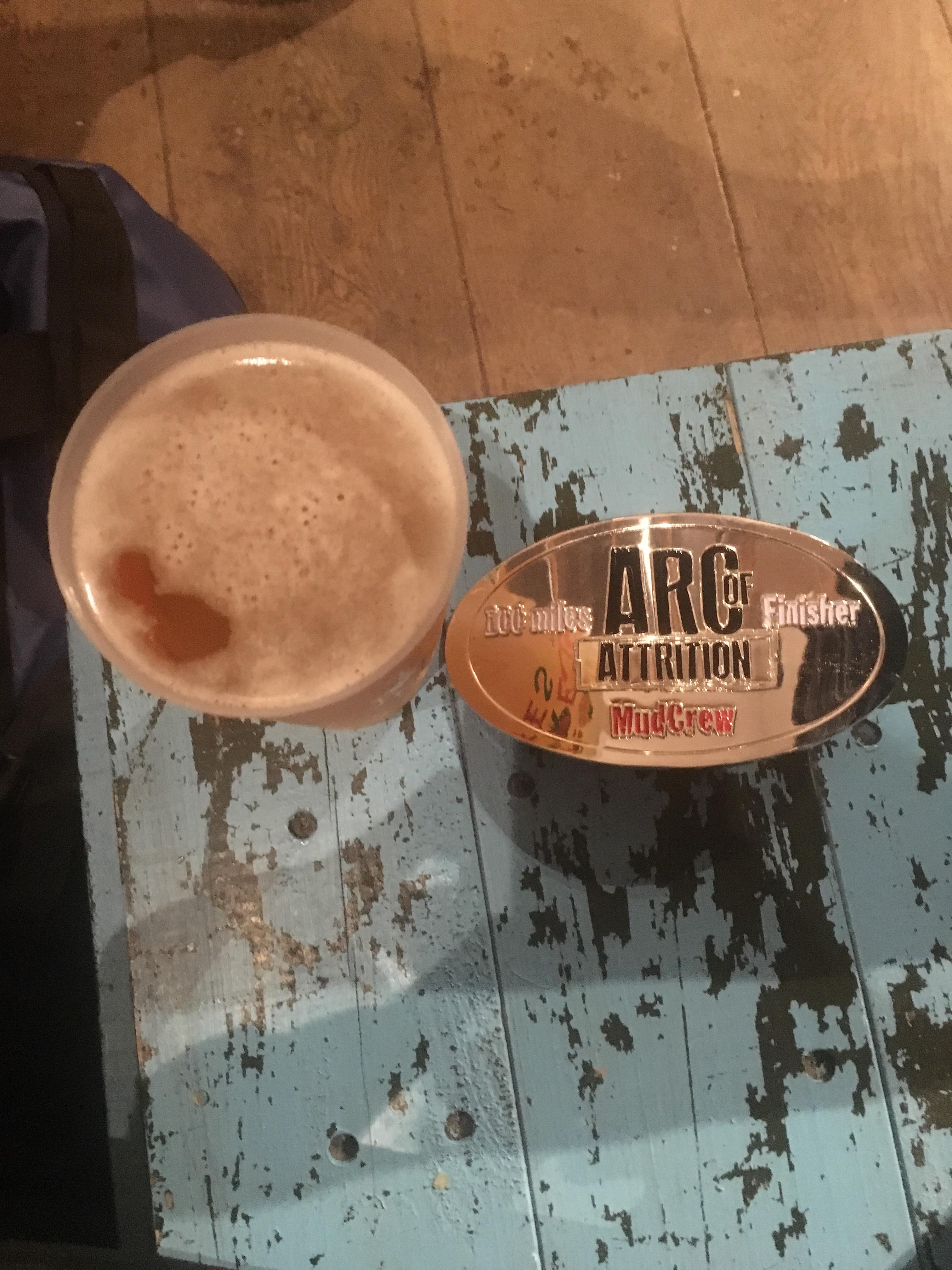
Next up for me is a very different challenge. 60 hours on a 1.1 mile loop at Enduroman in May. Turns out Carl has the course record of 202 miles! Small world!
Well done everyone who took part in the Arc 2019. To those of you that made it, congratulations – I know how good it feels to have got it done.
To those who fell short this year, you will be back, you will have learnt loads from this years experience and you will beat the Arc. I was lucky I only had to come back once, but Im sure we have all read about the guy who after 5 attempts has finally beaten the Arc.
Until next year!



